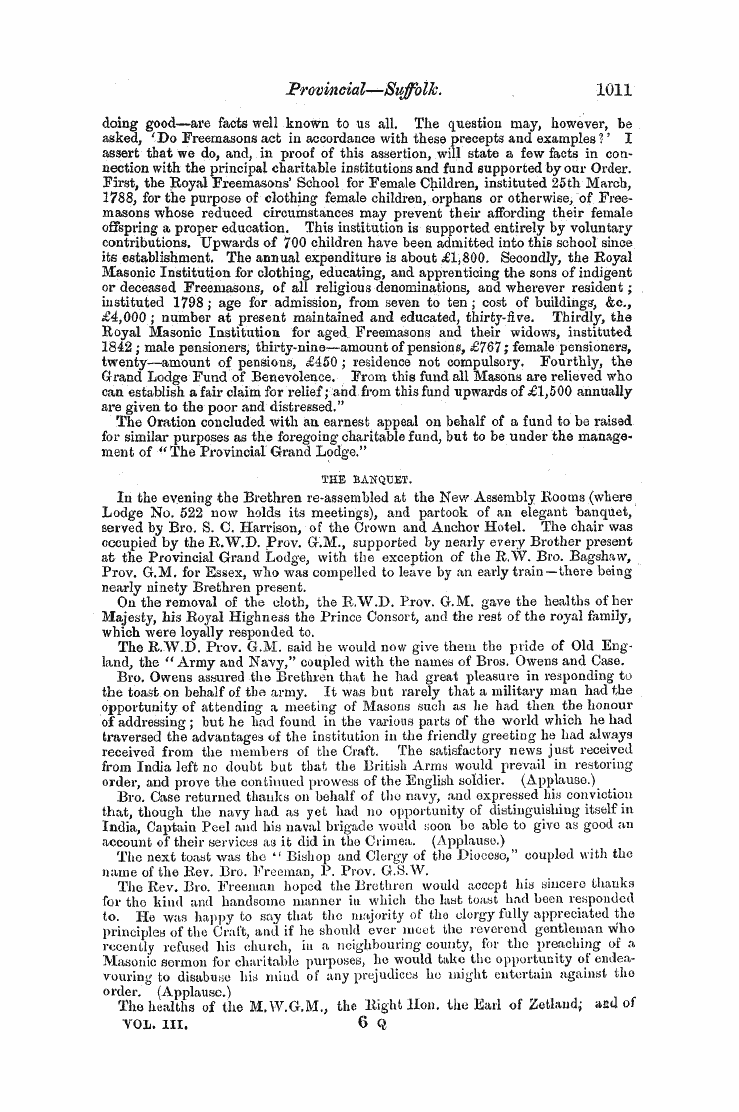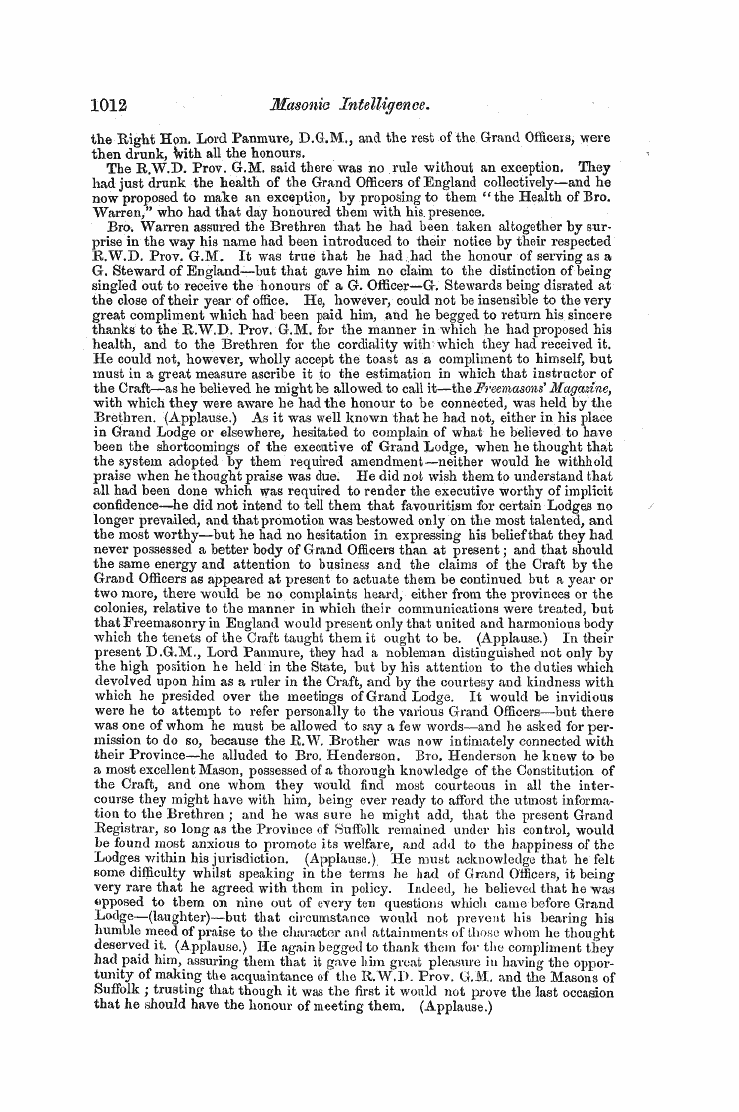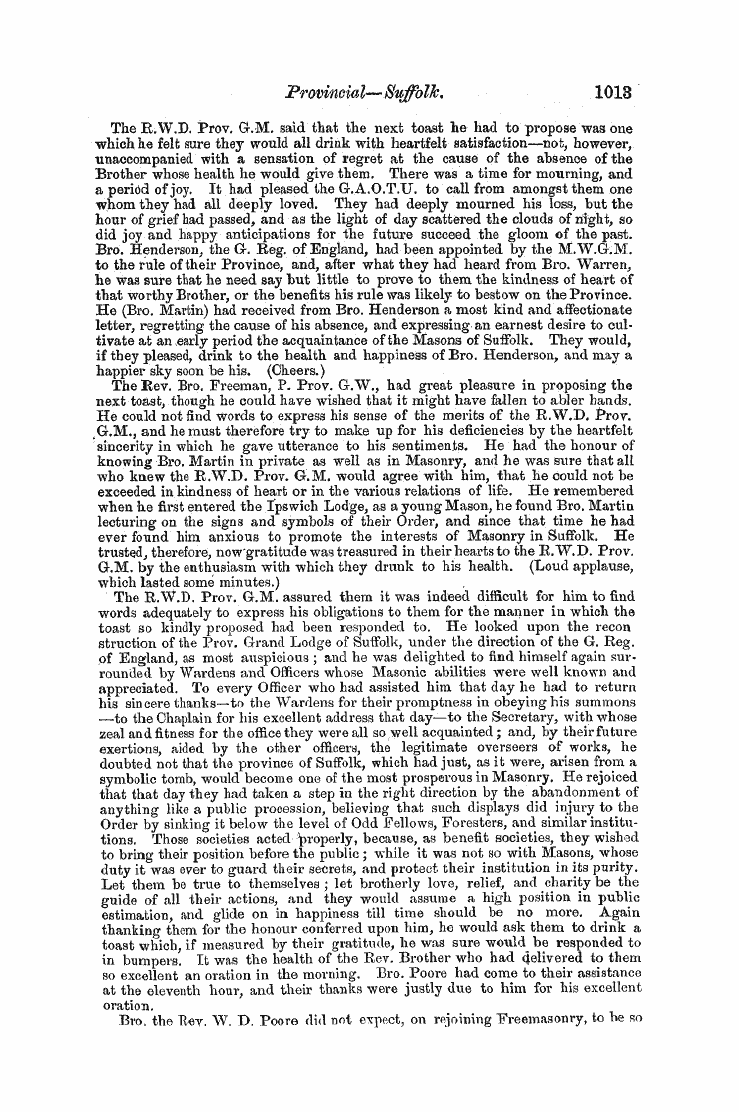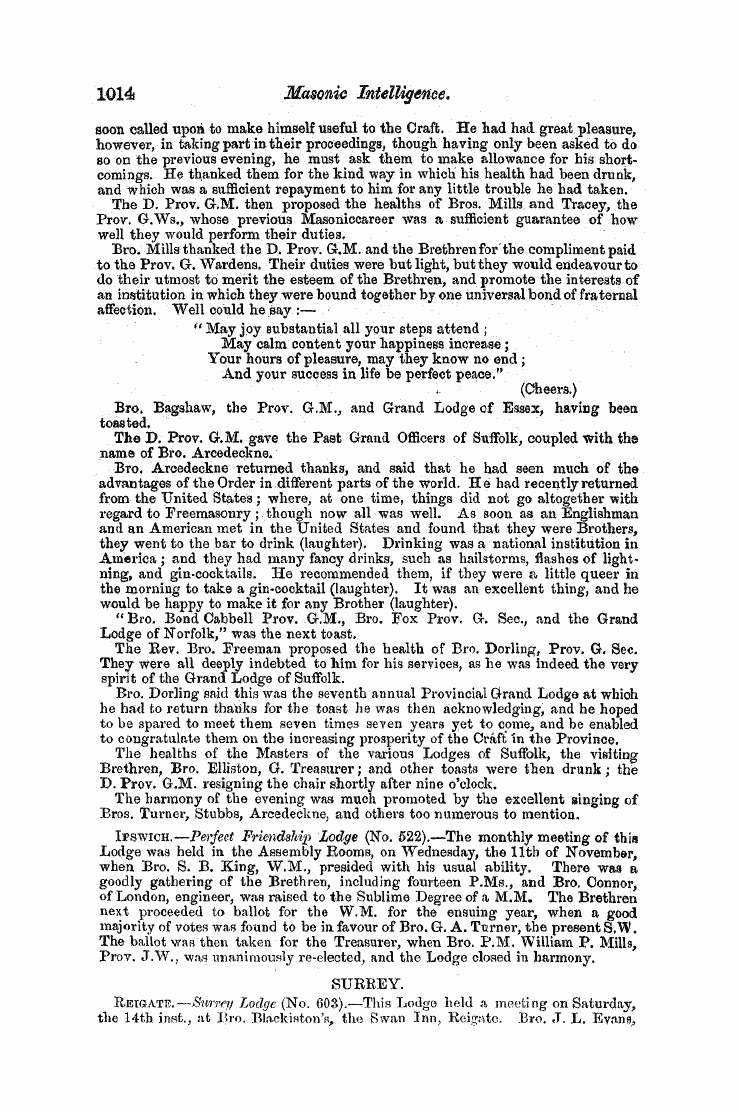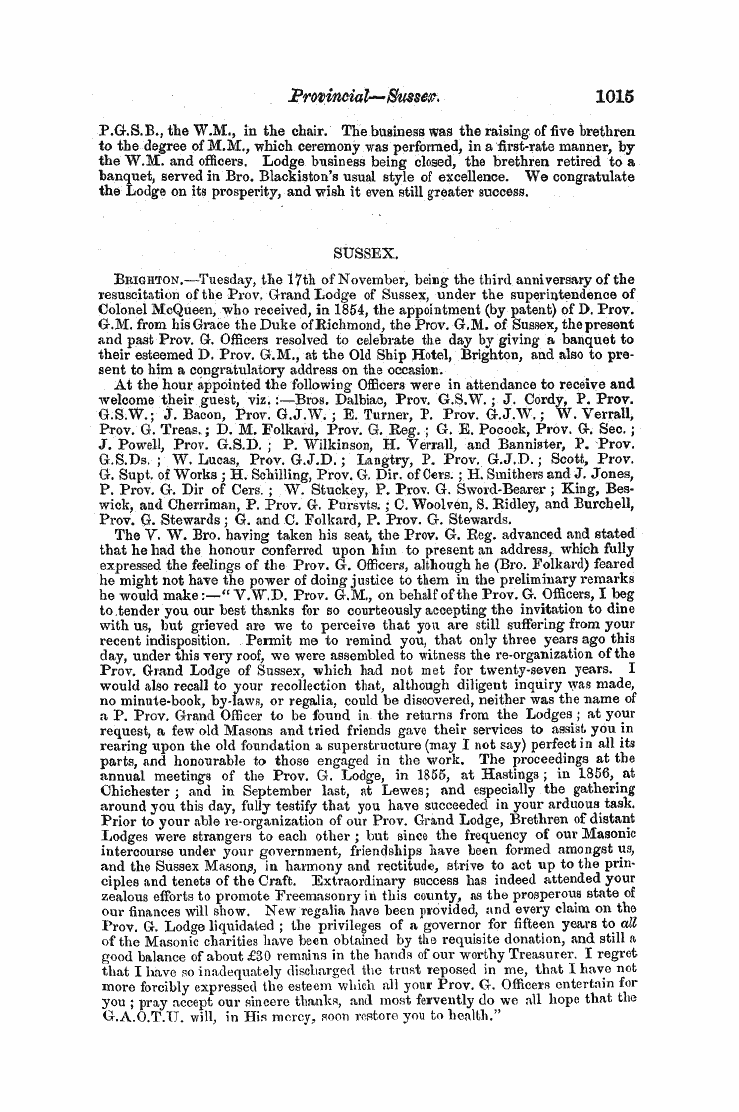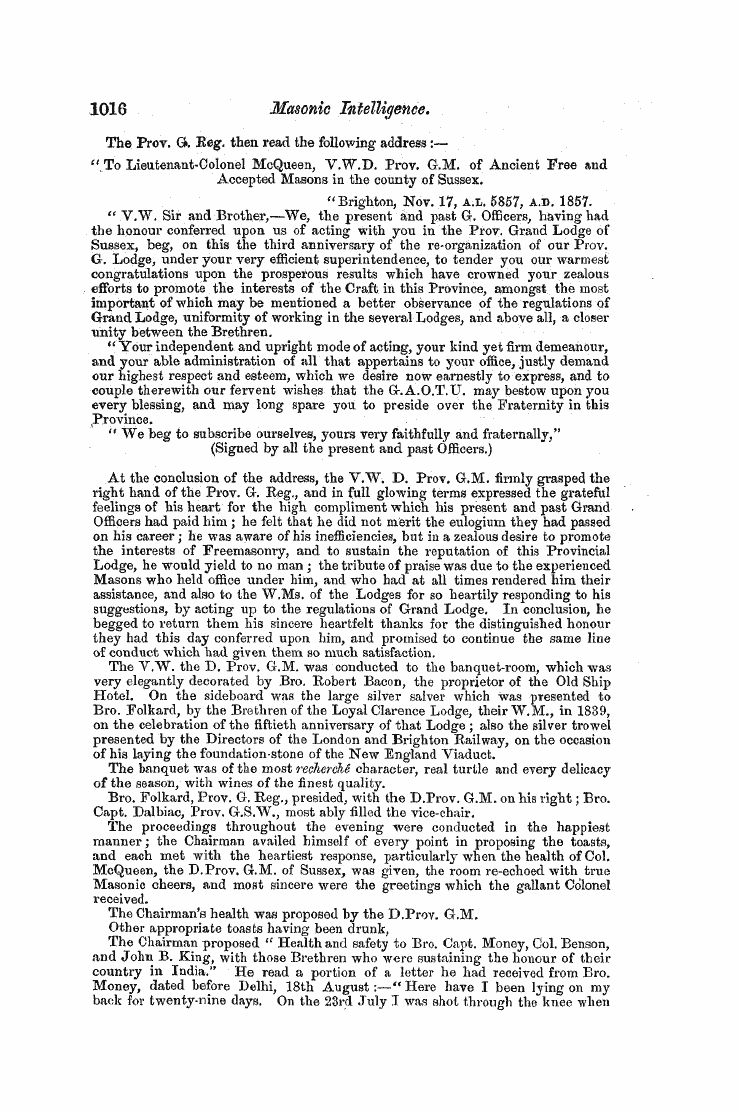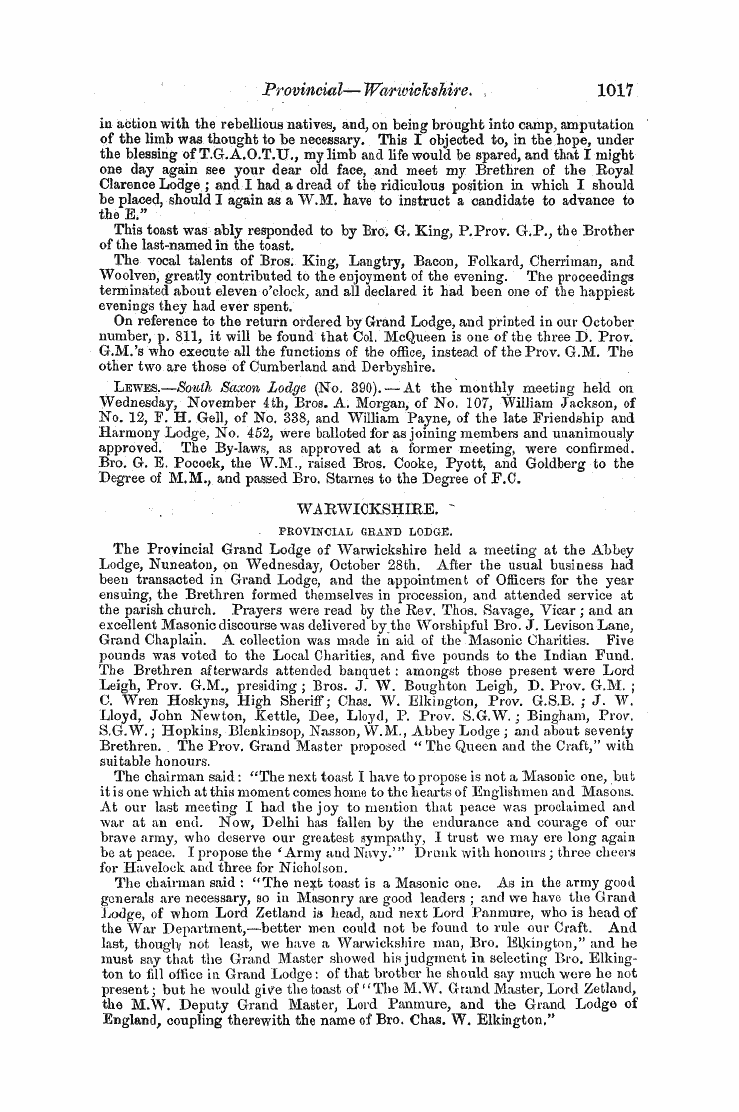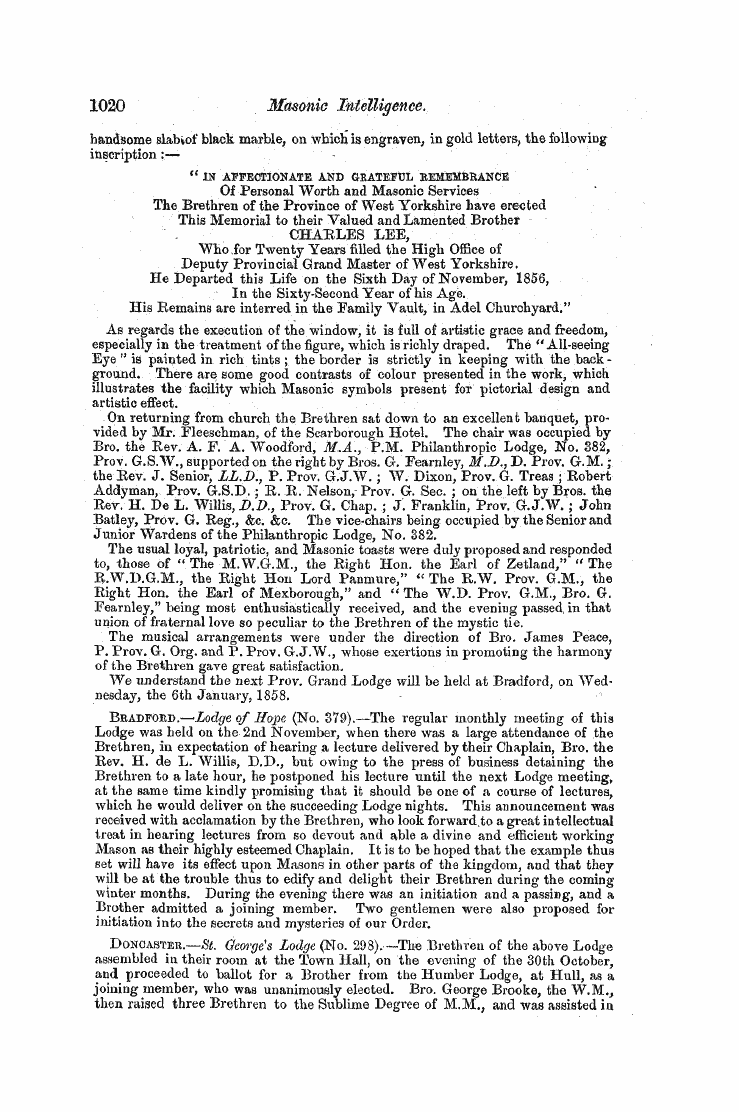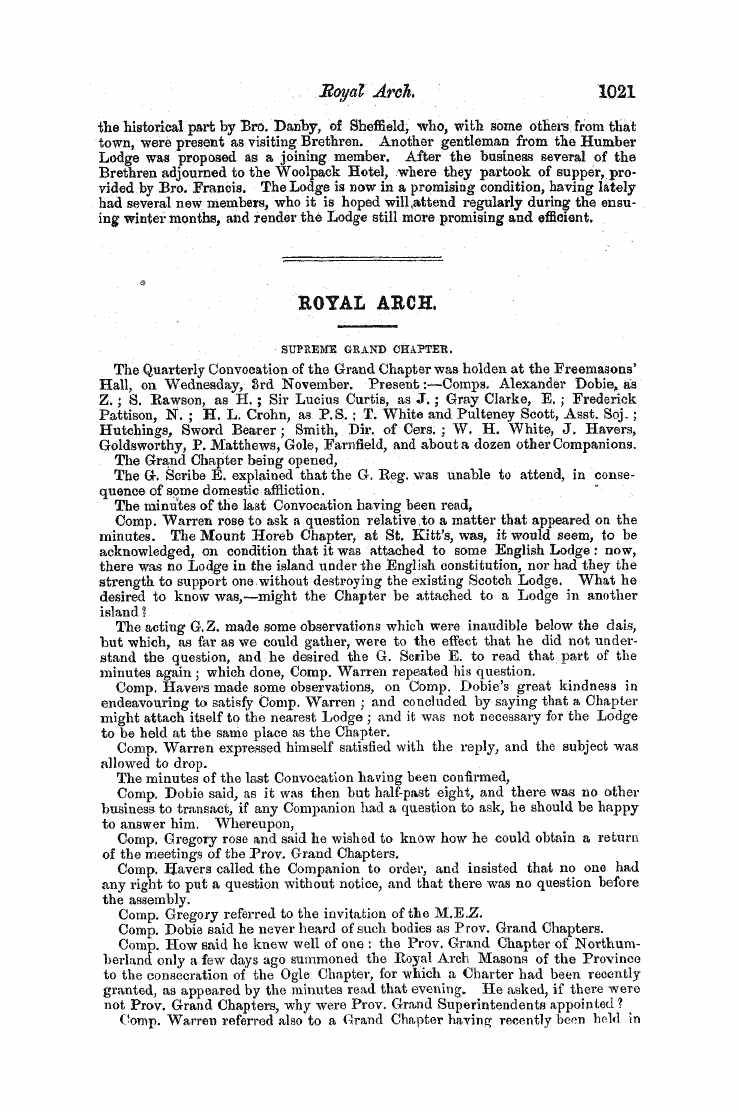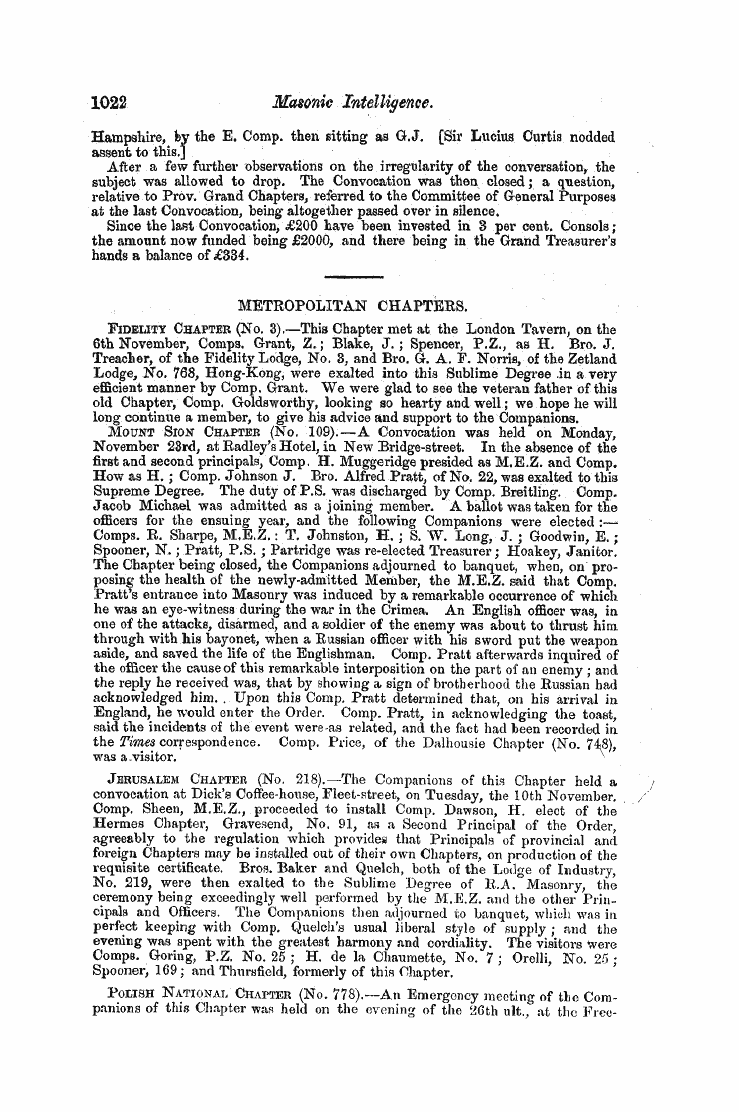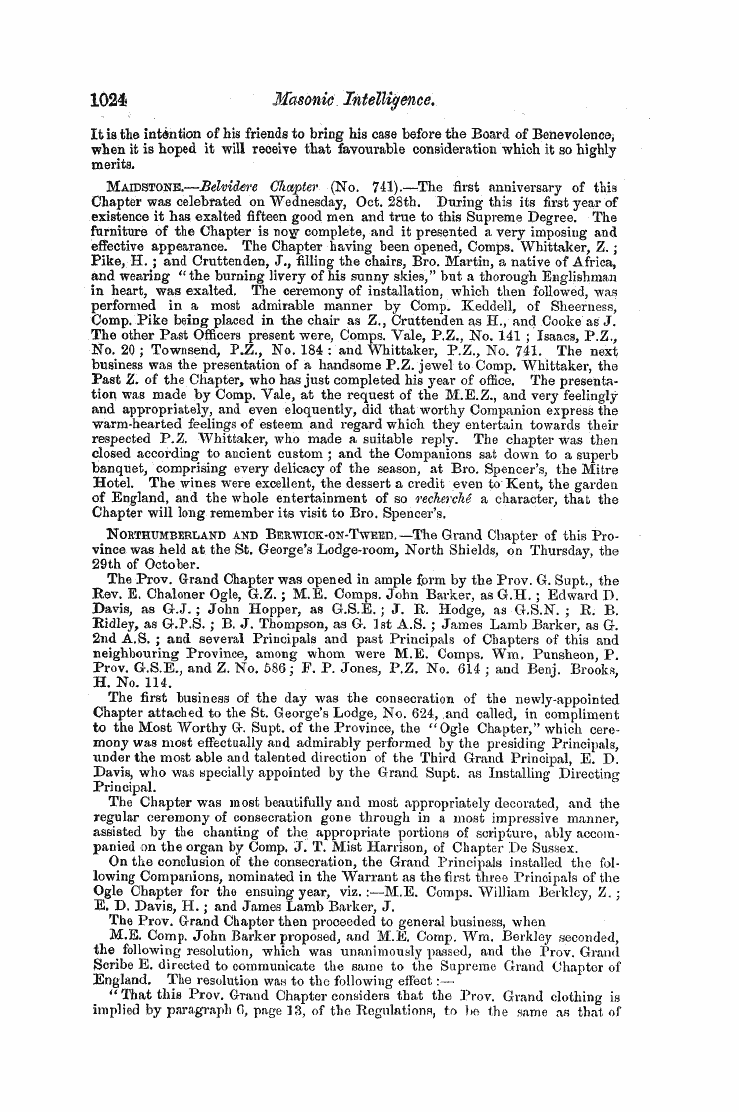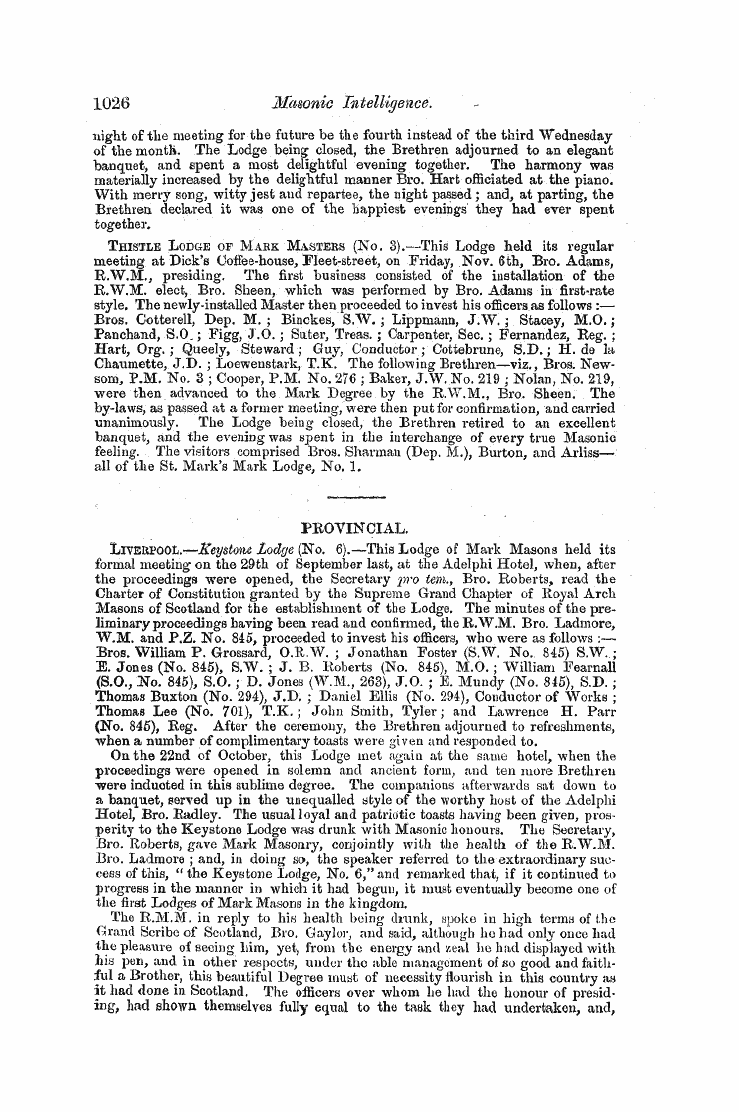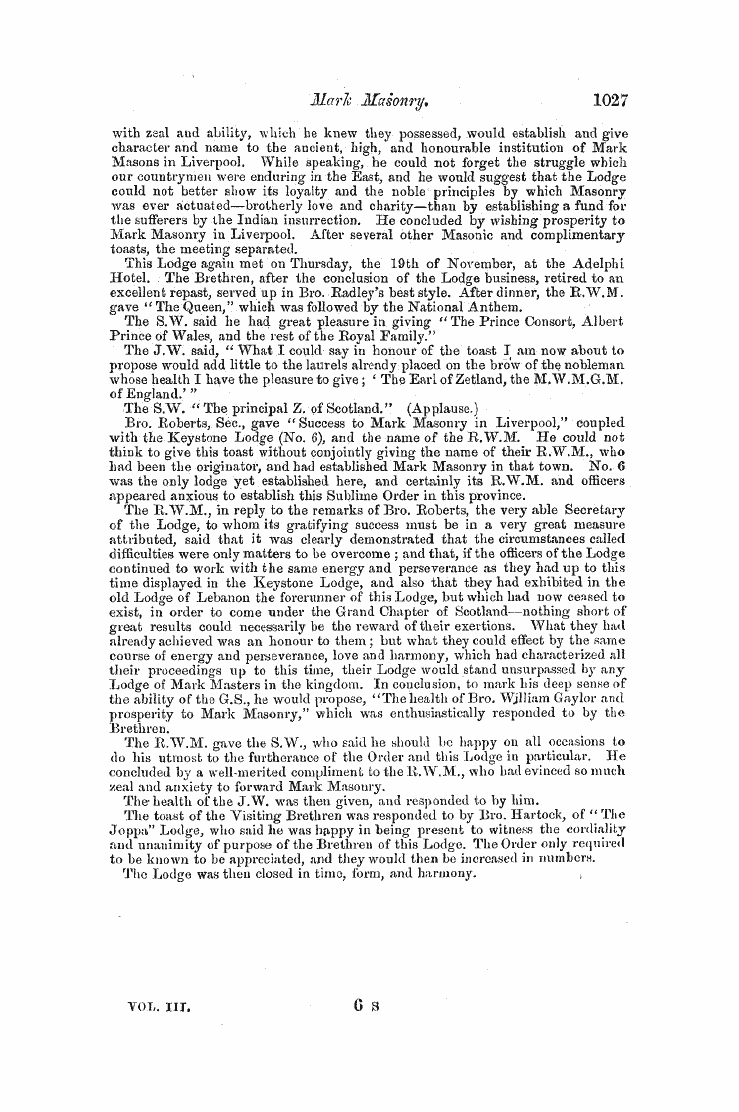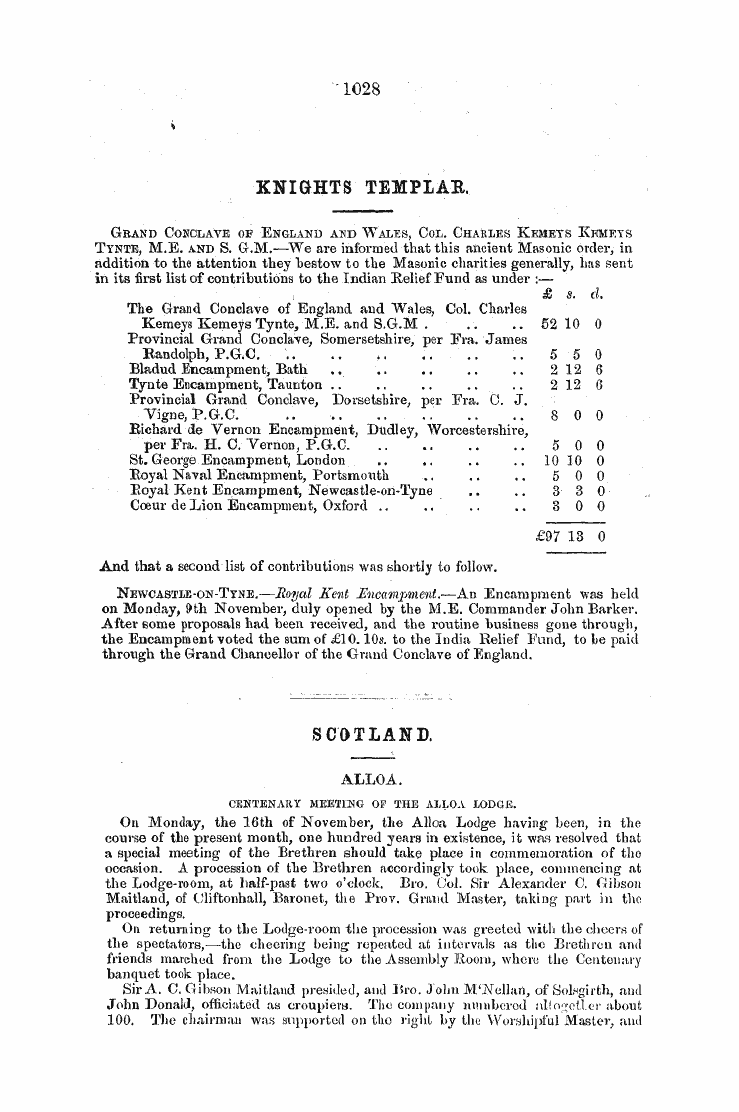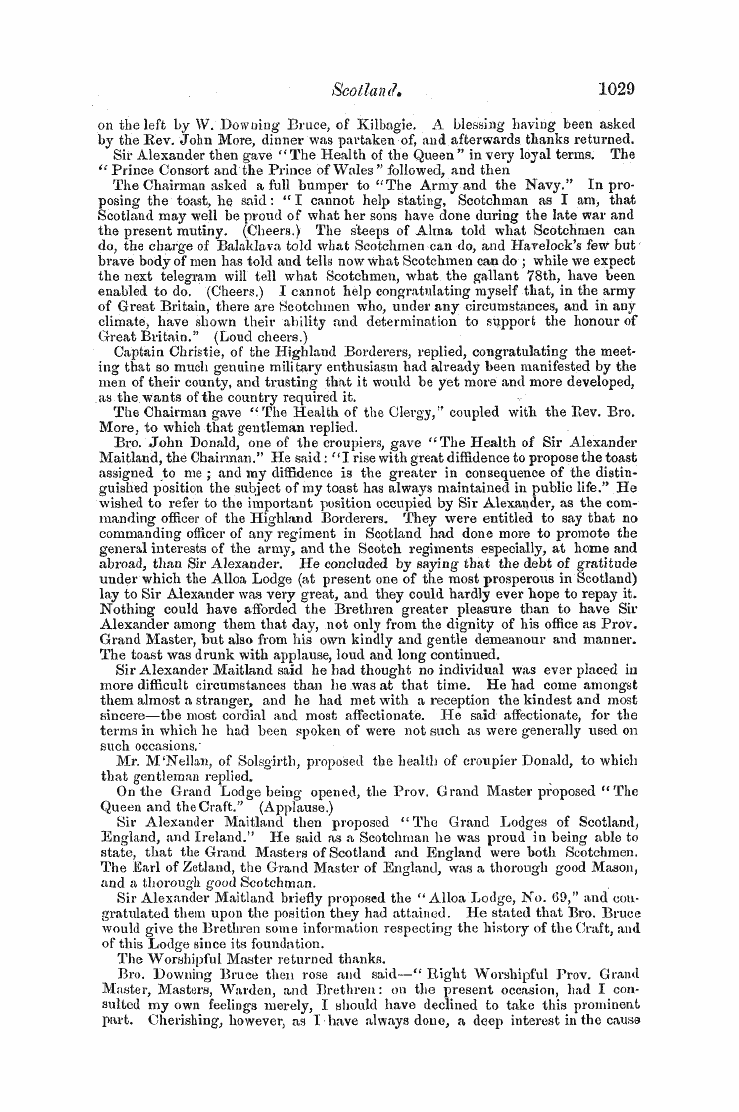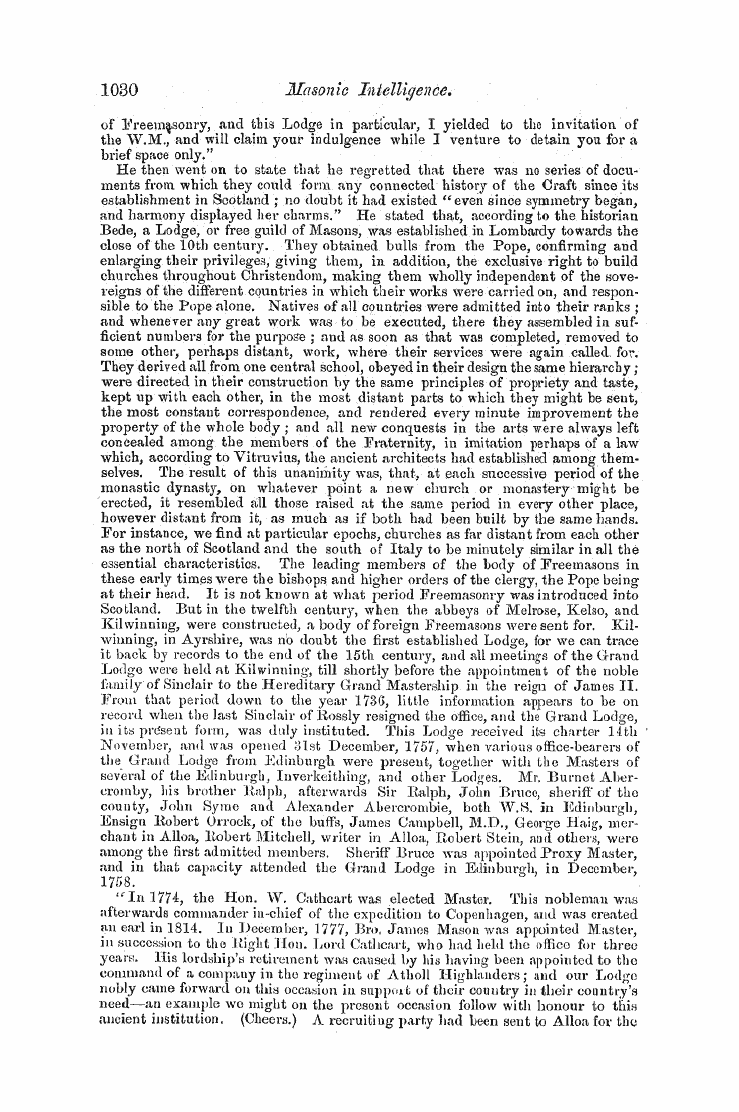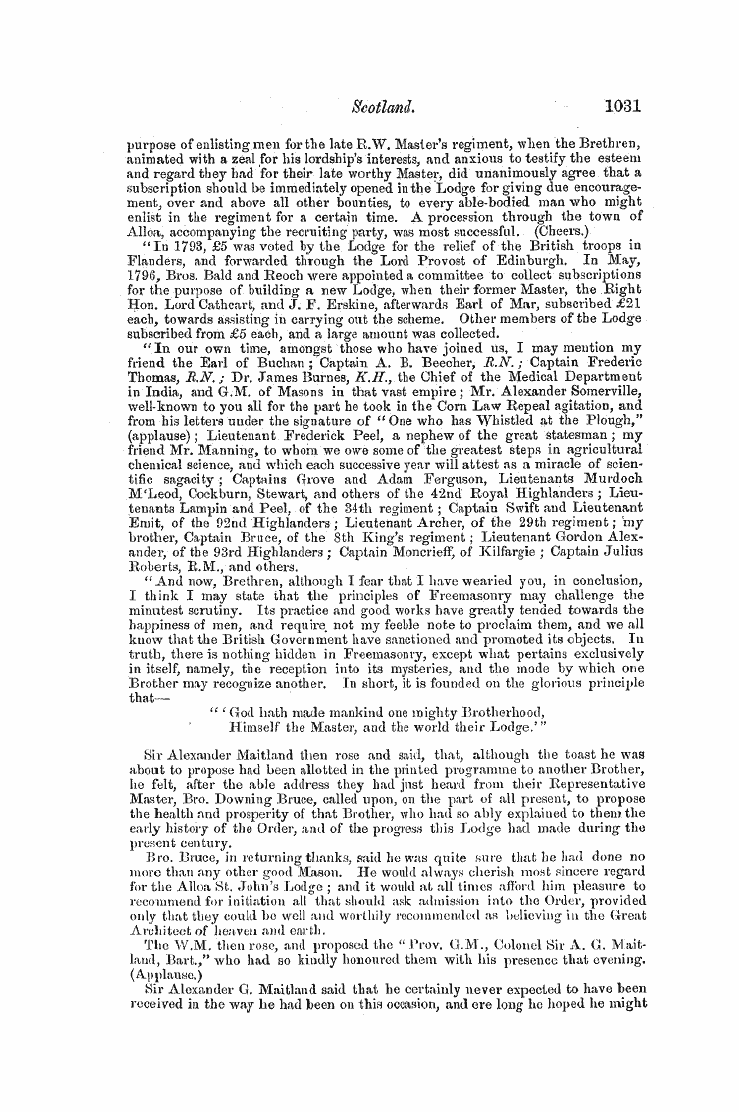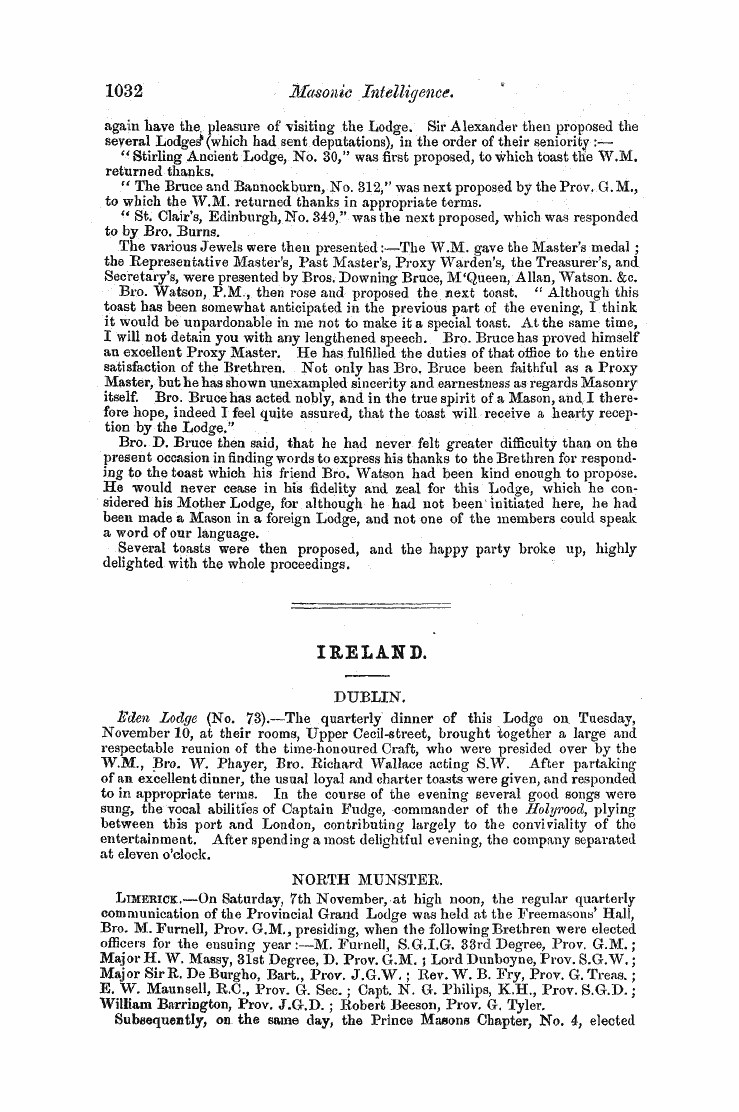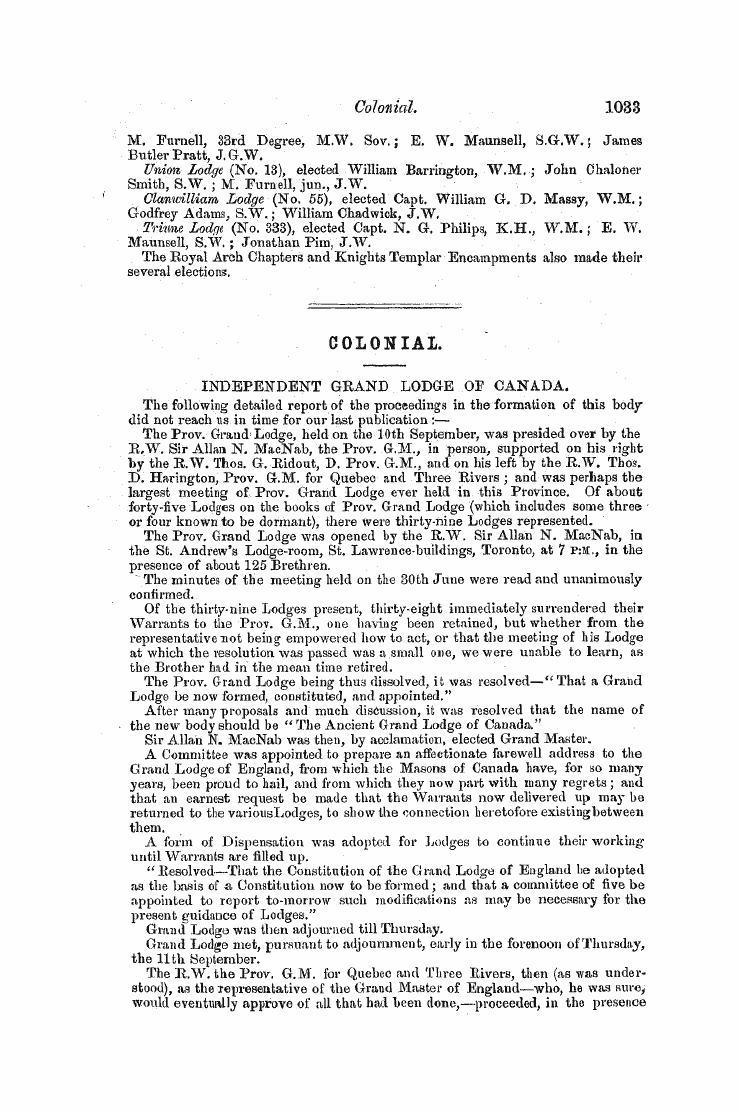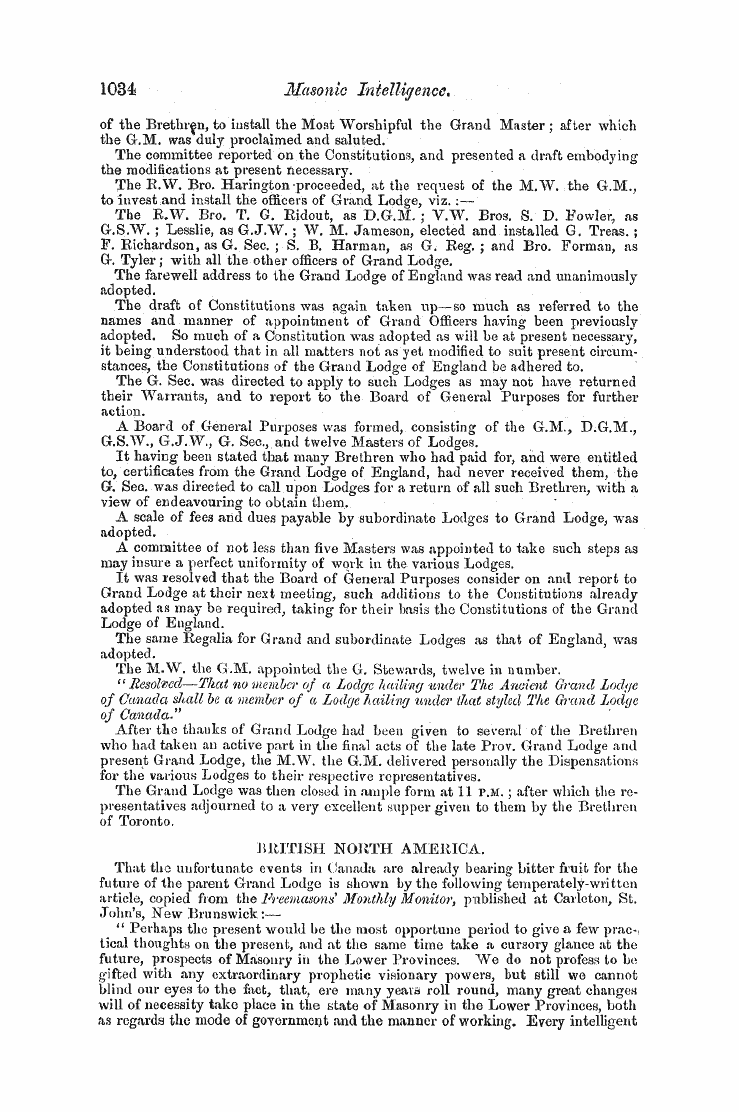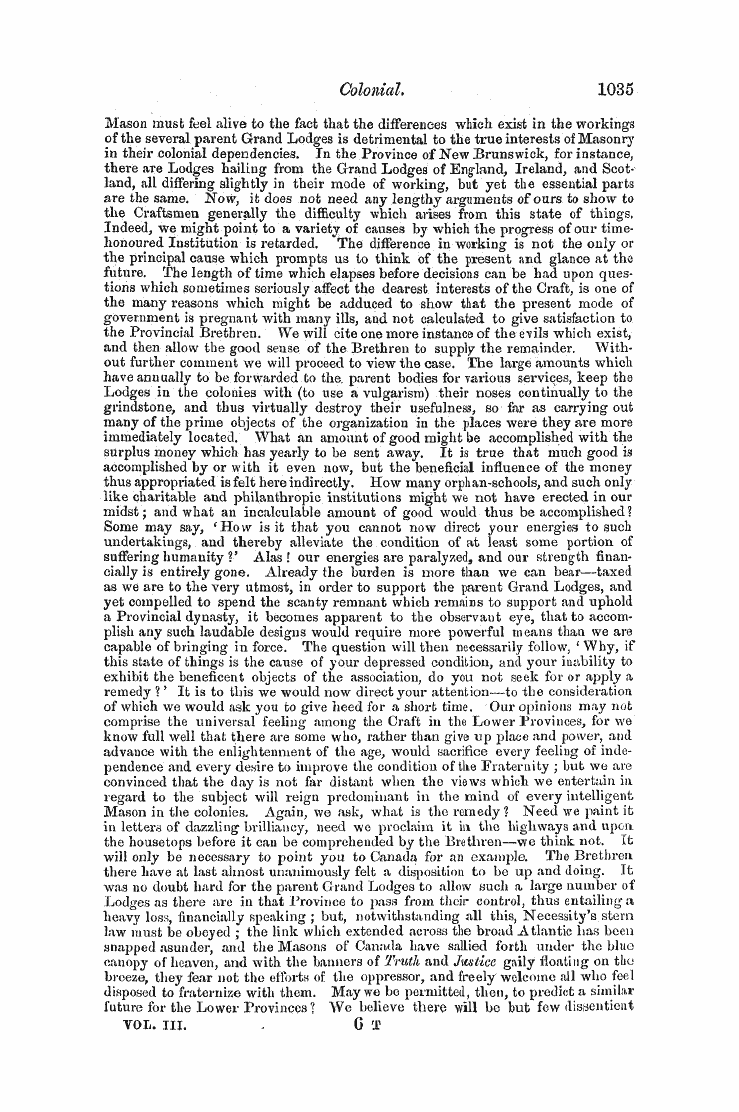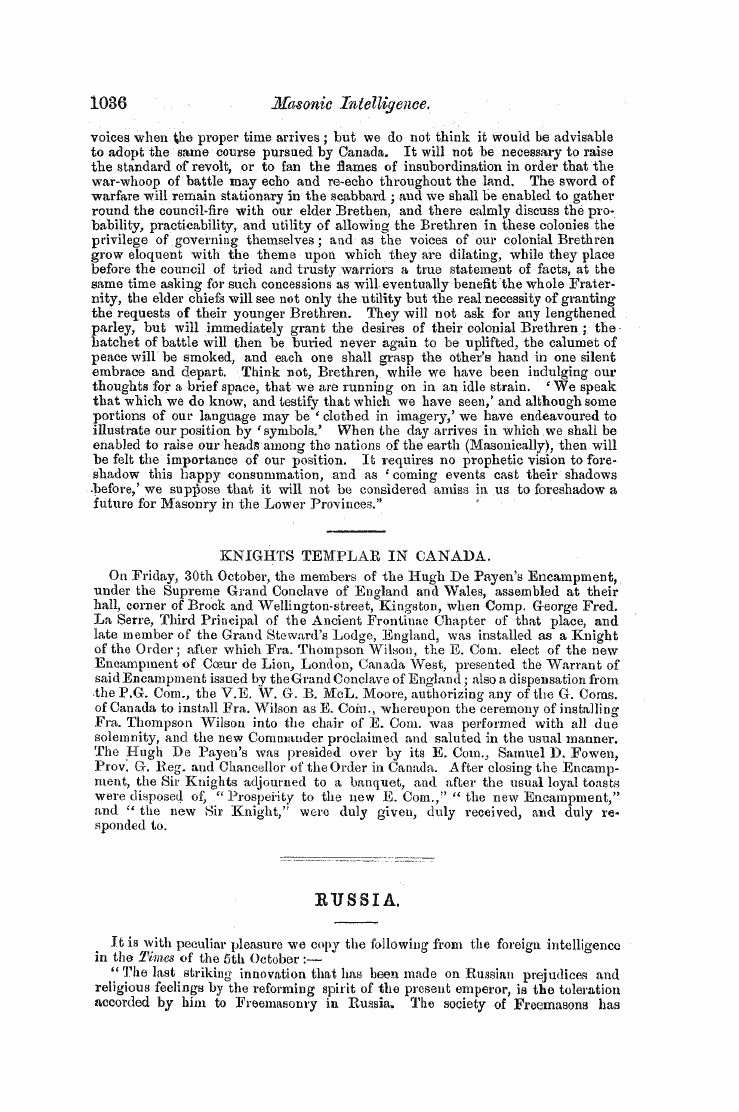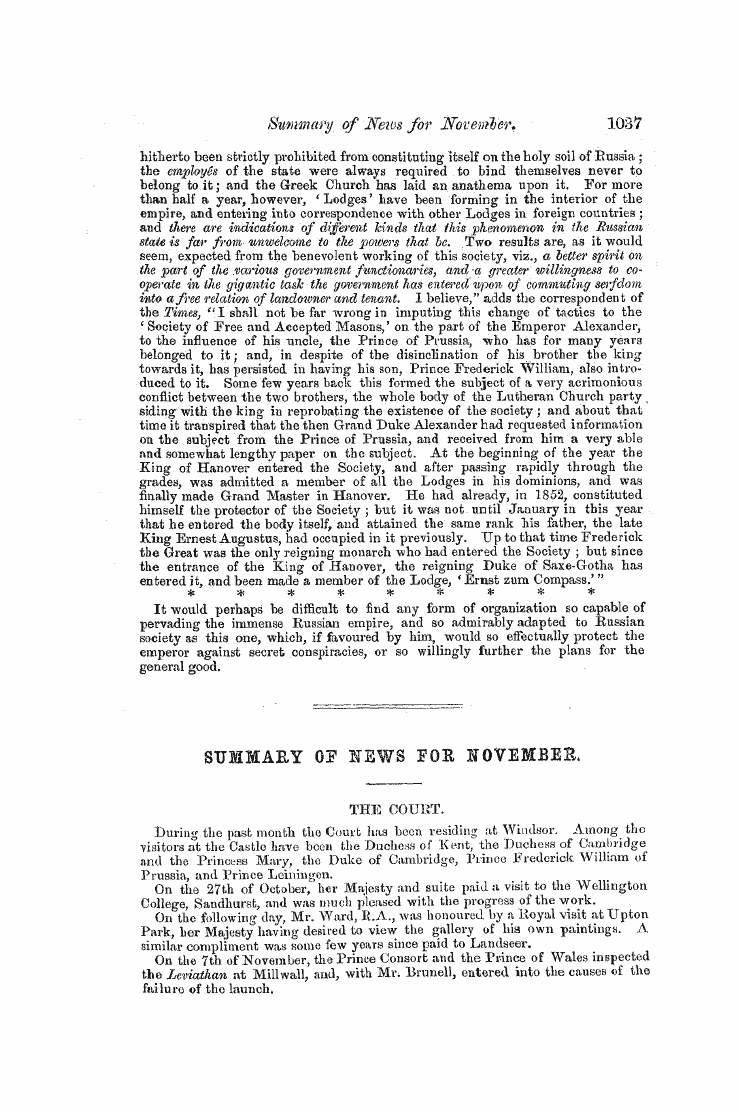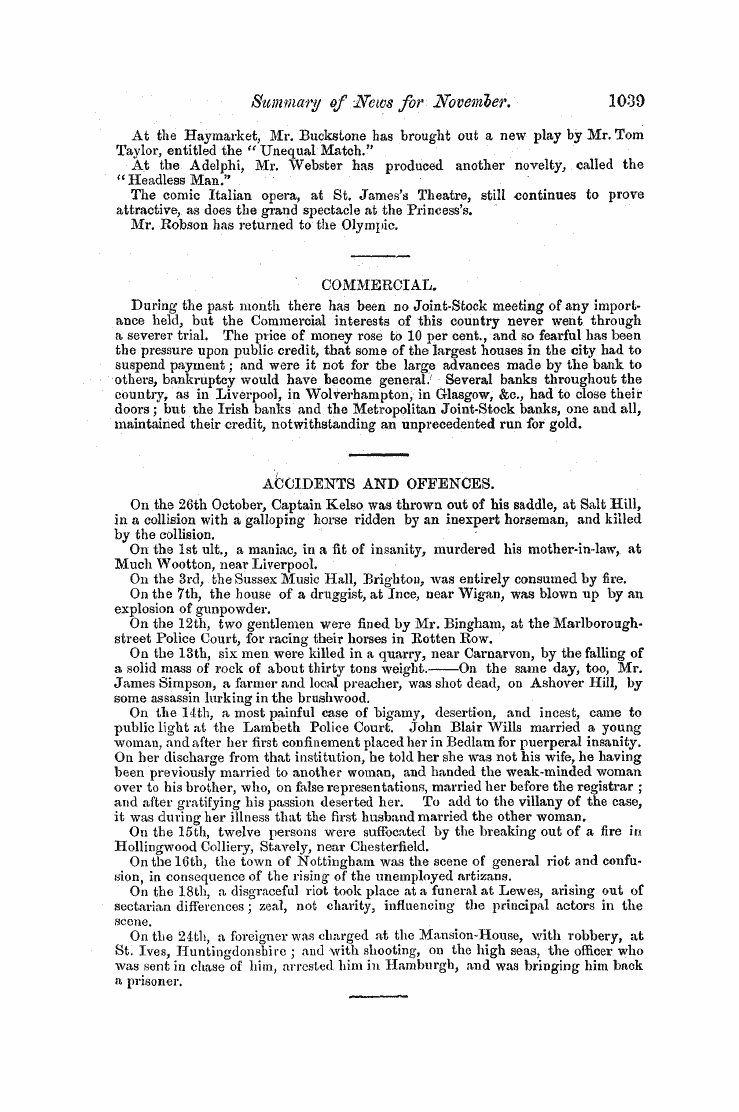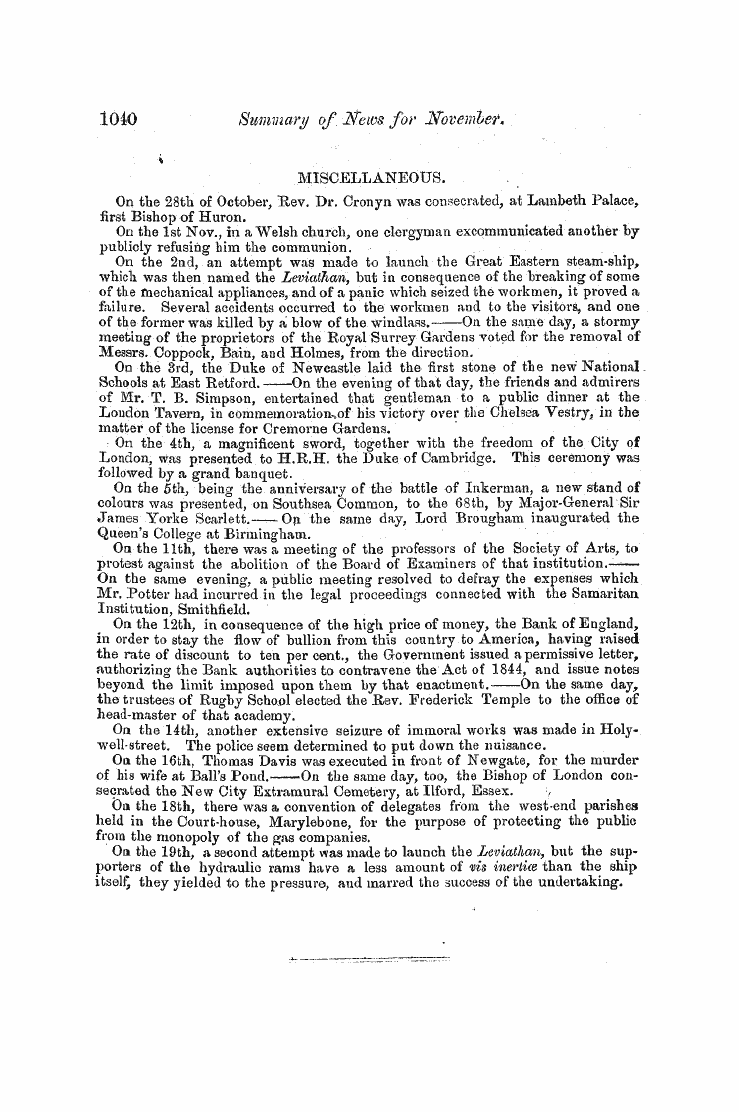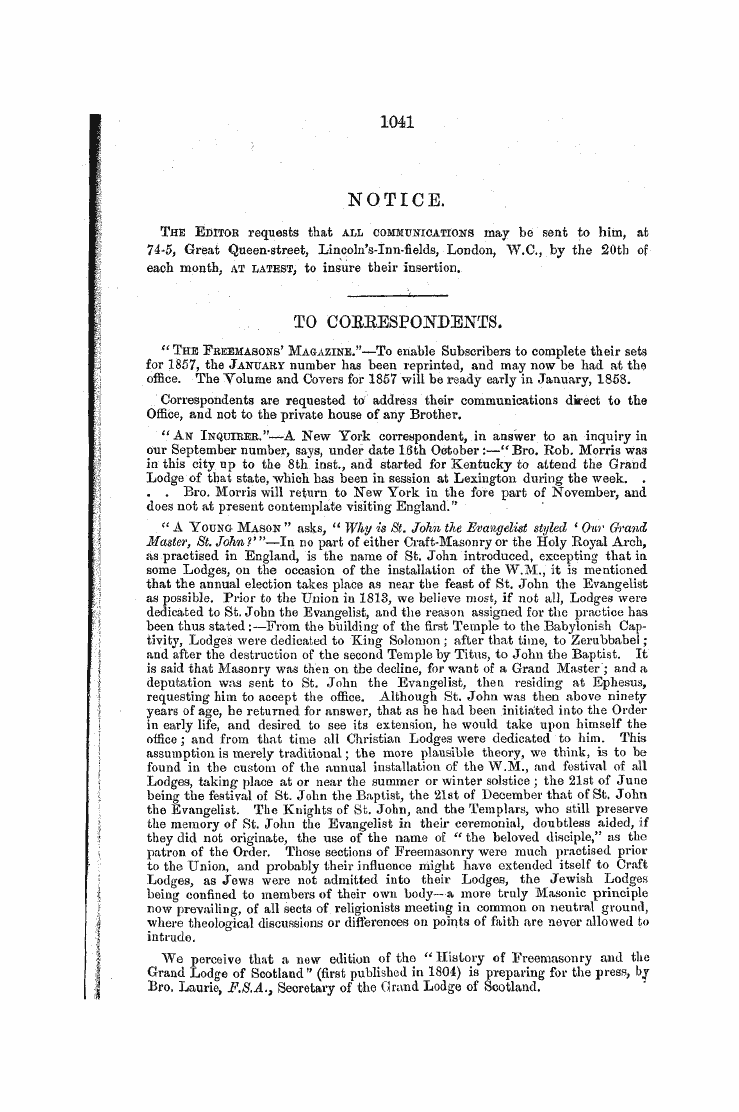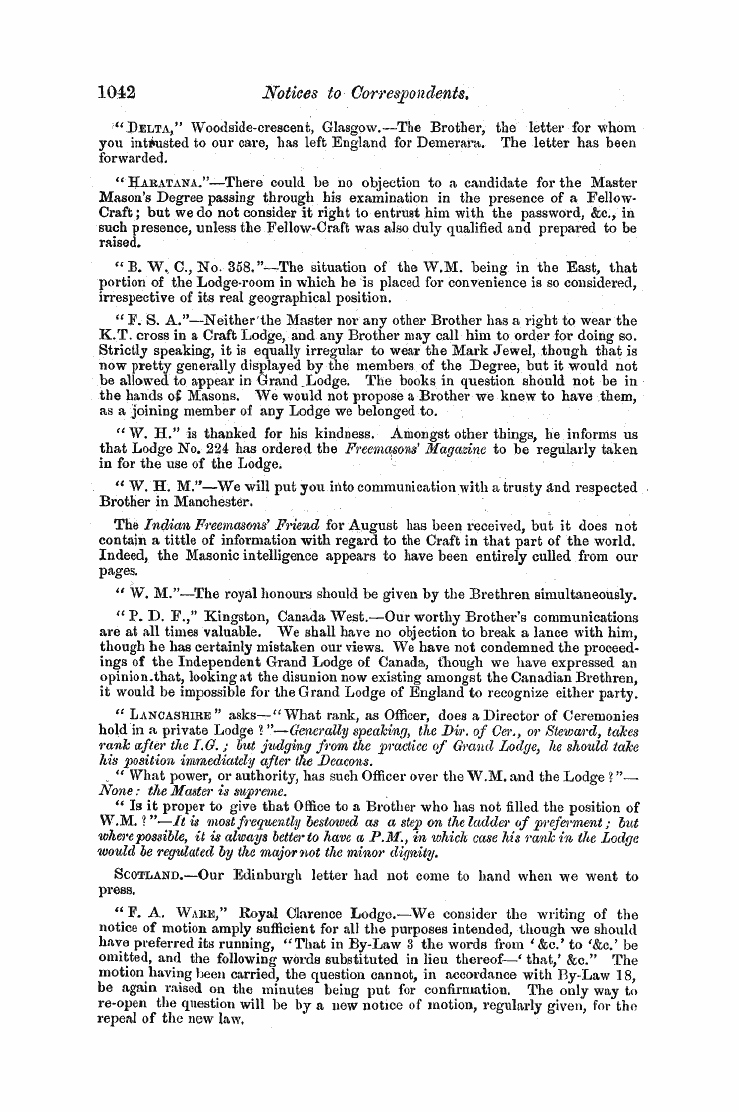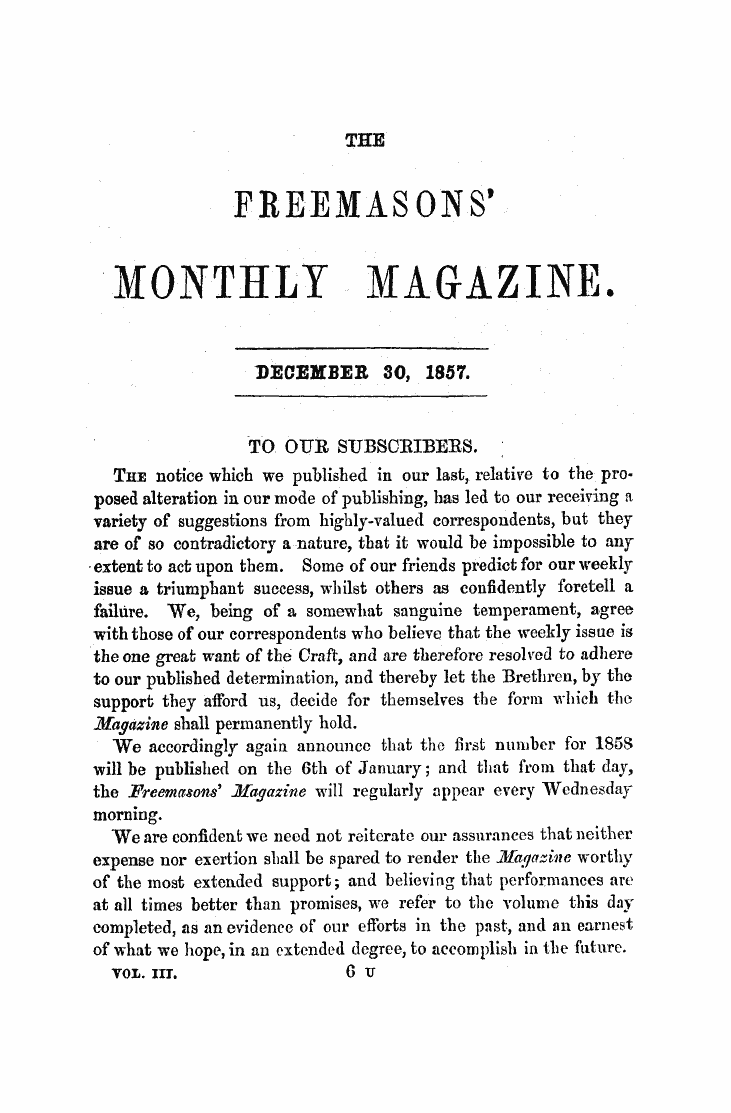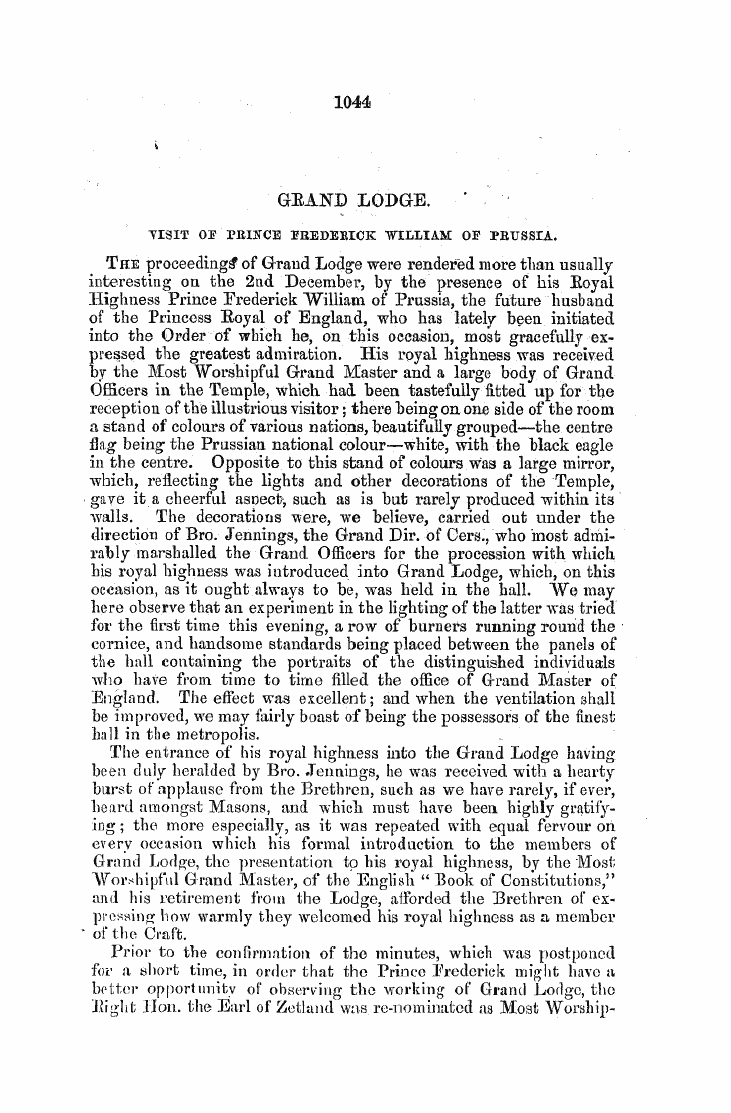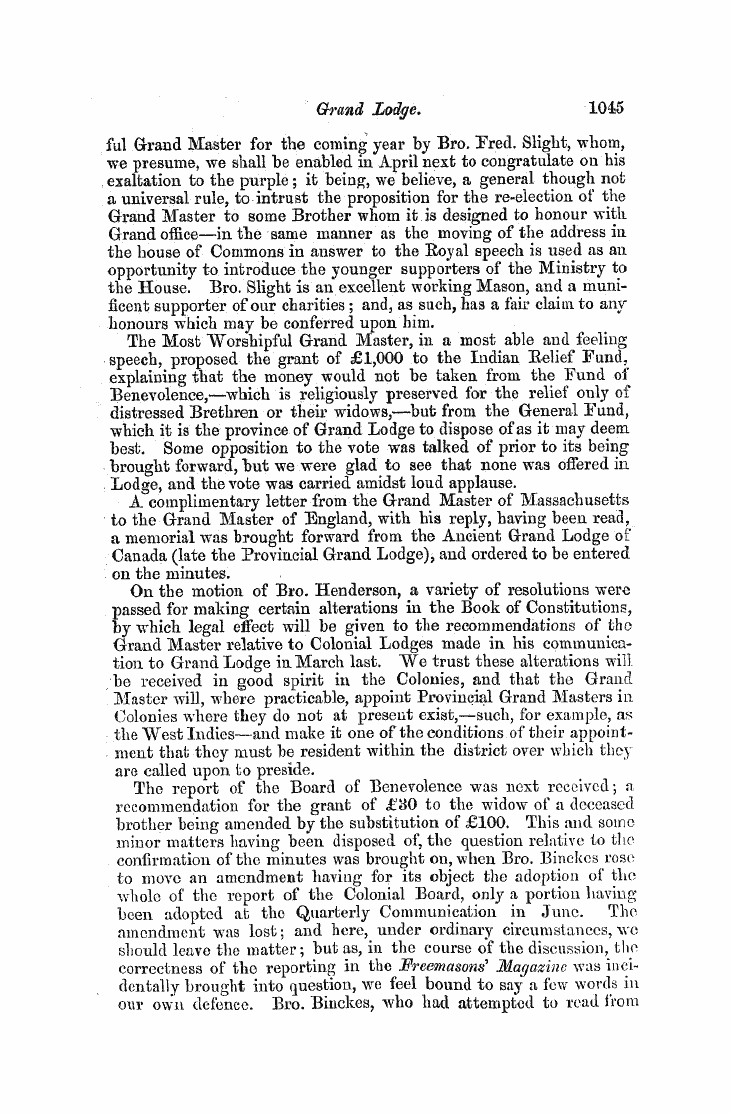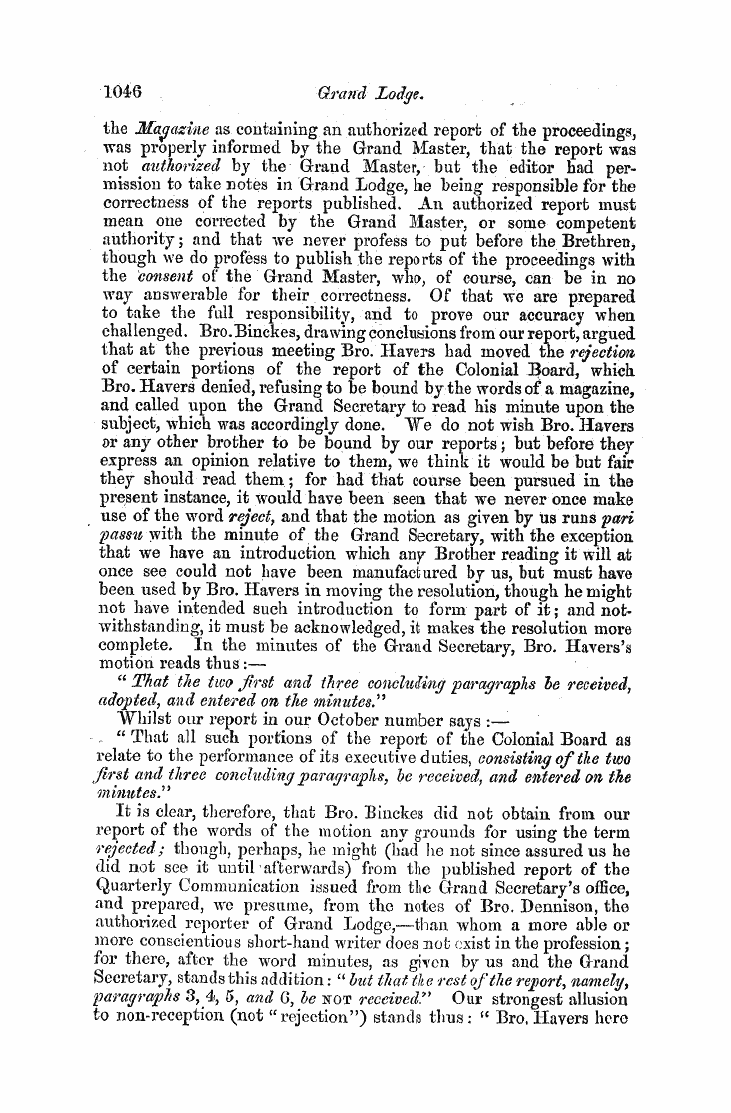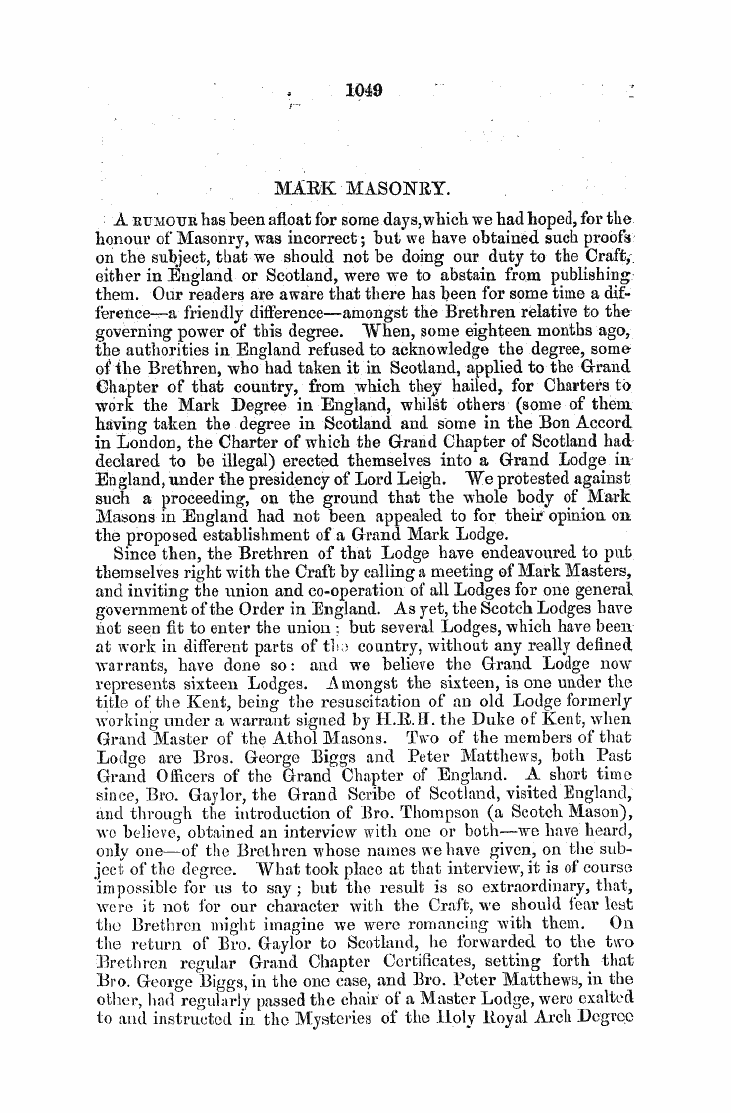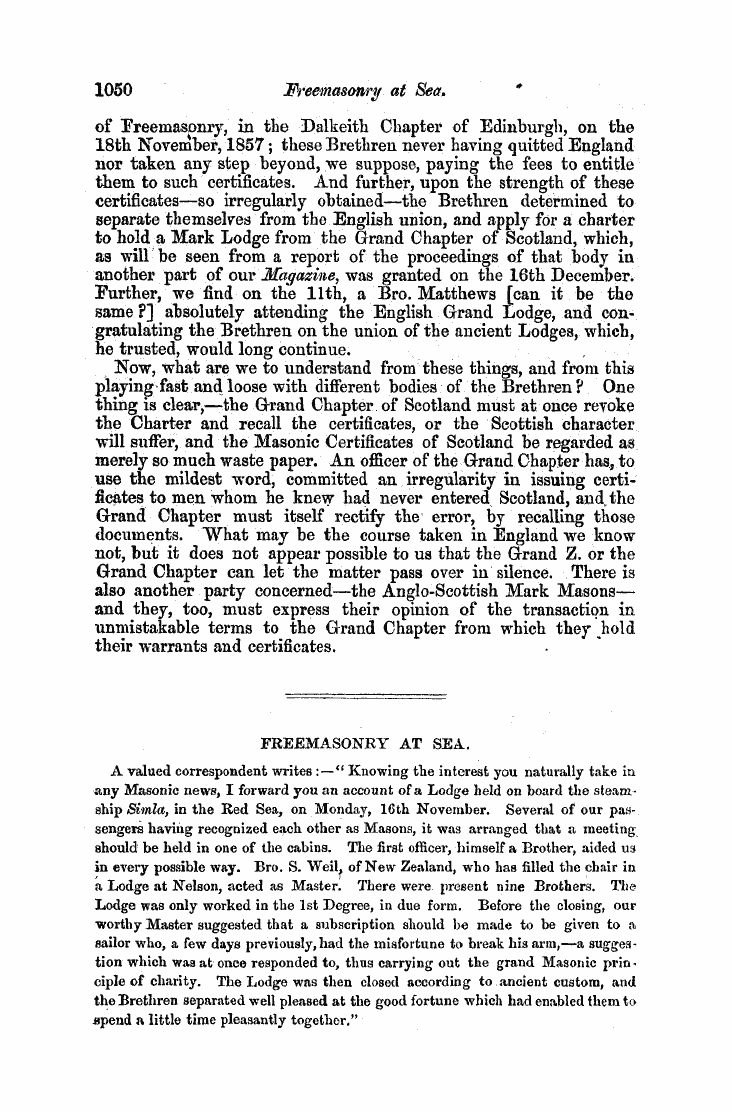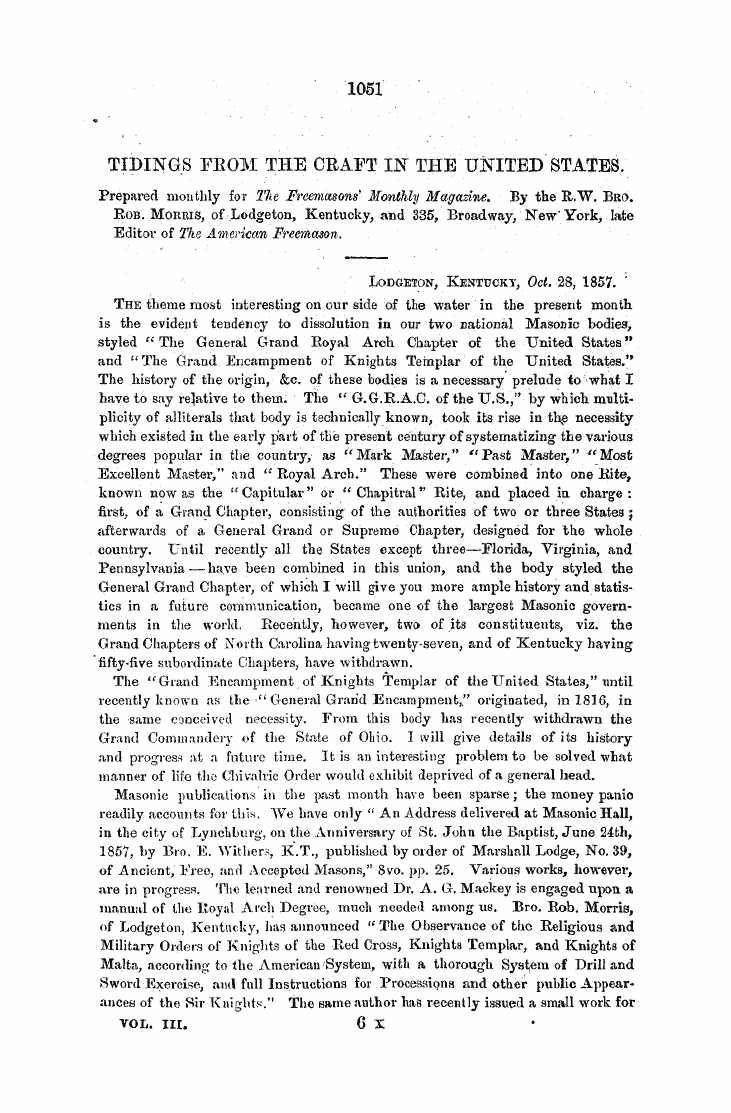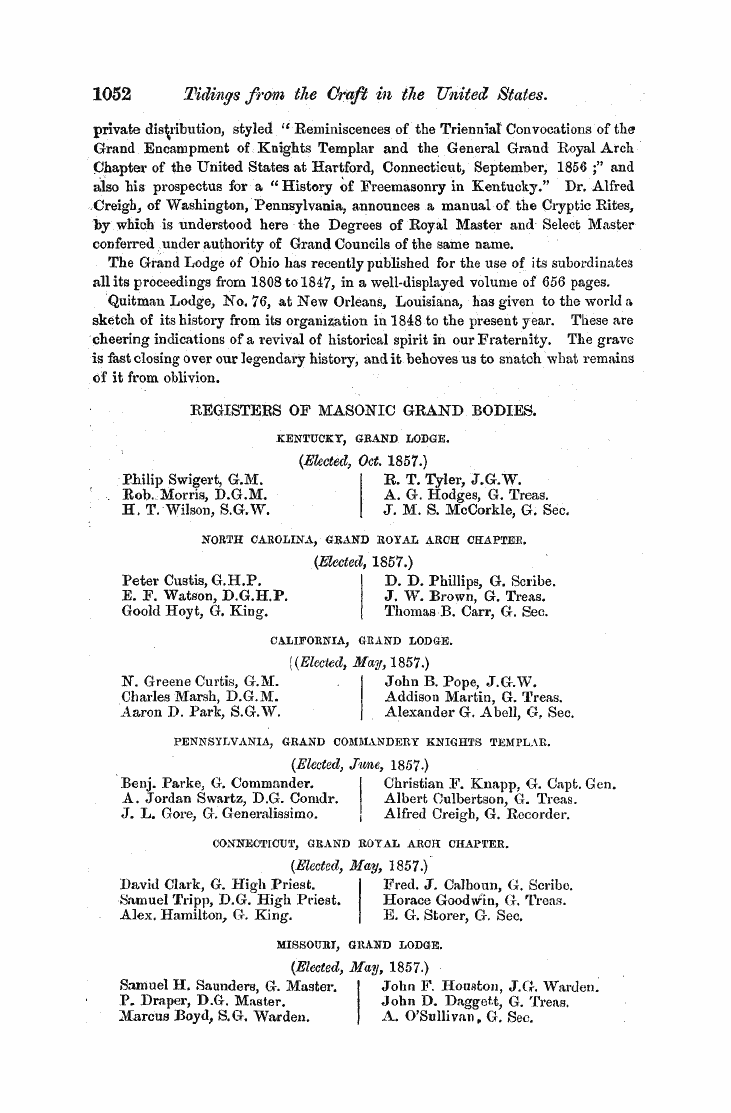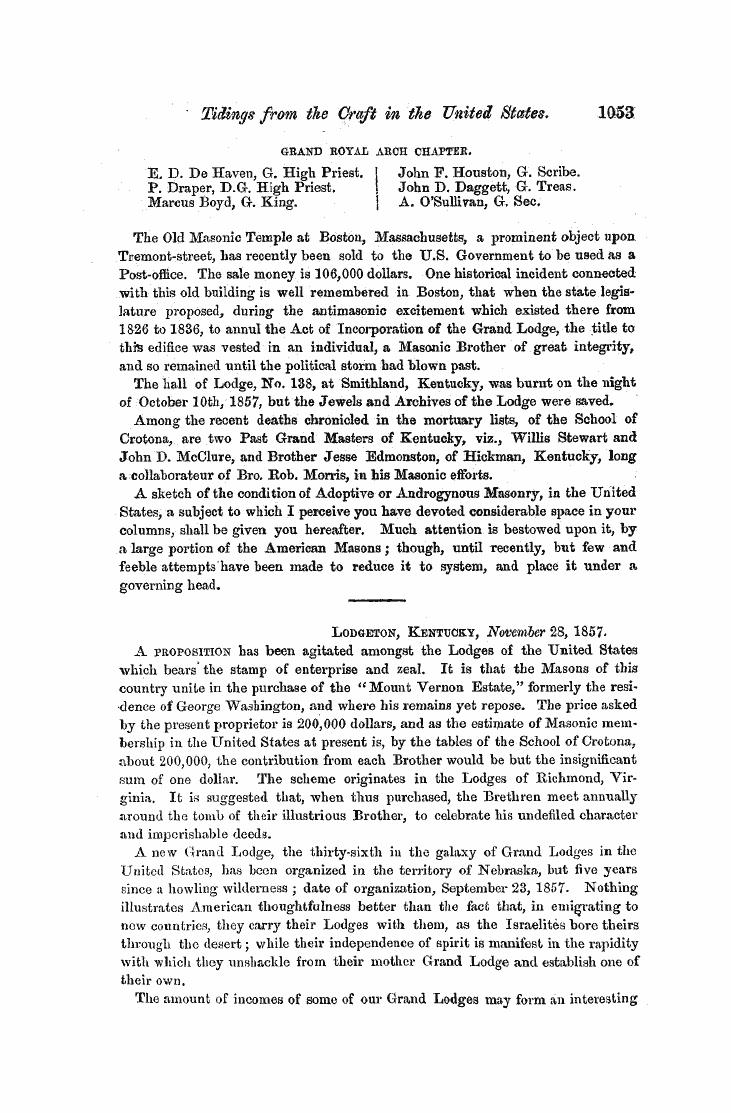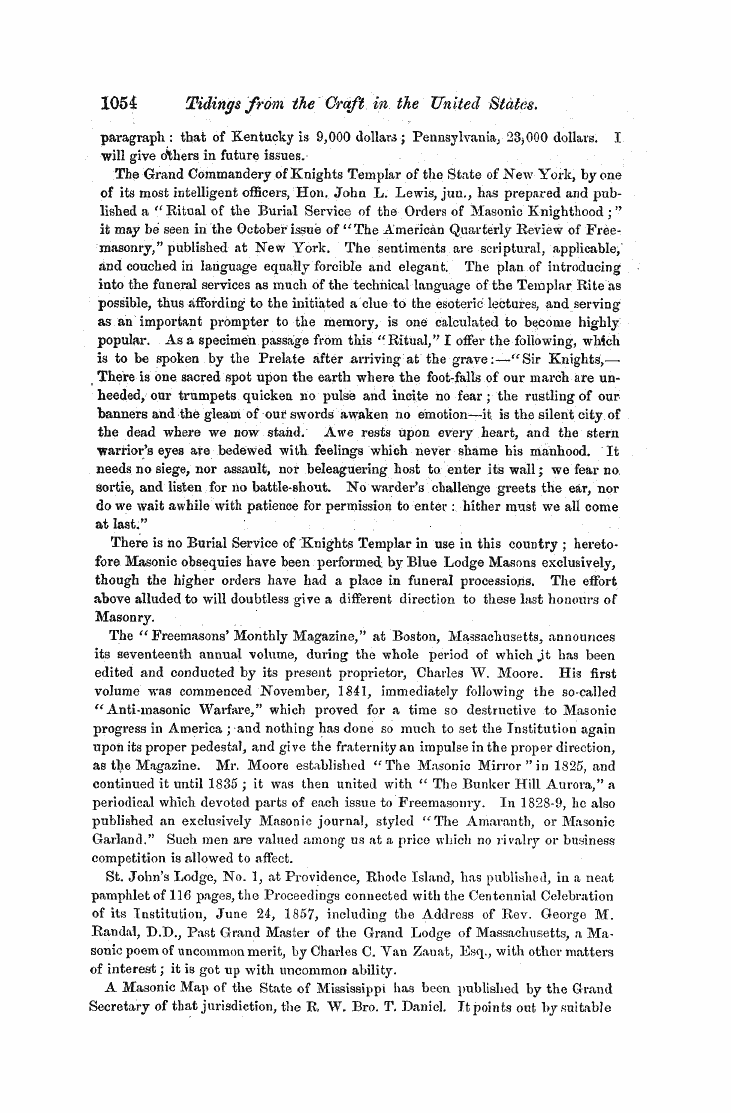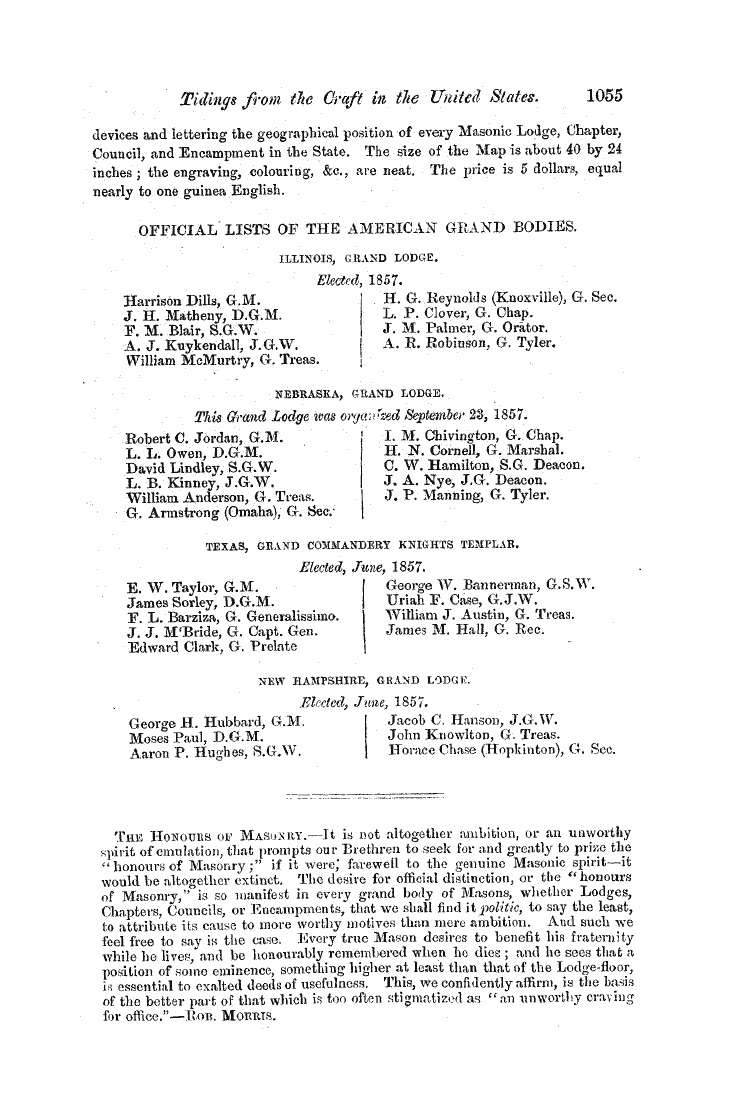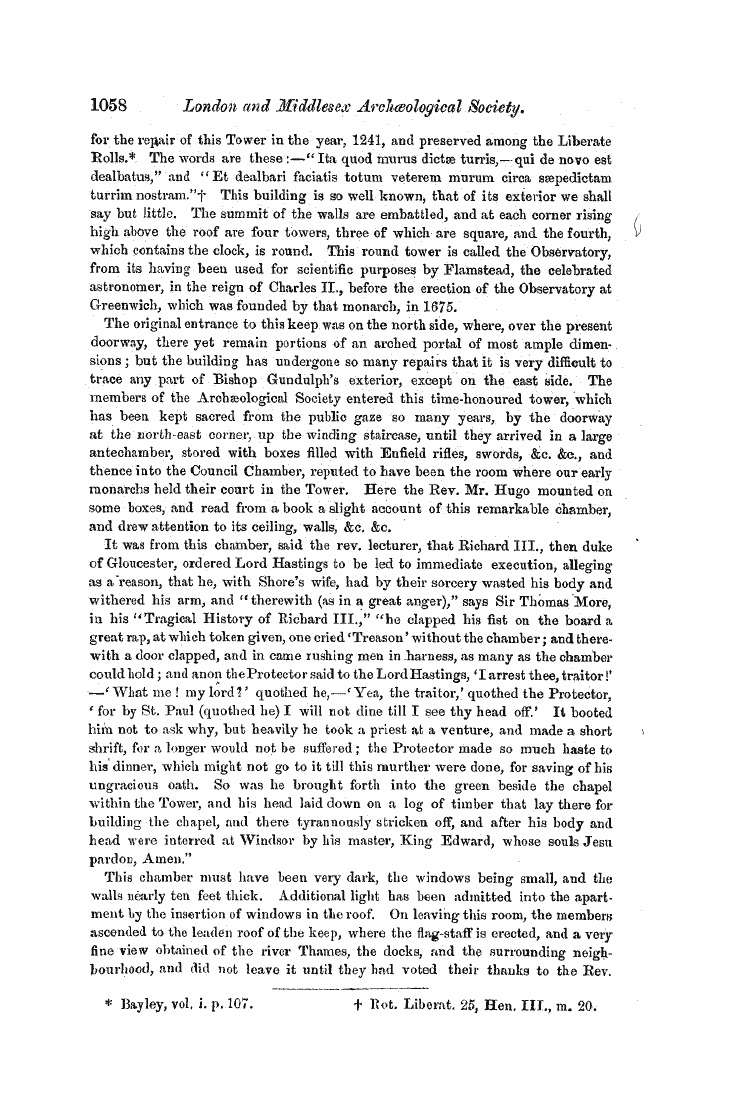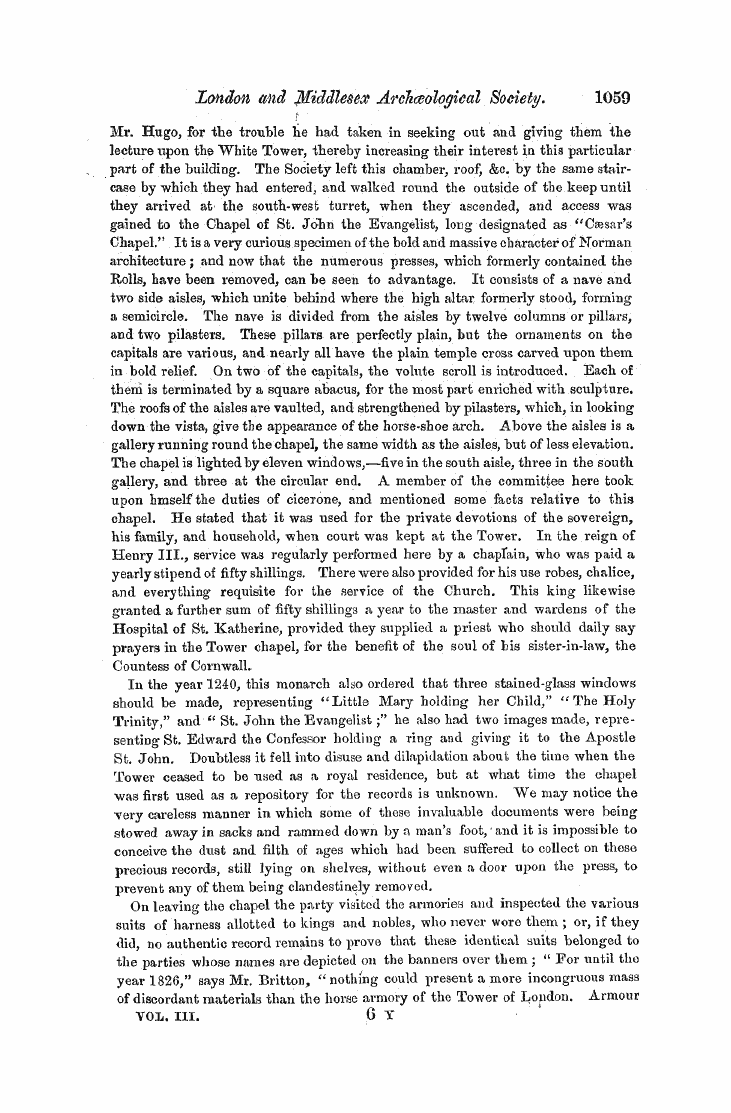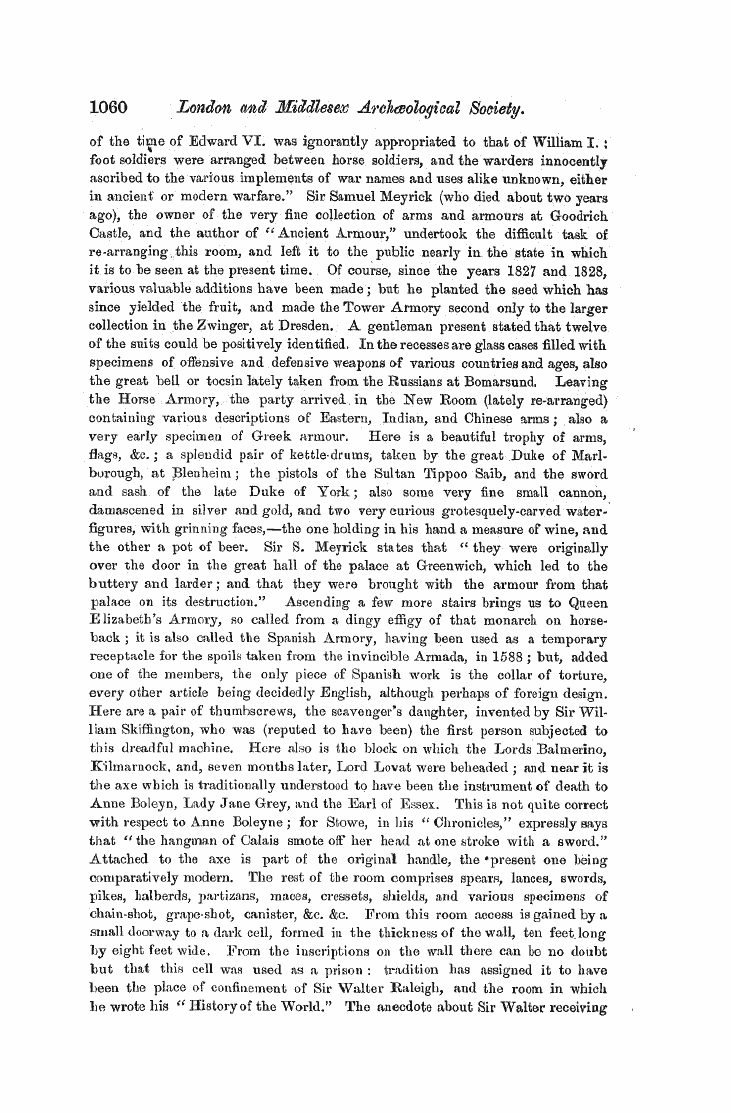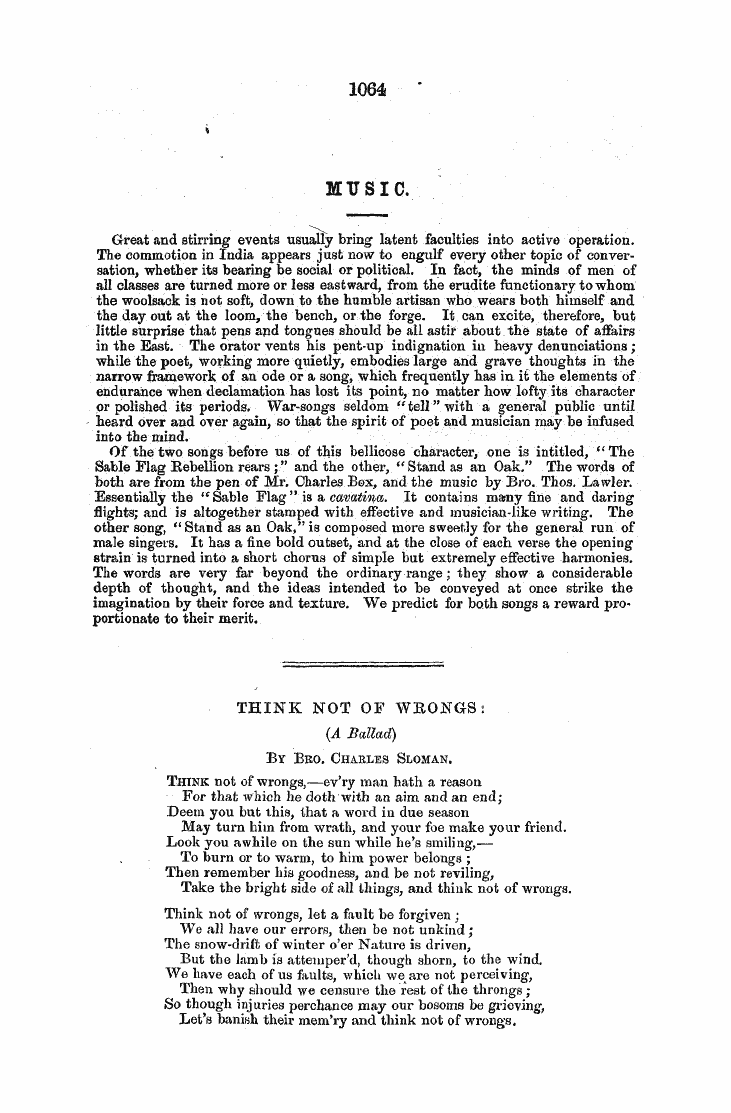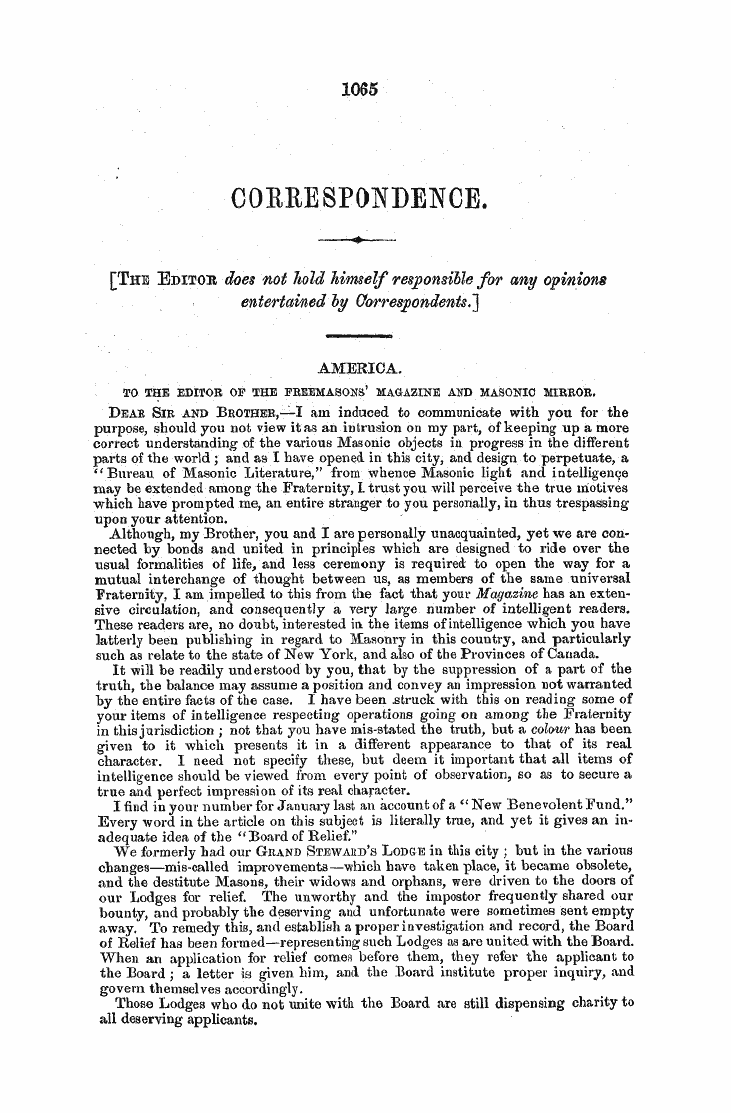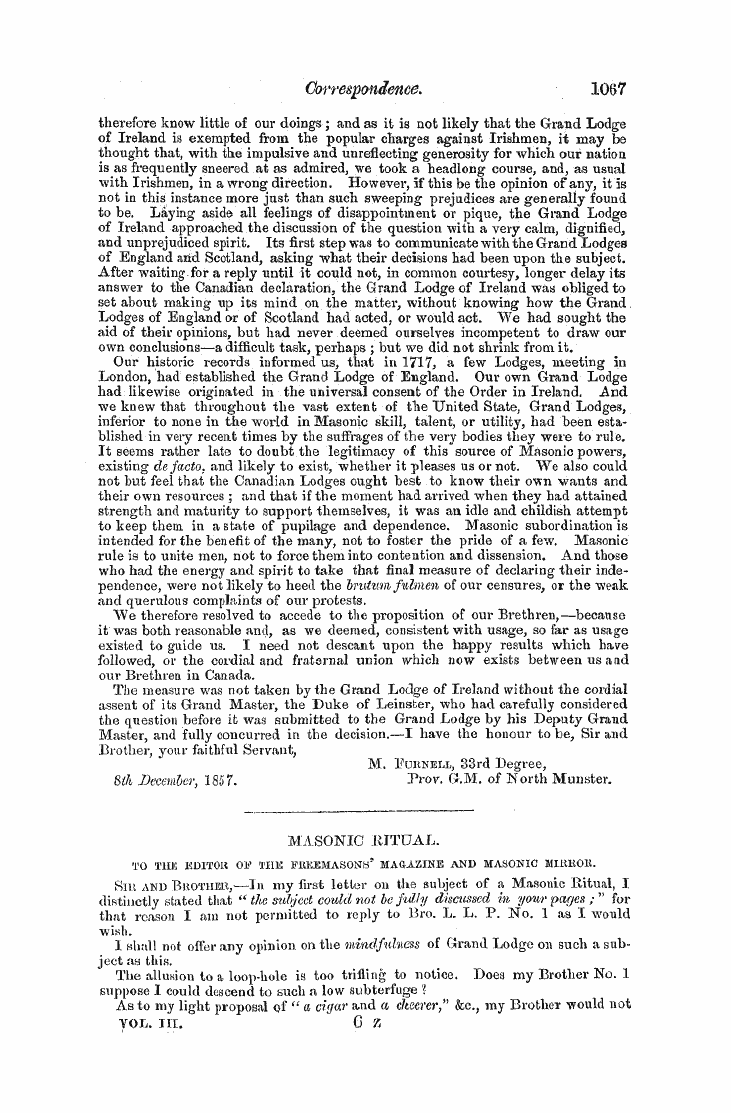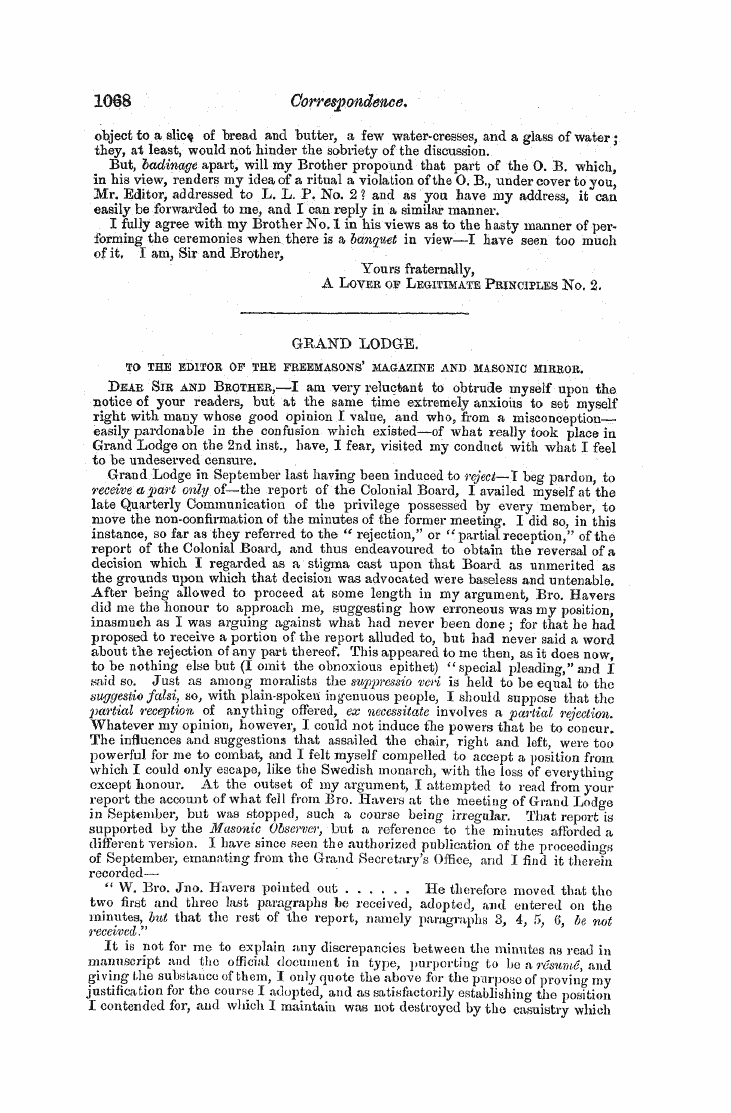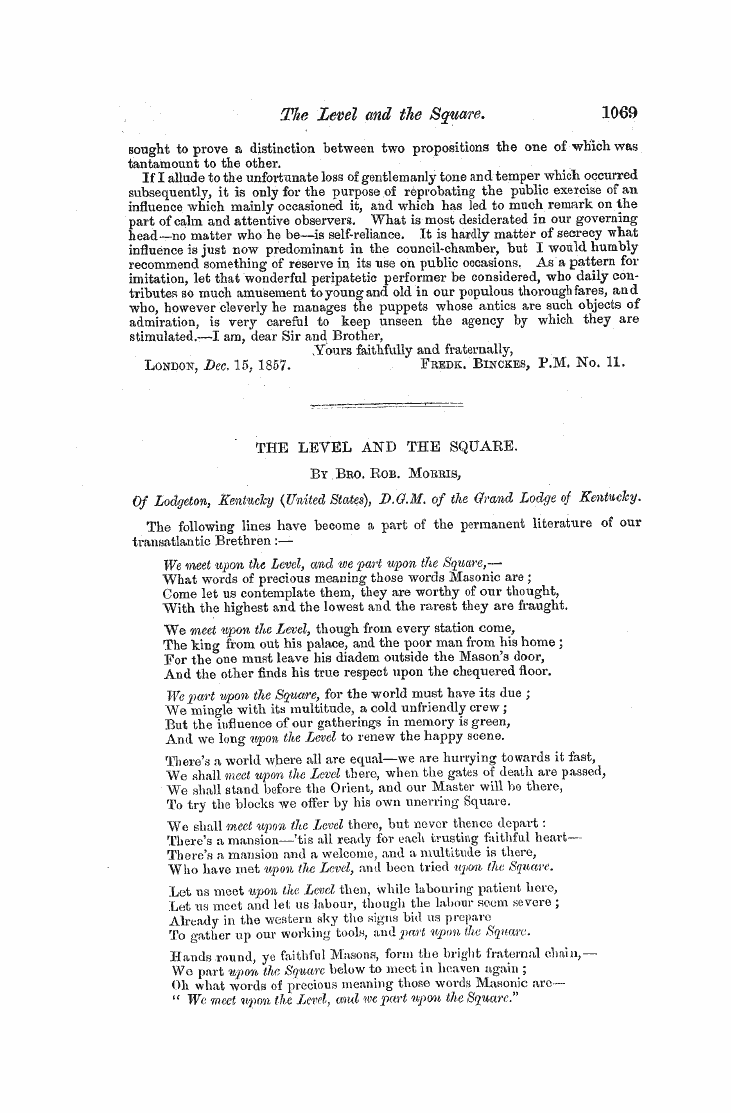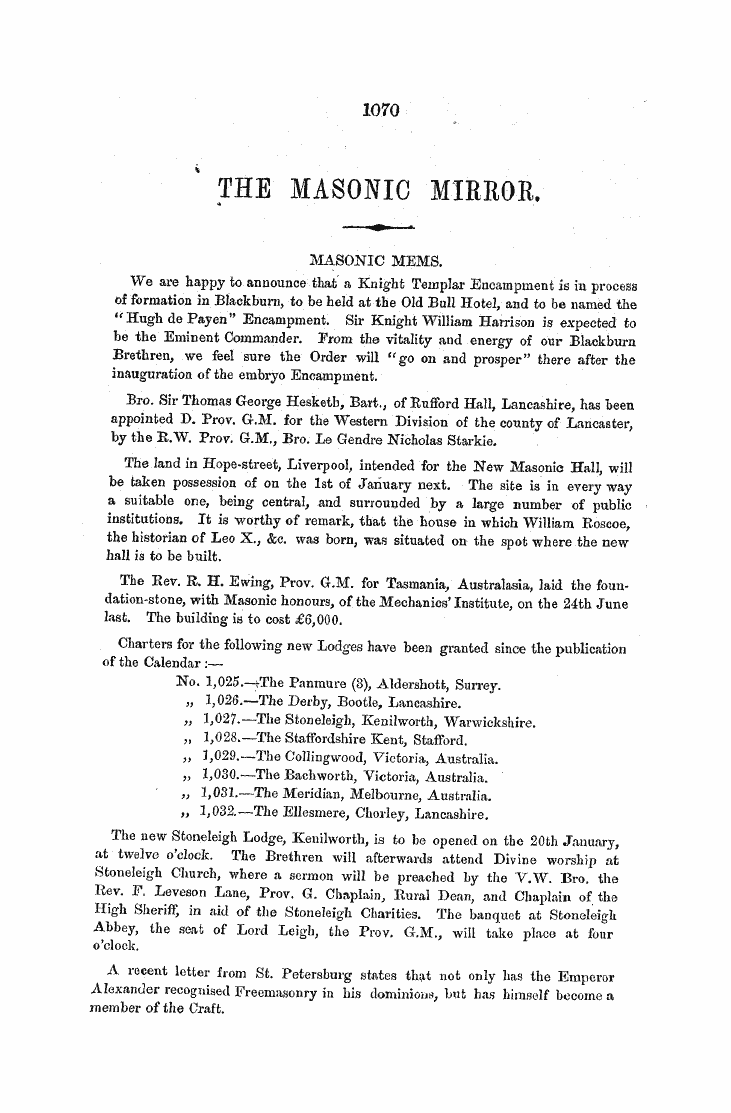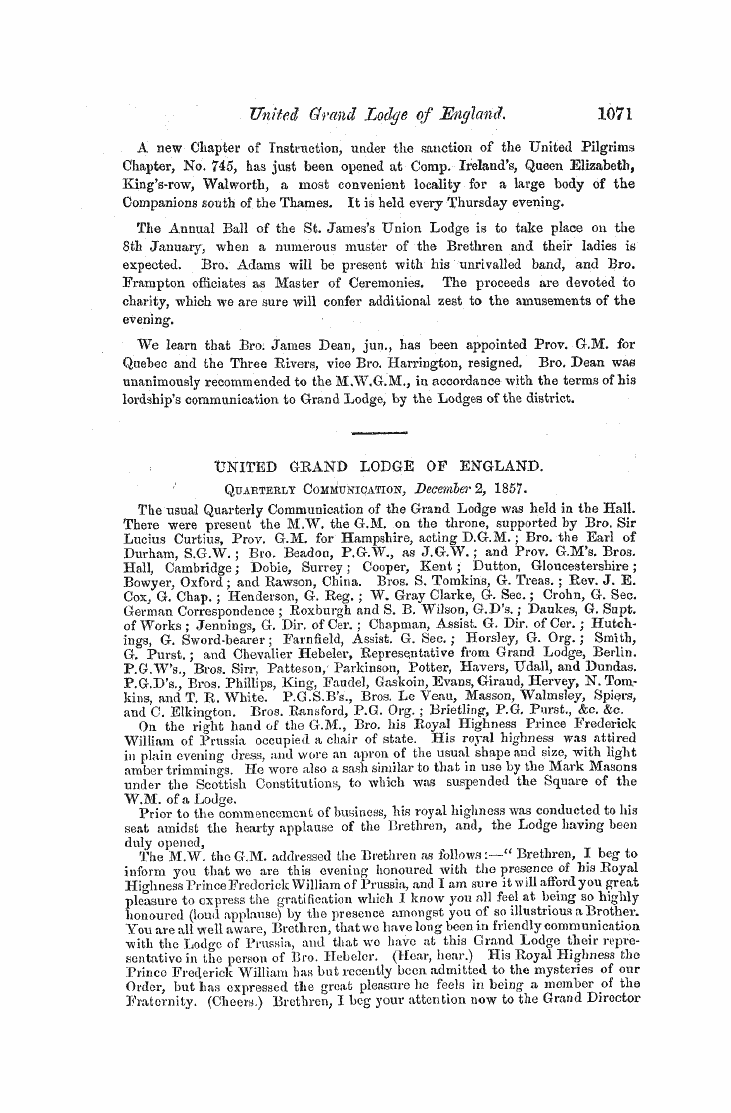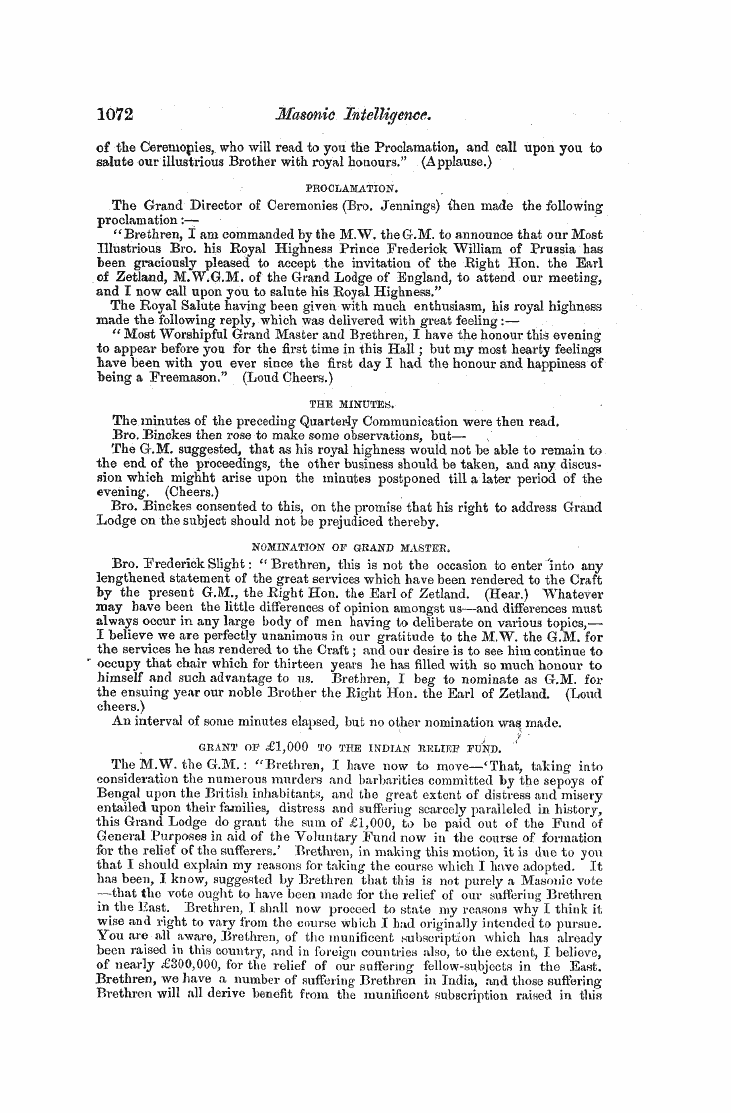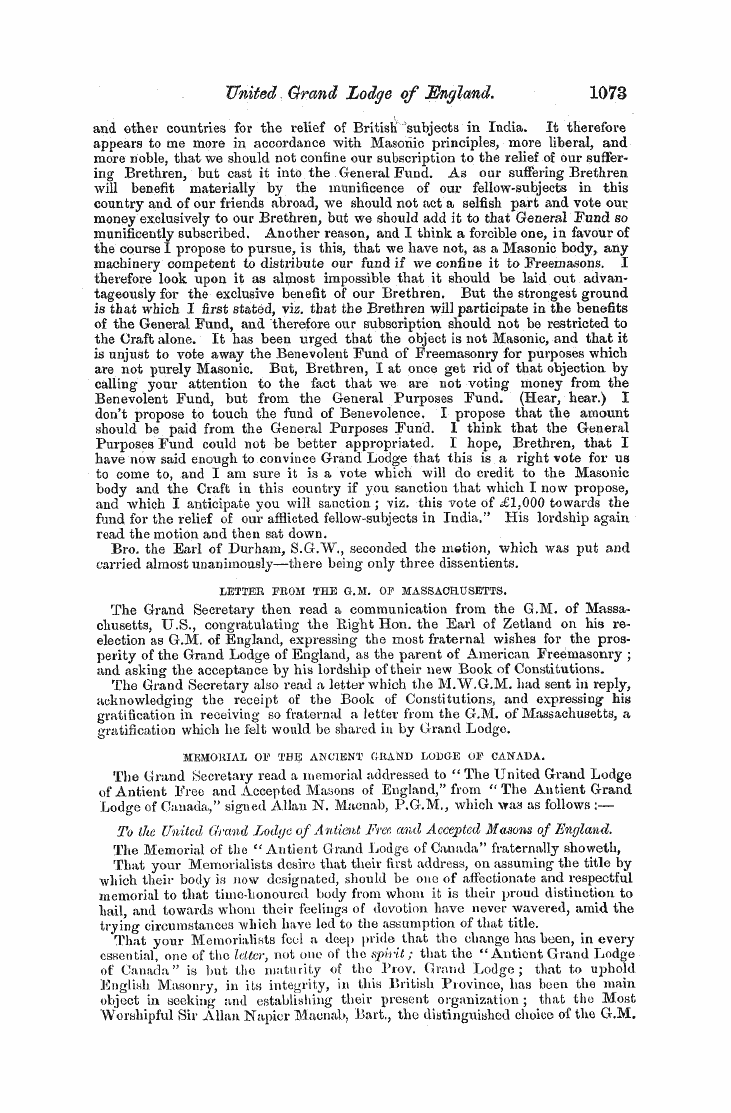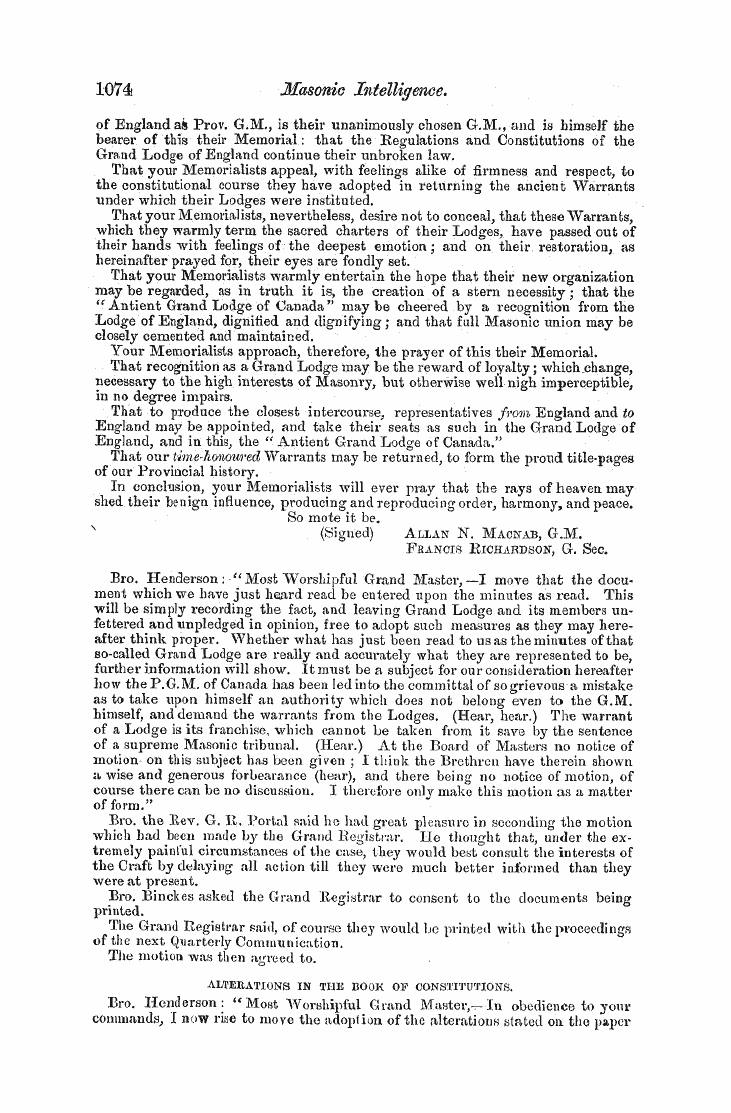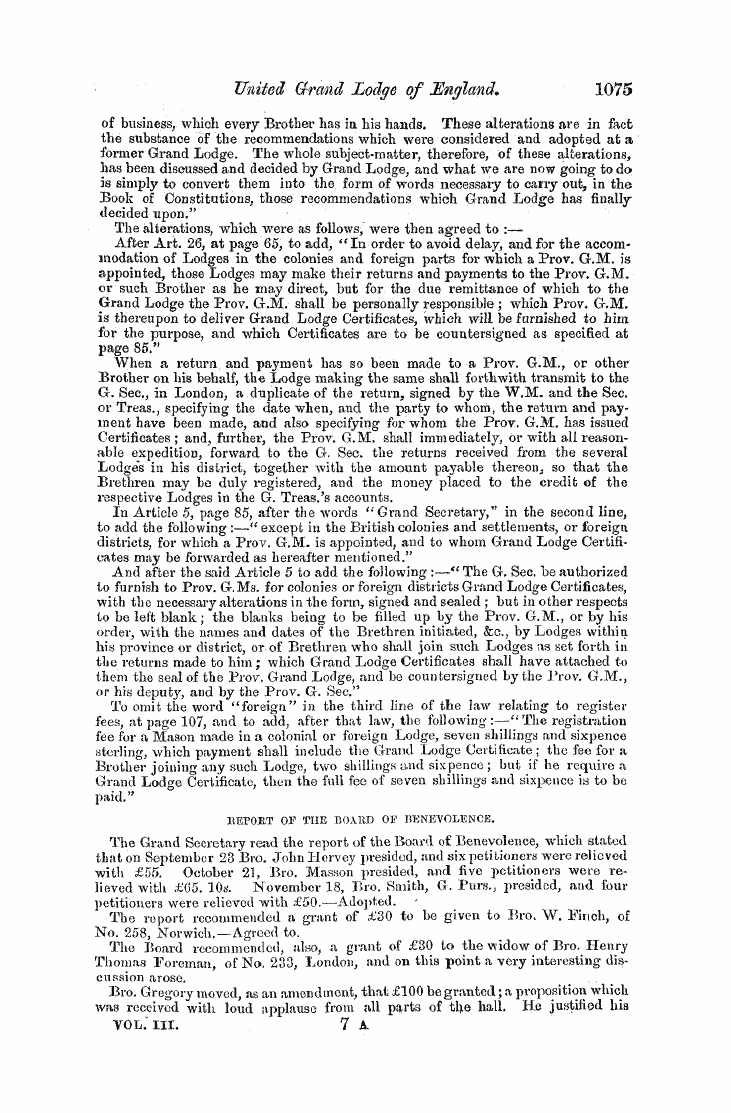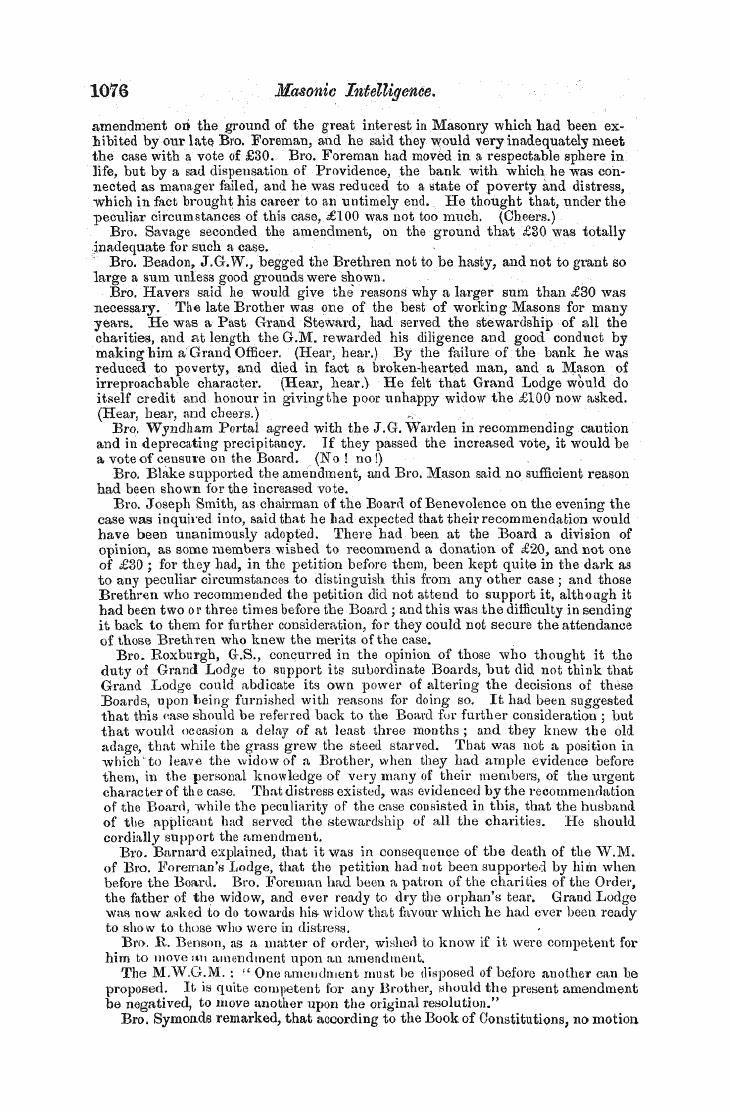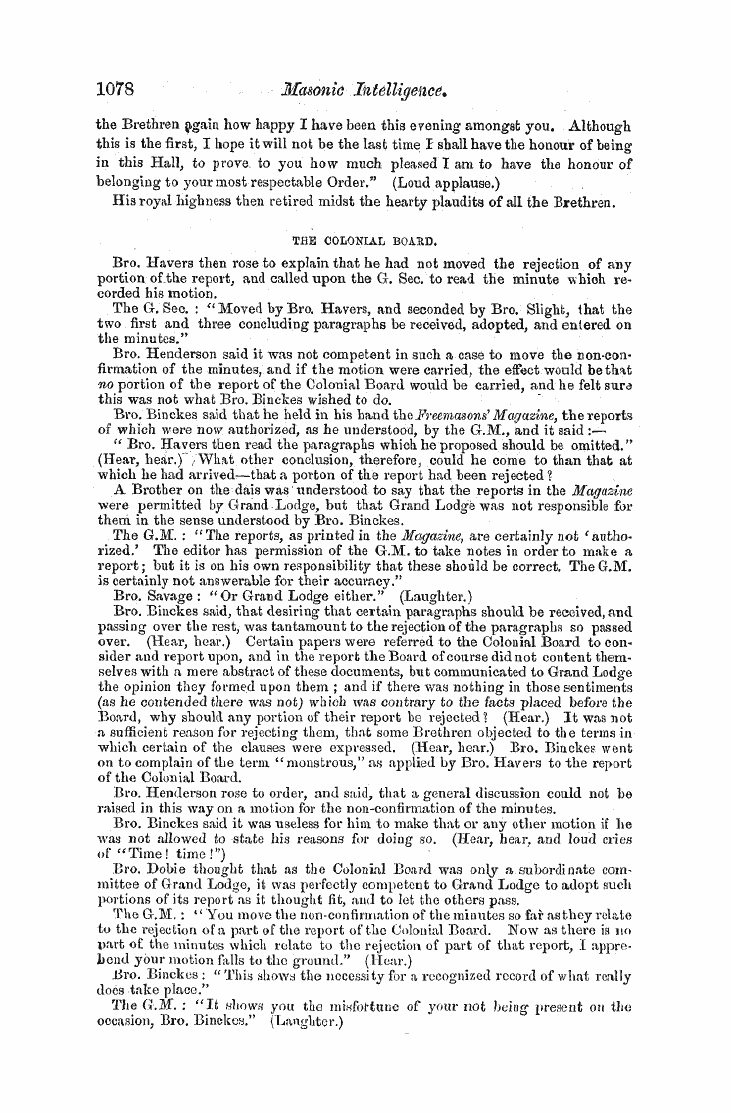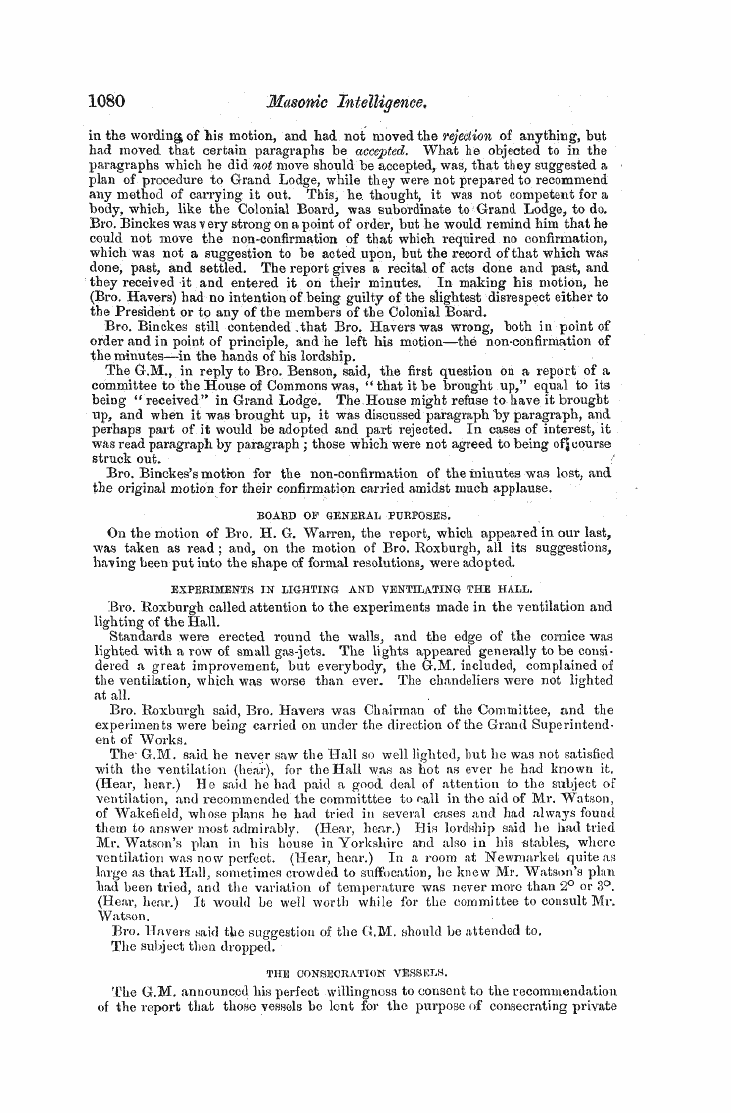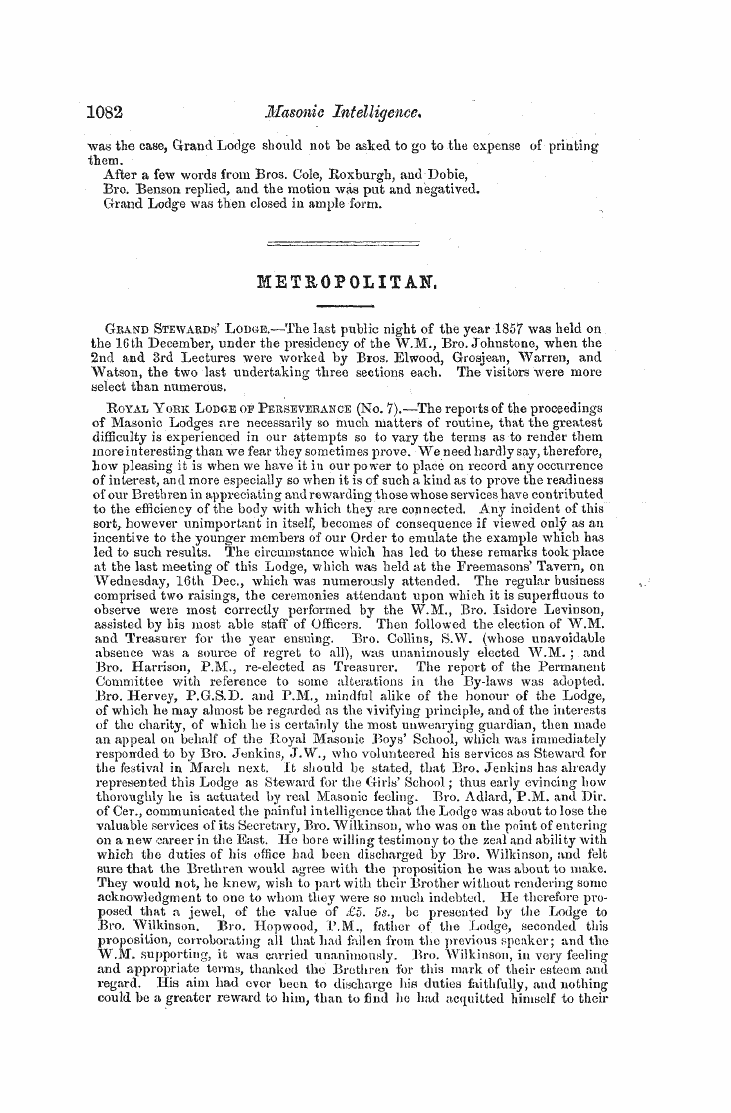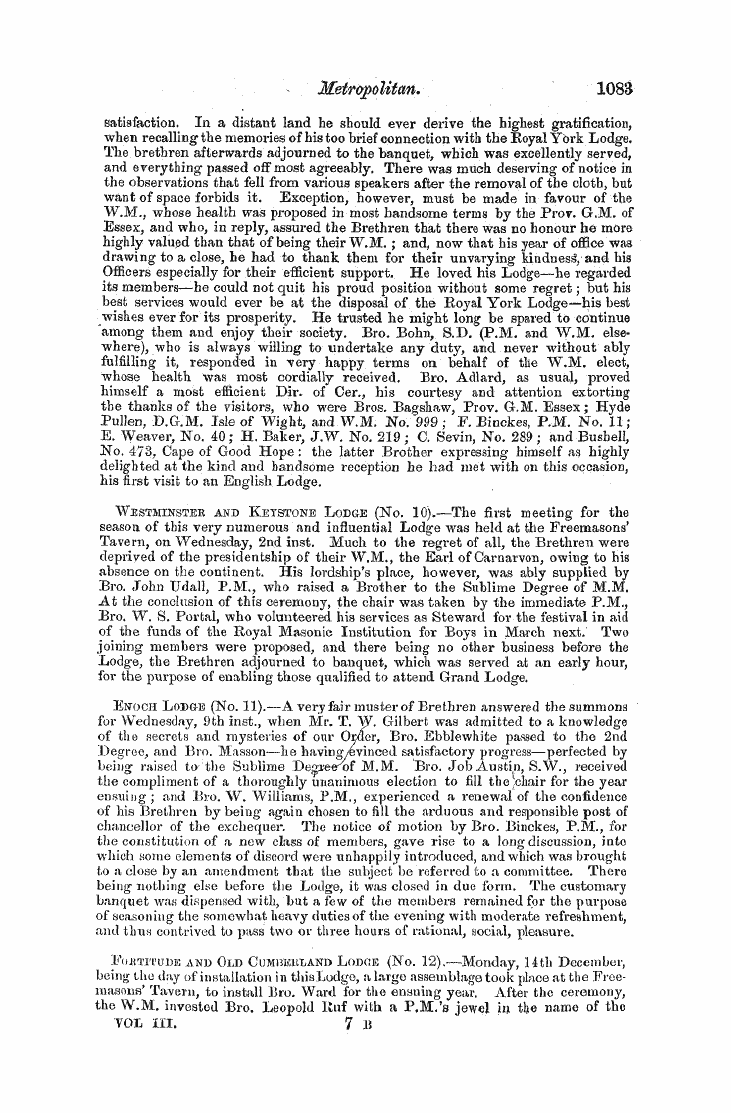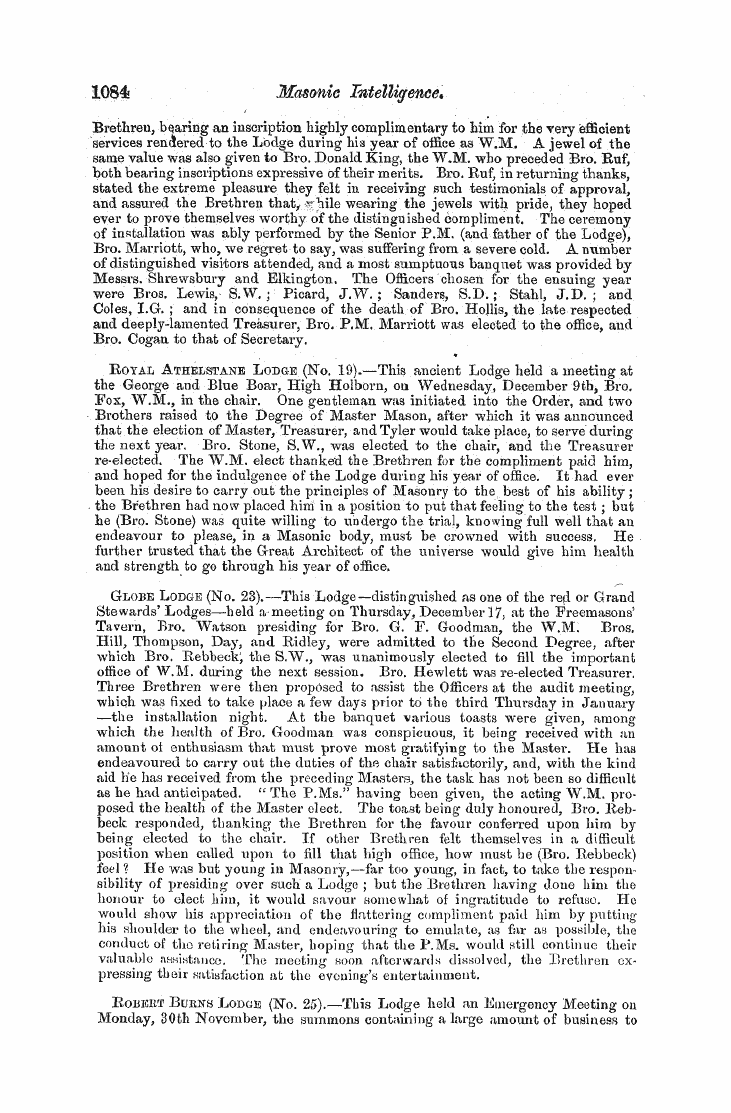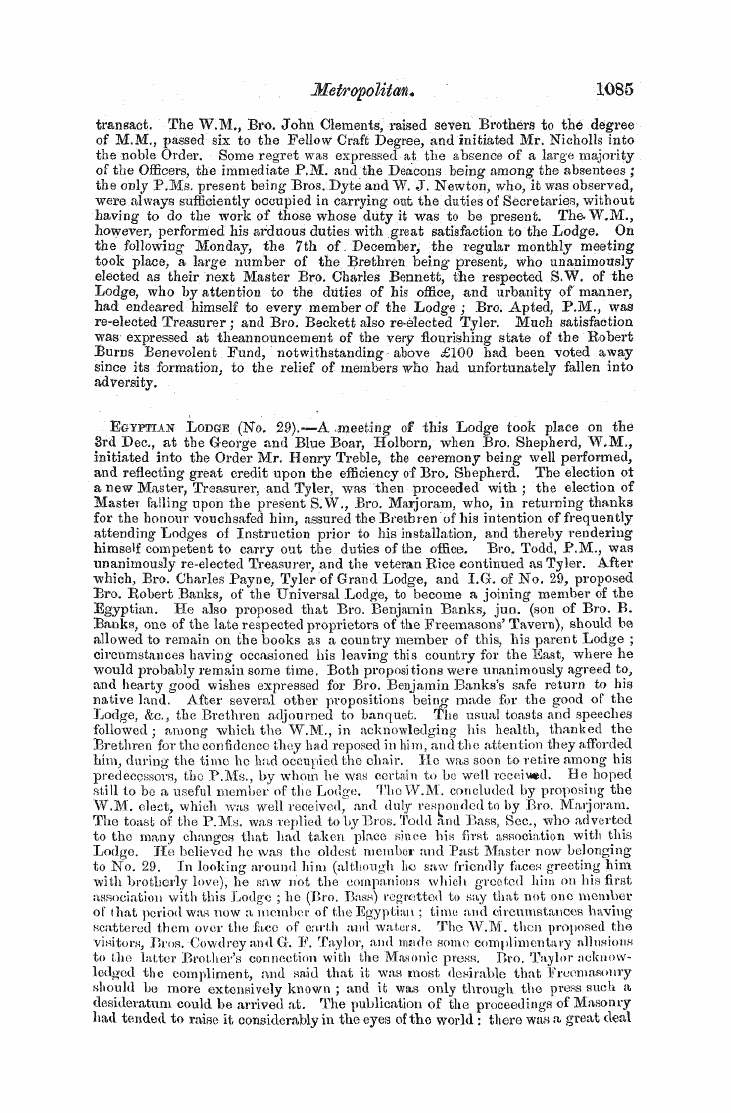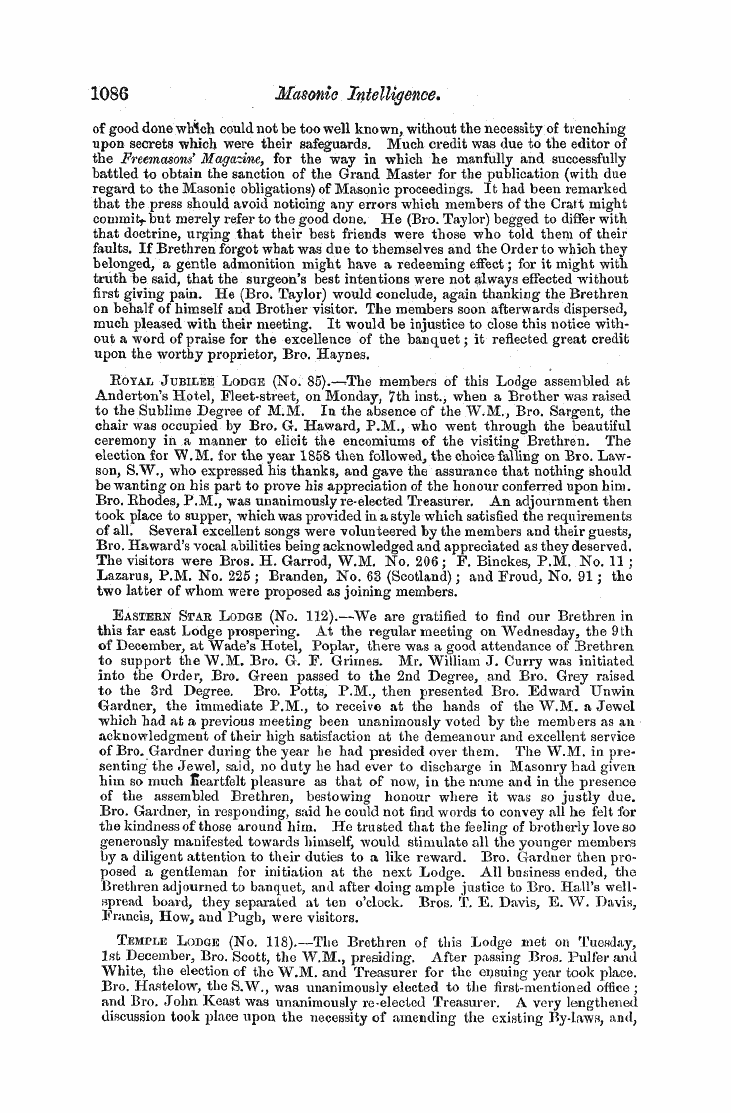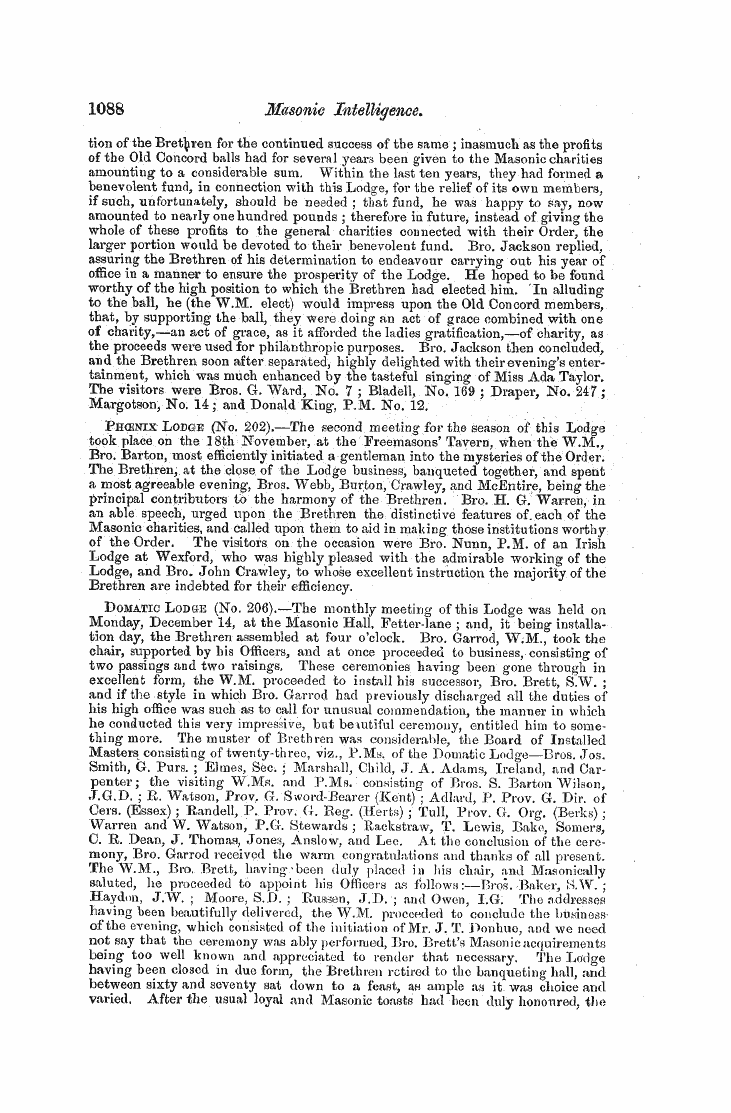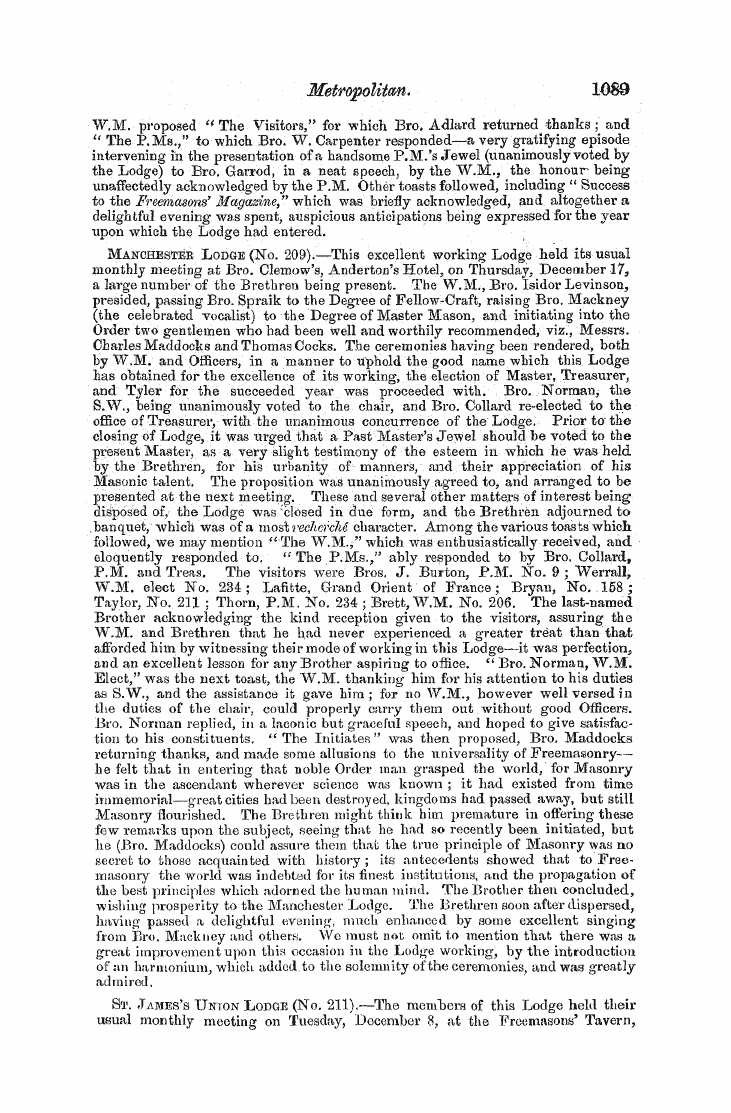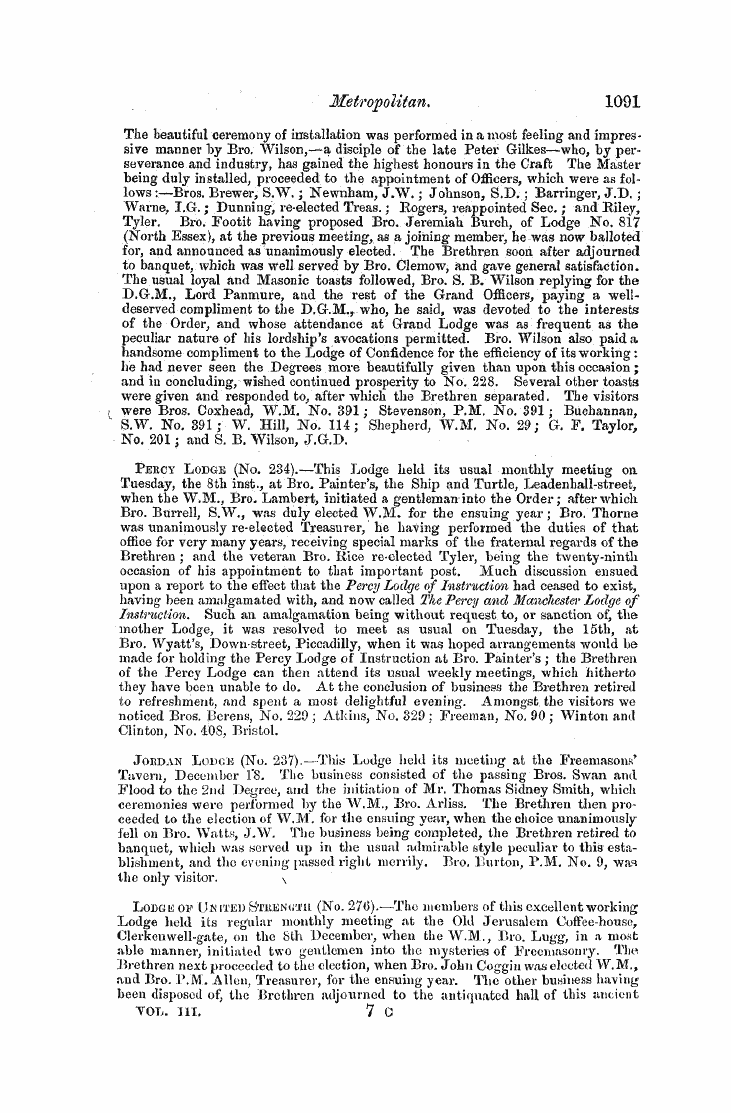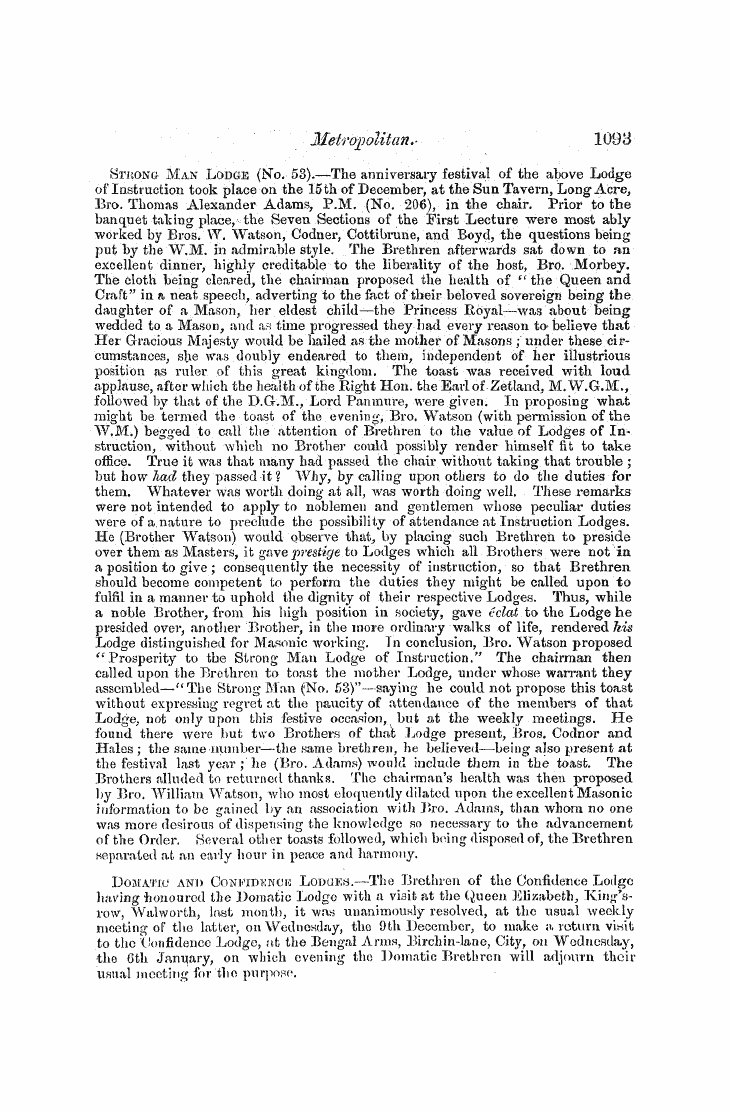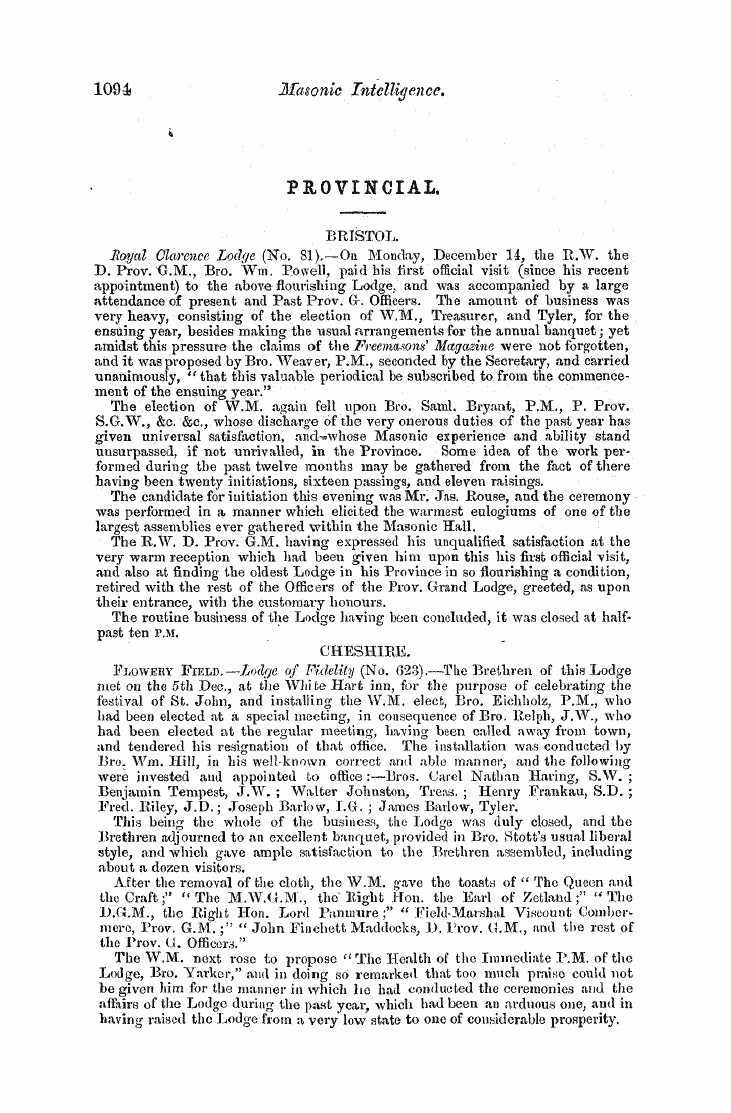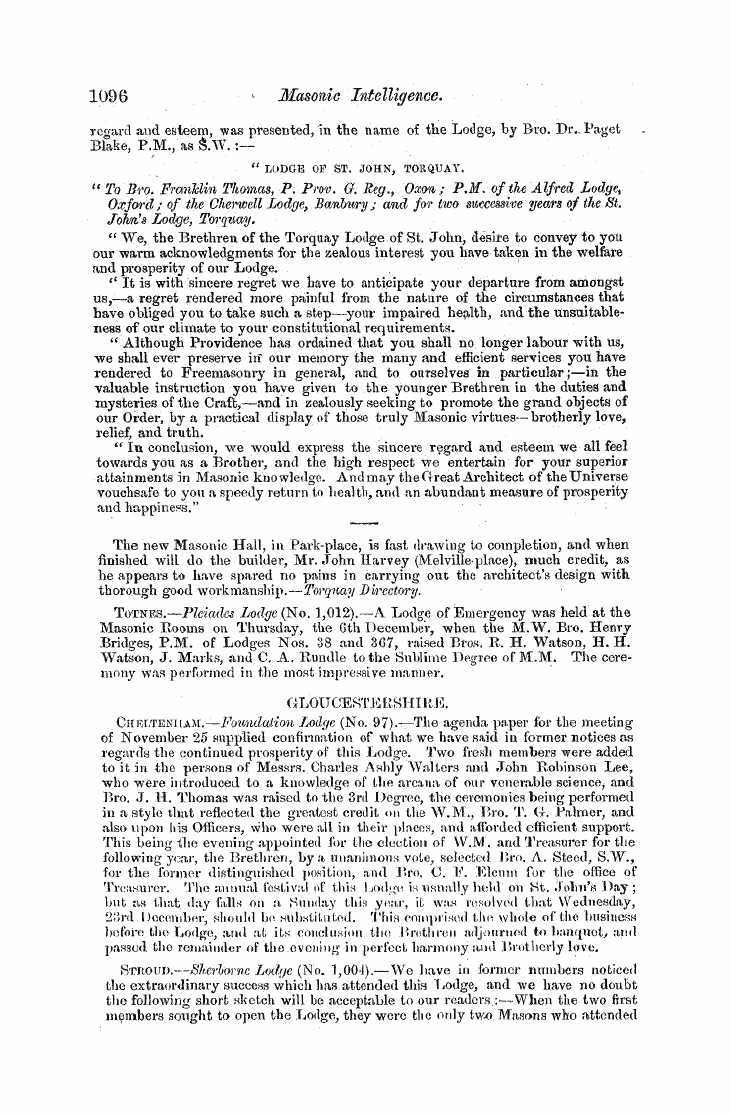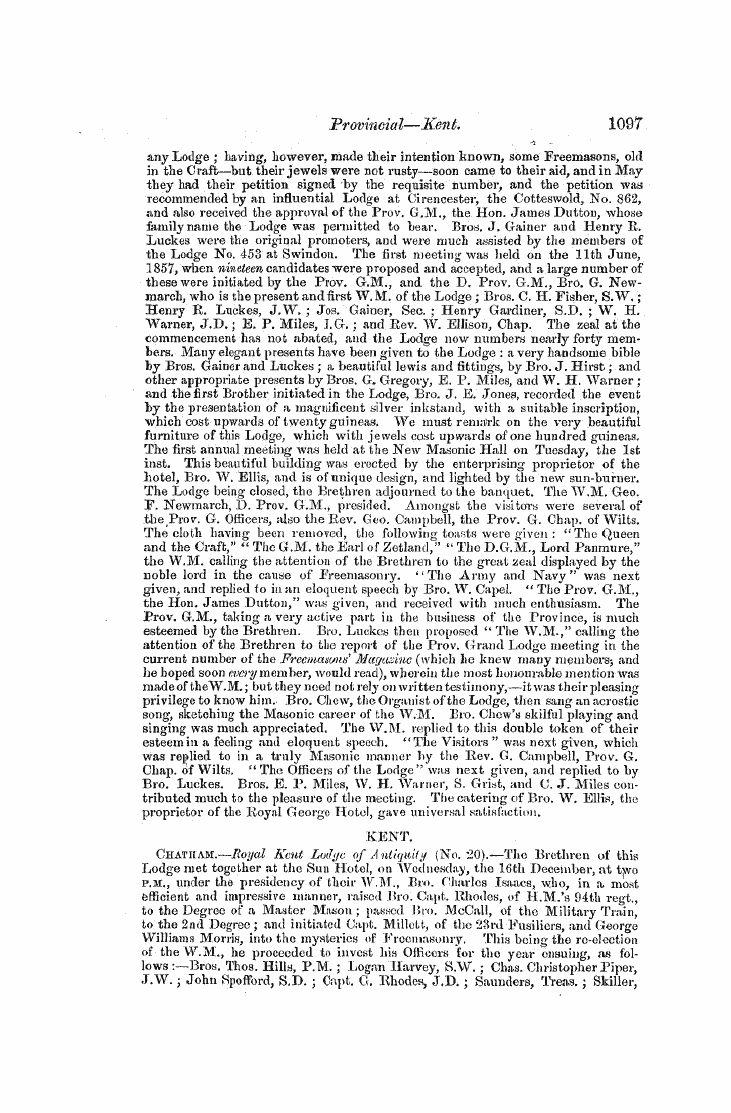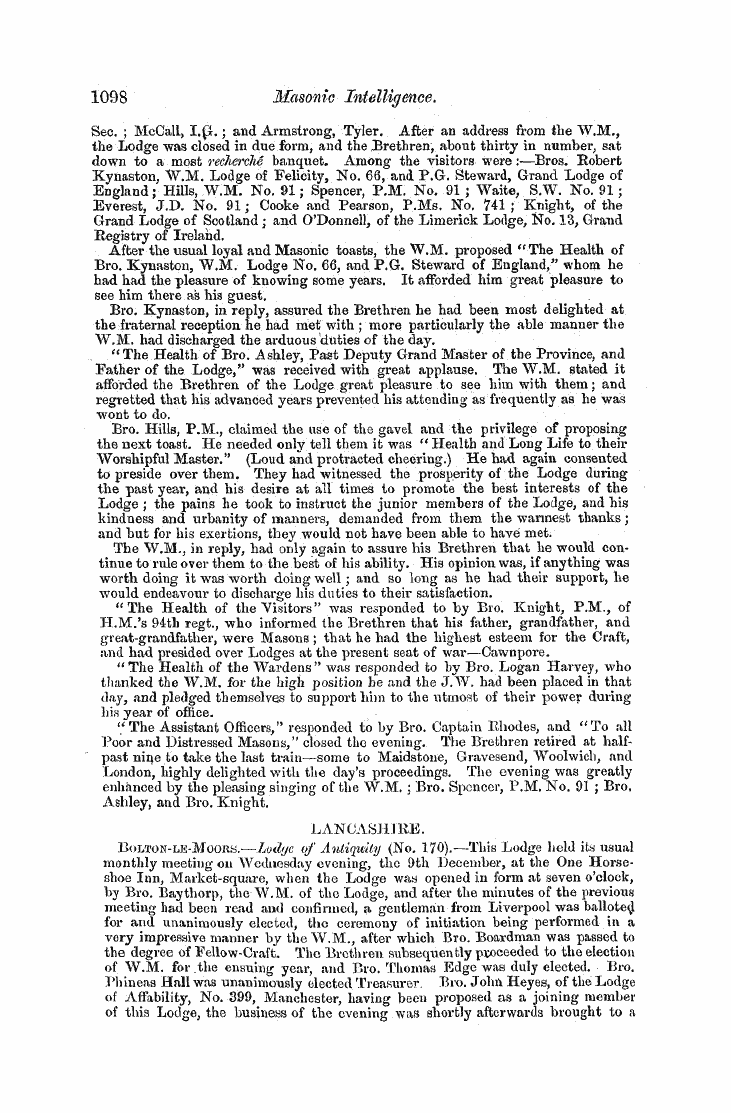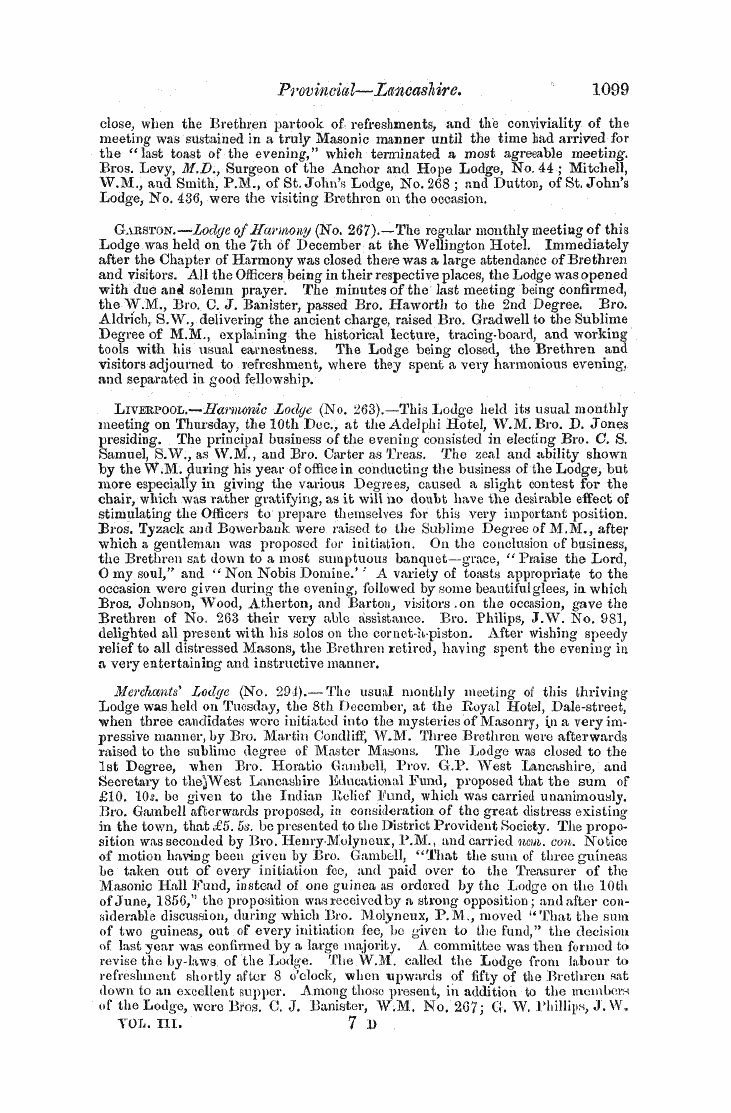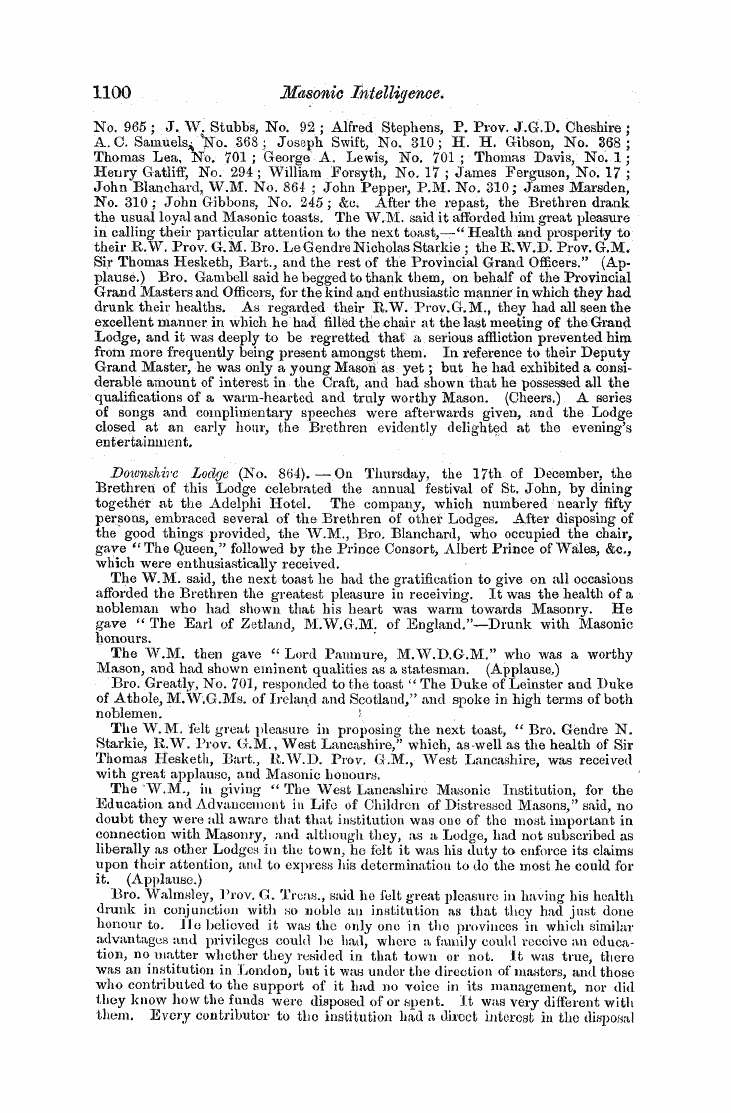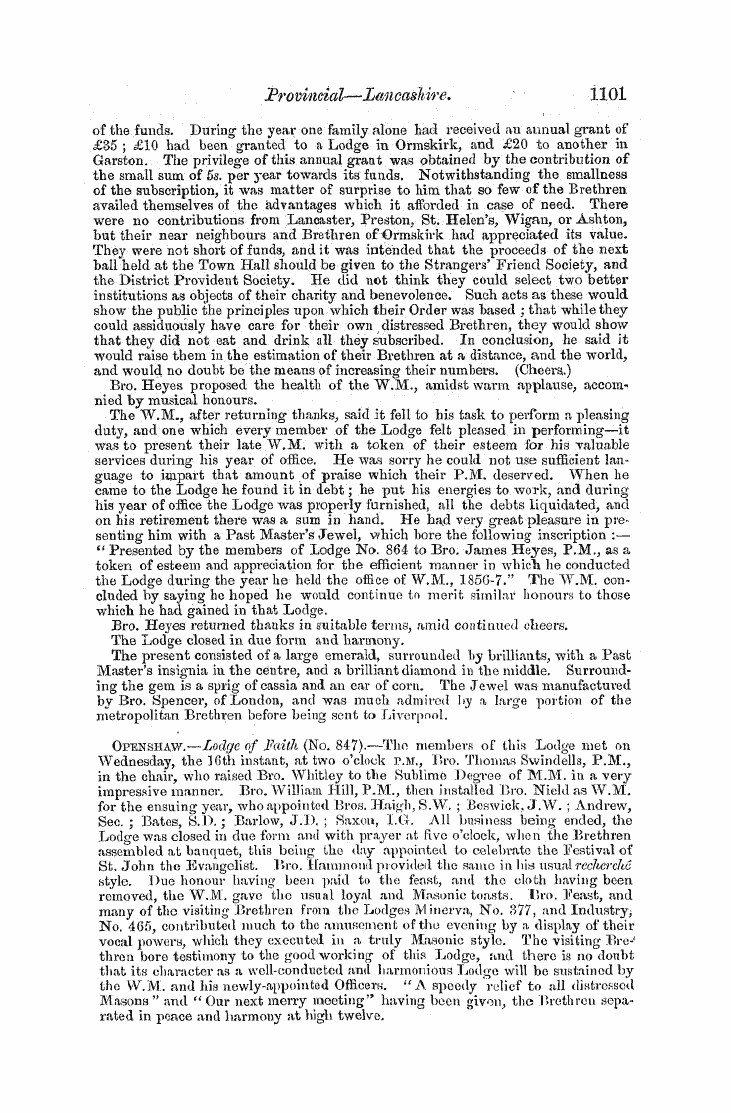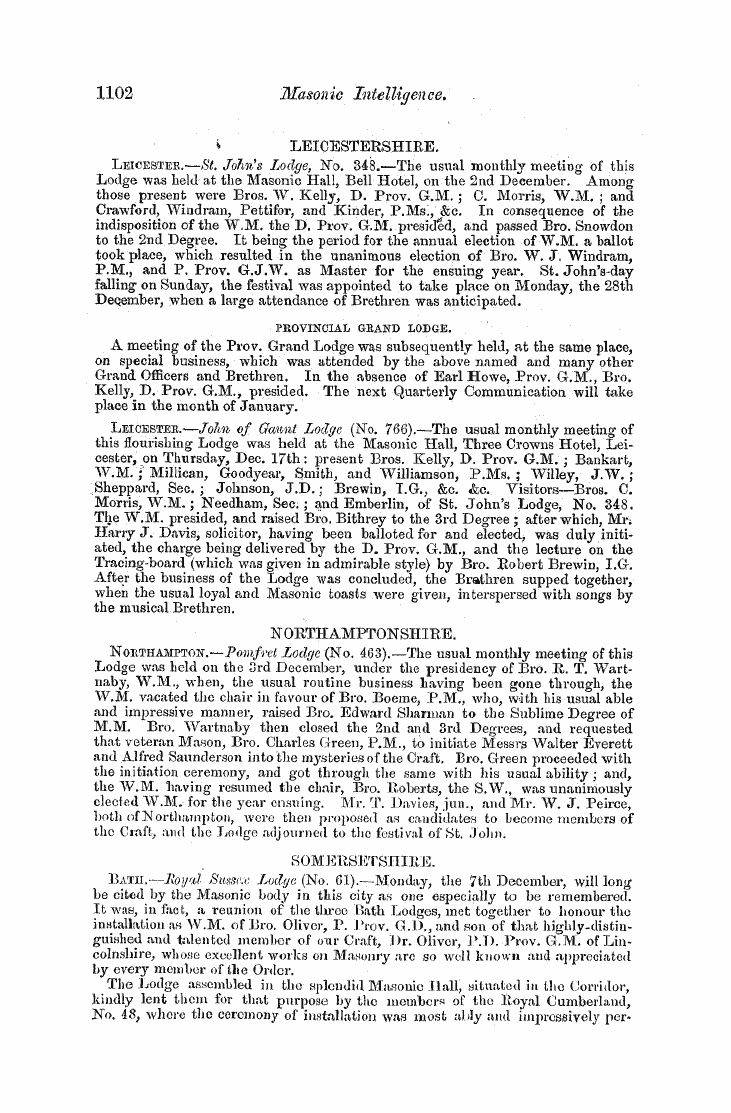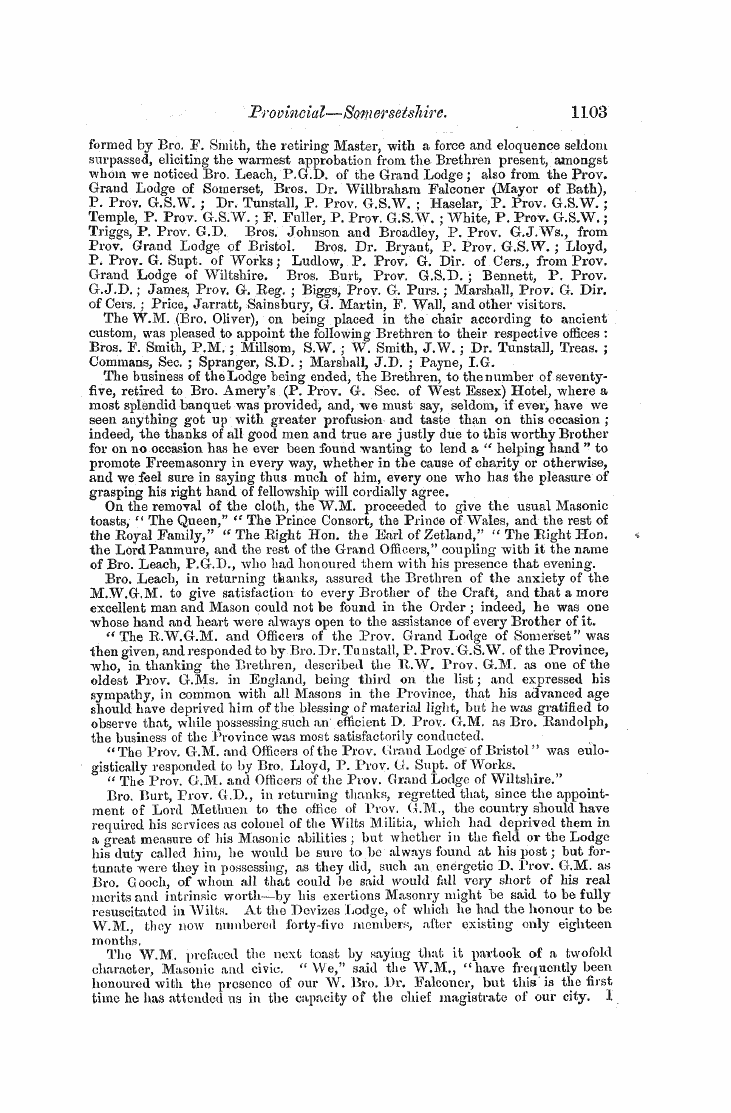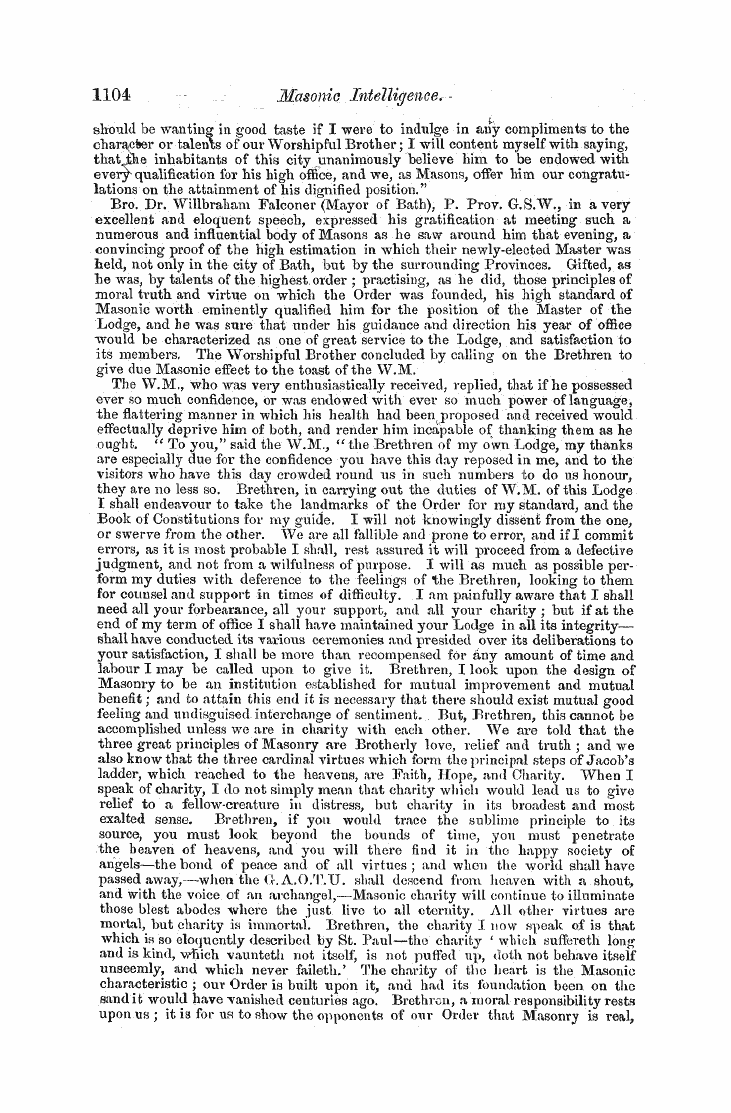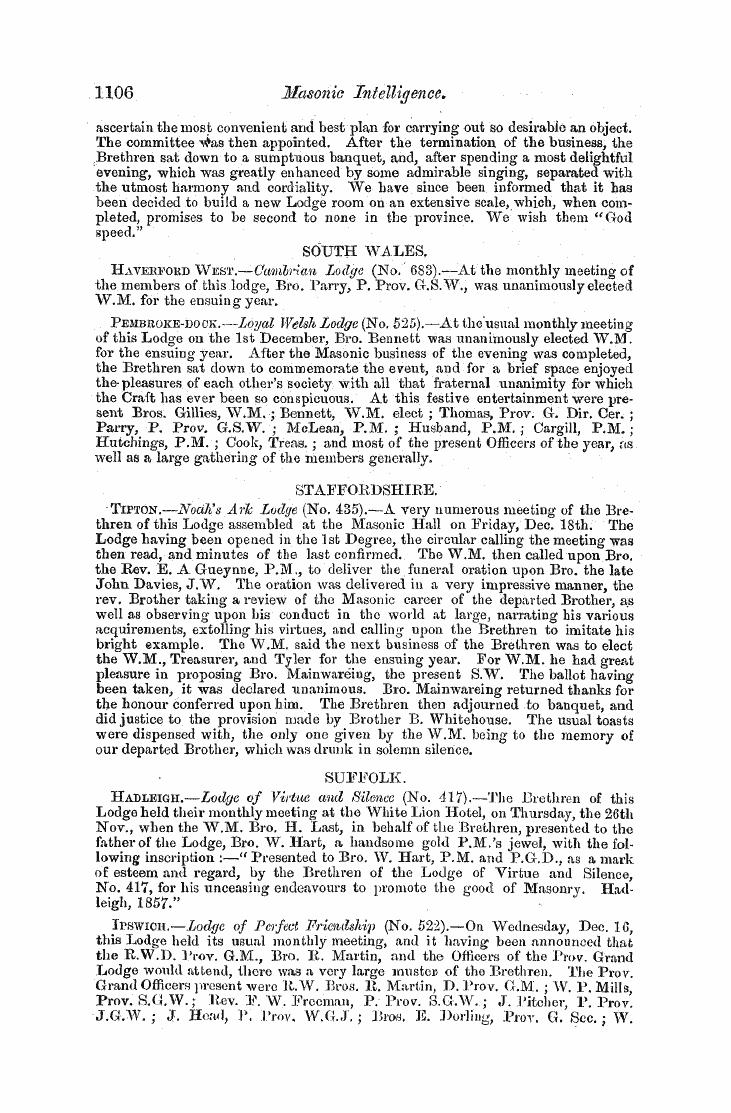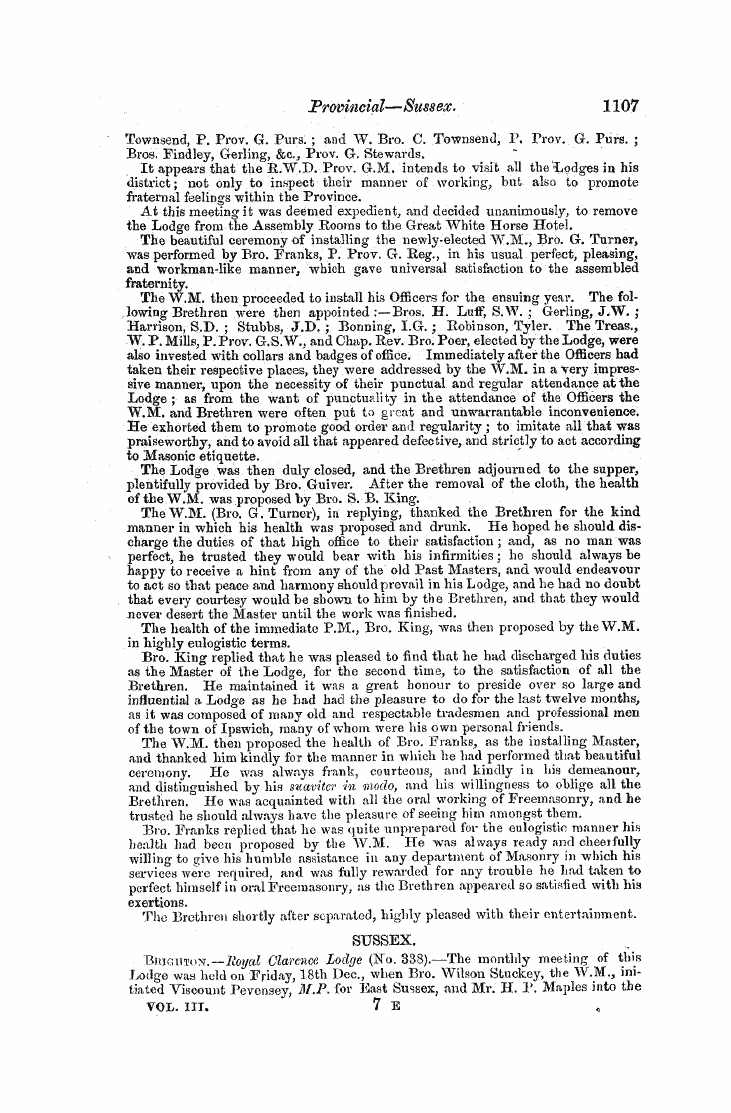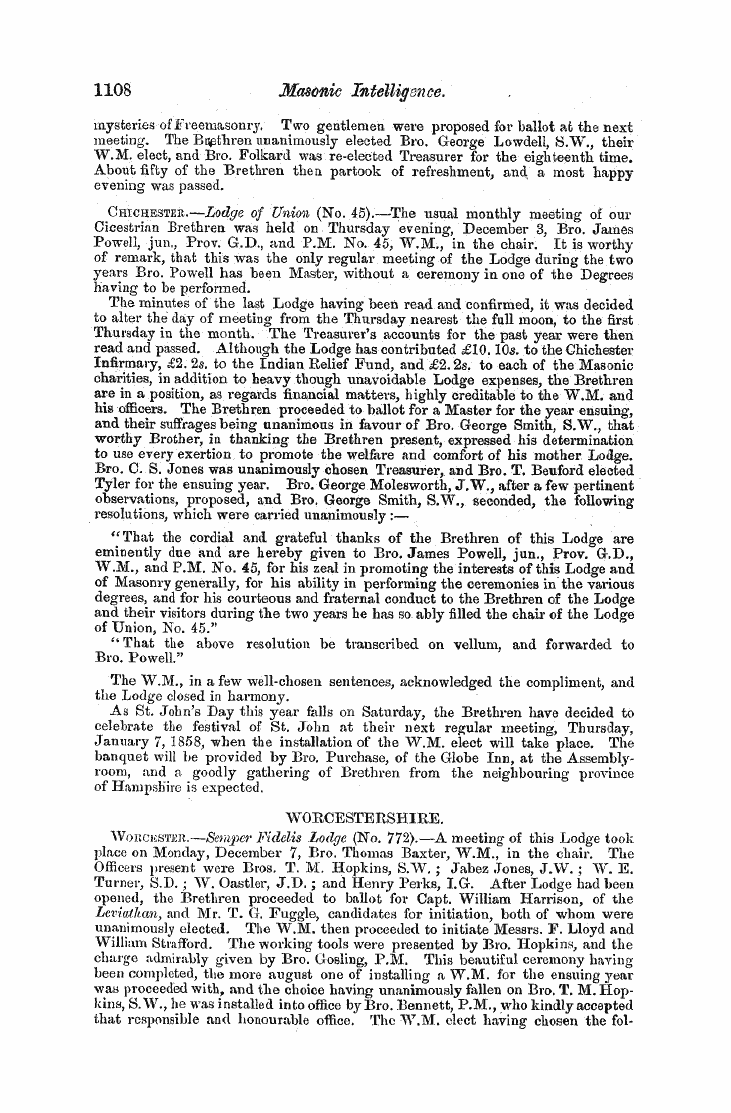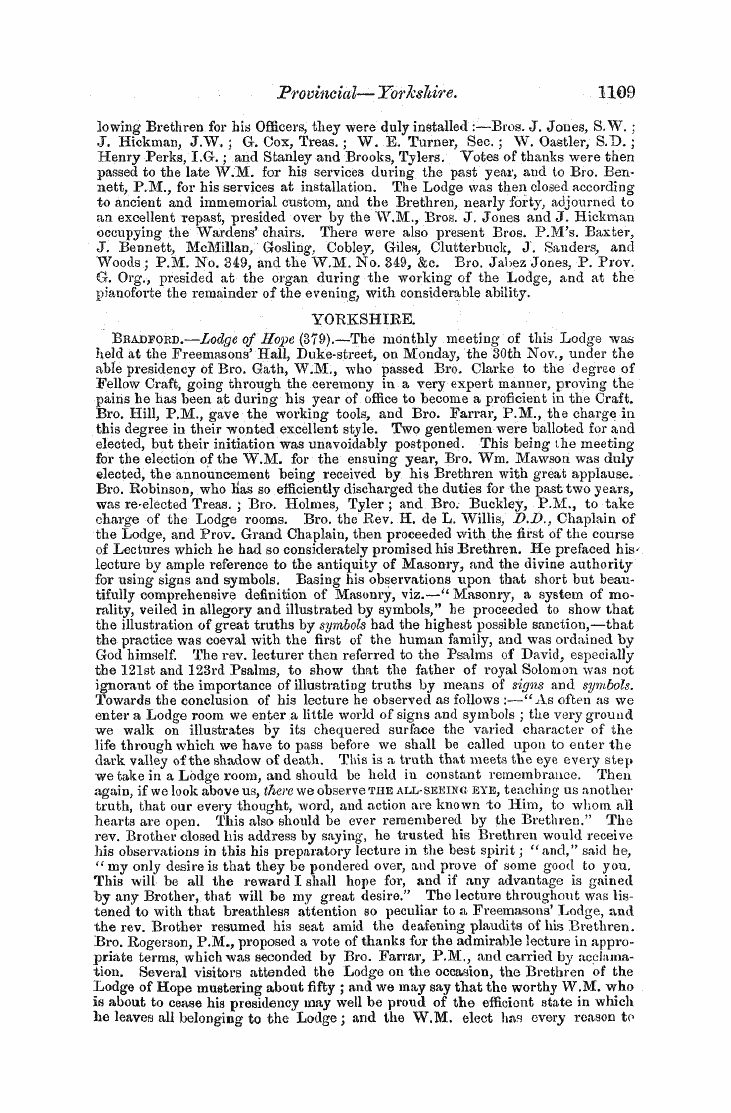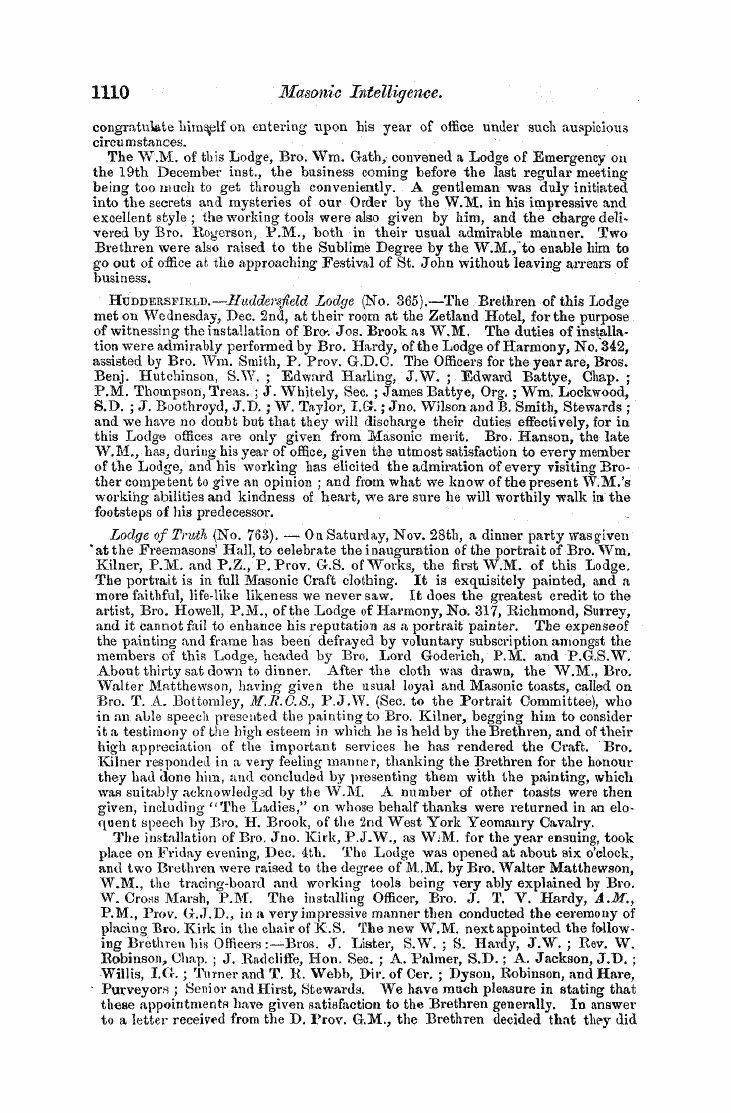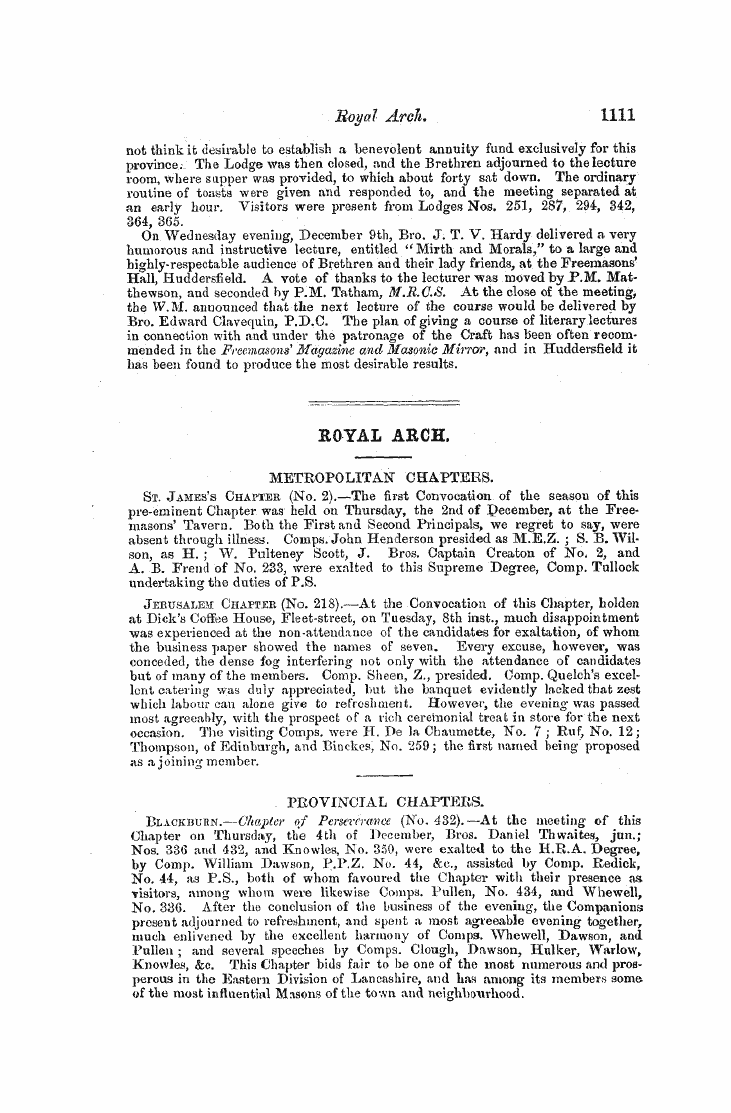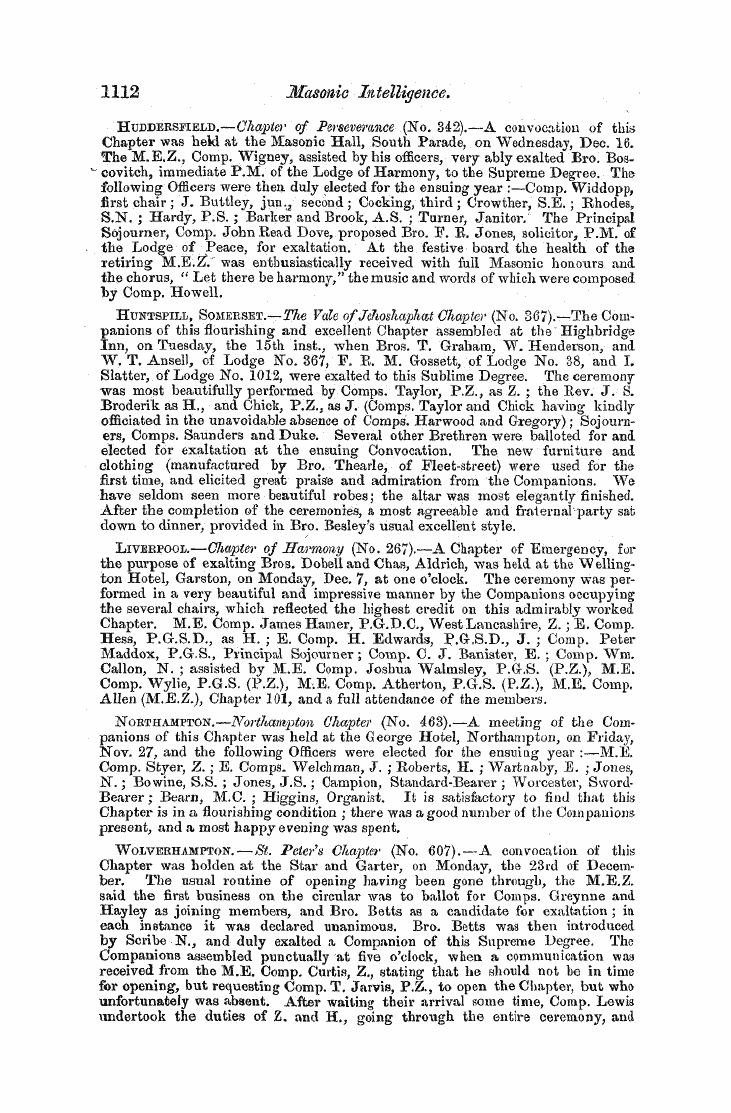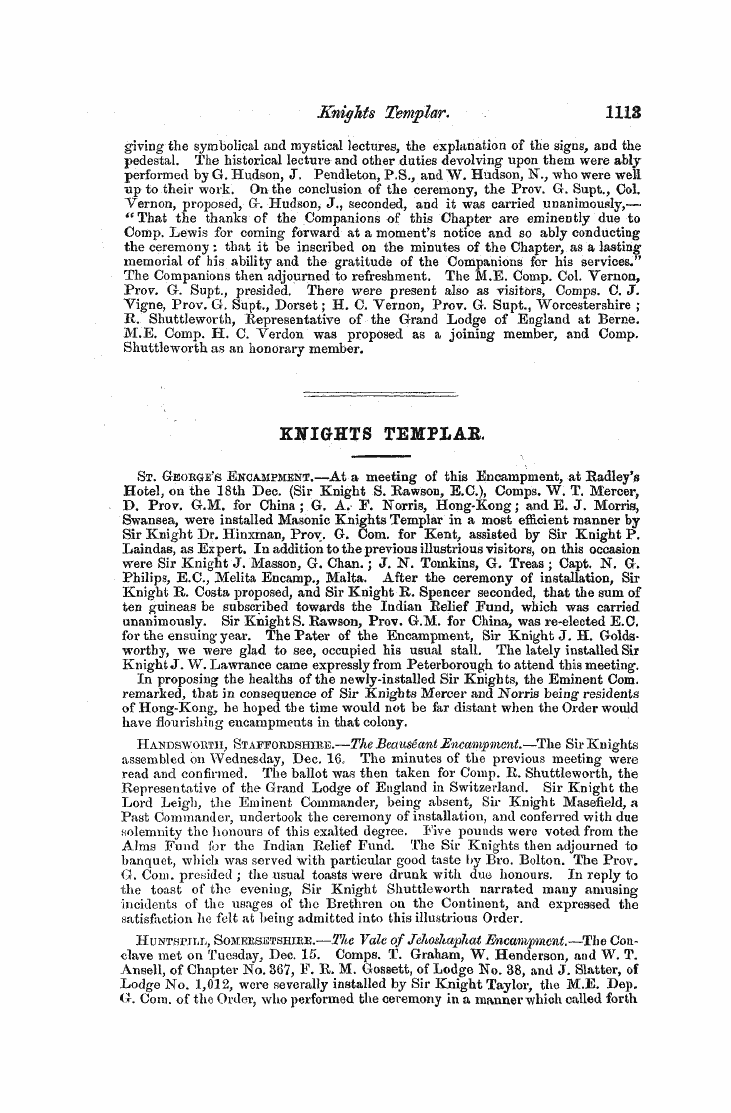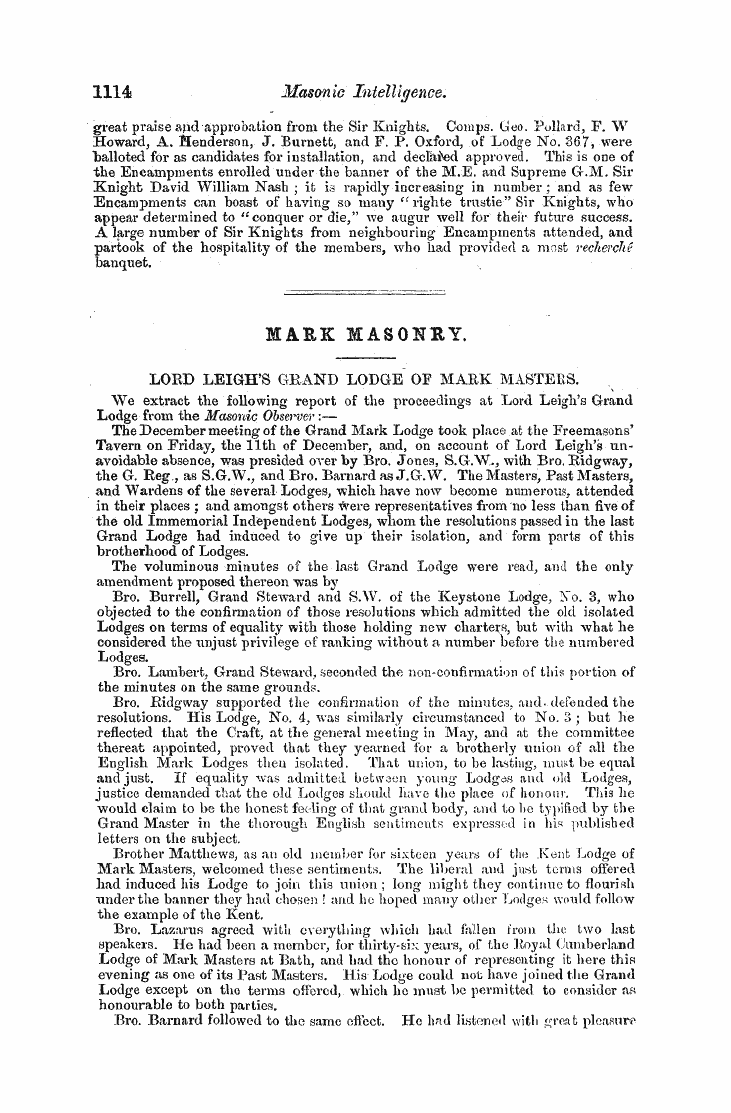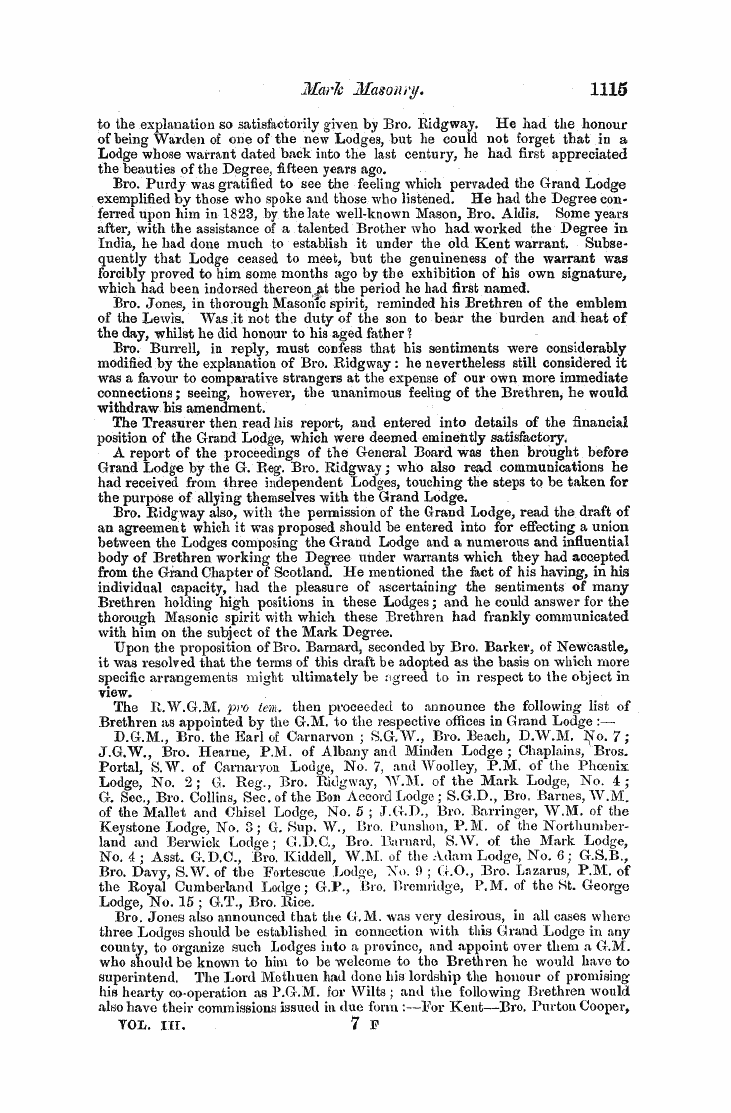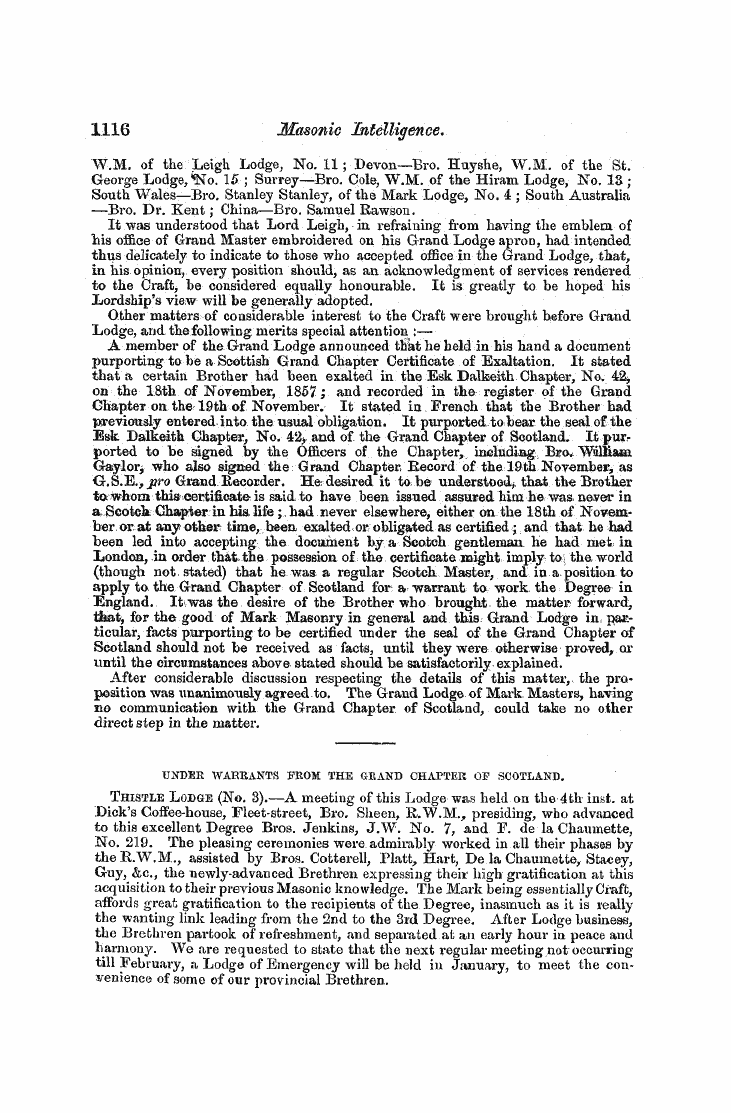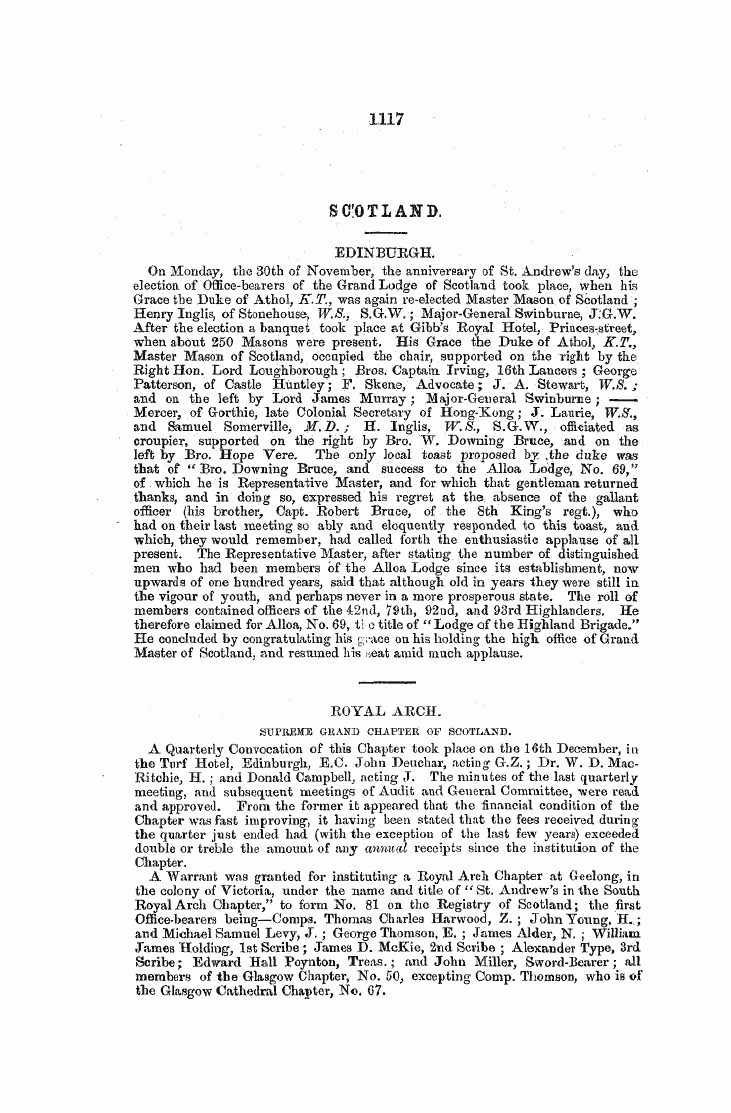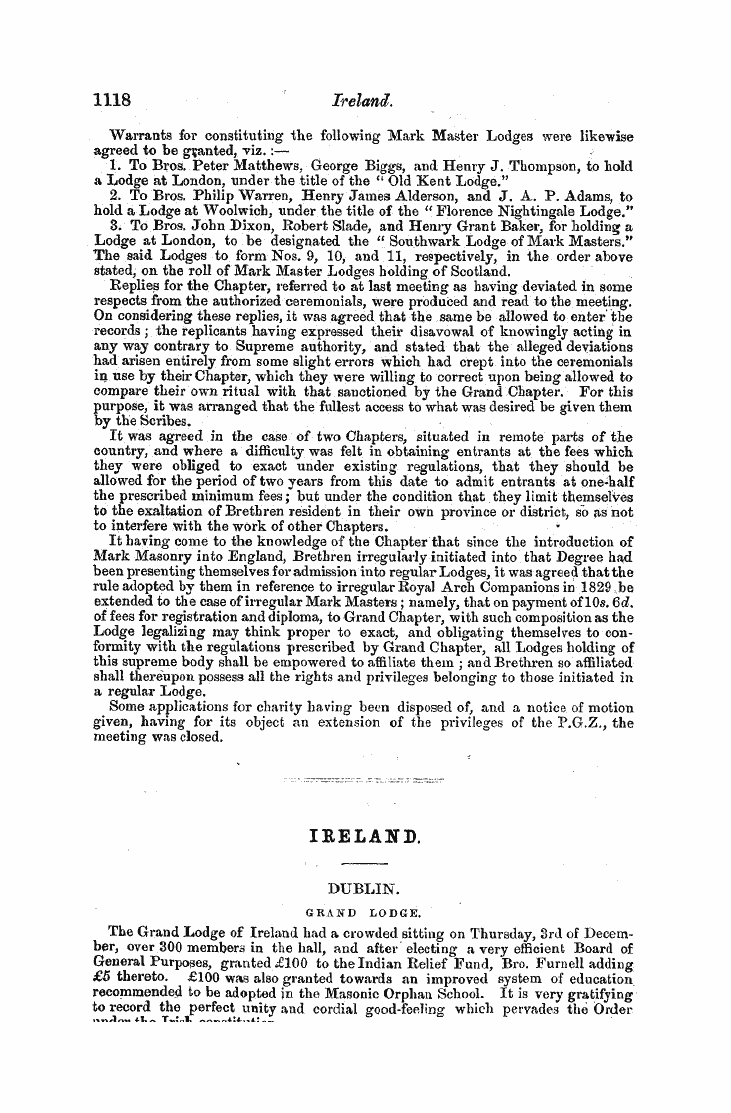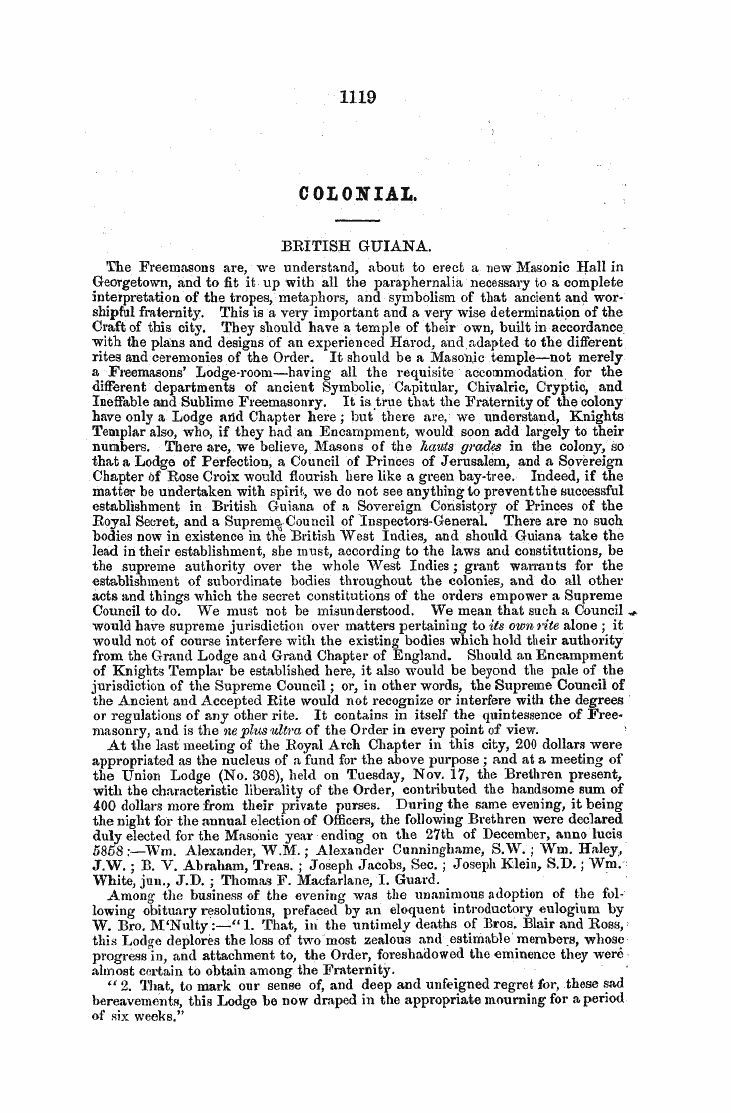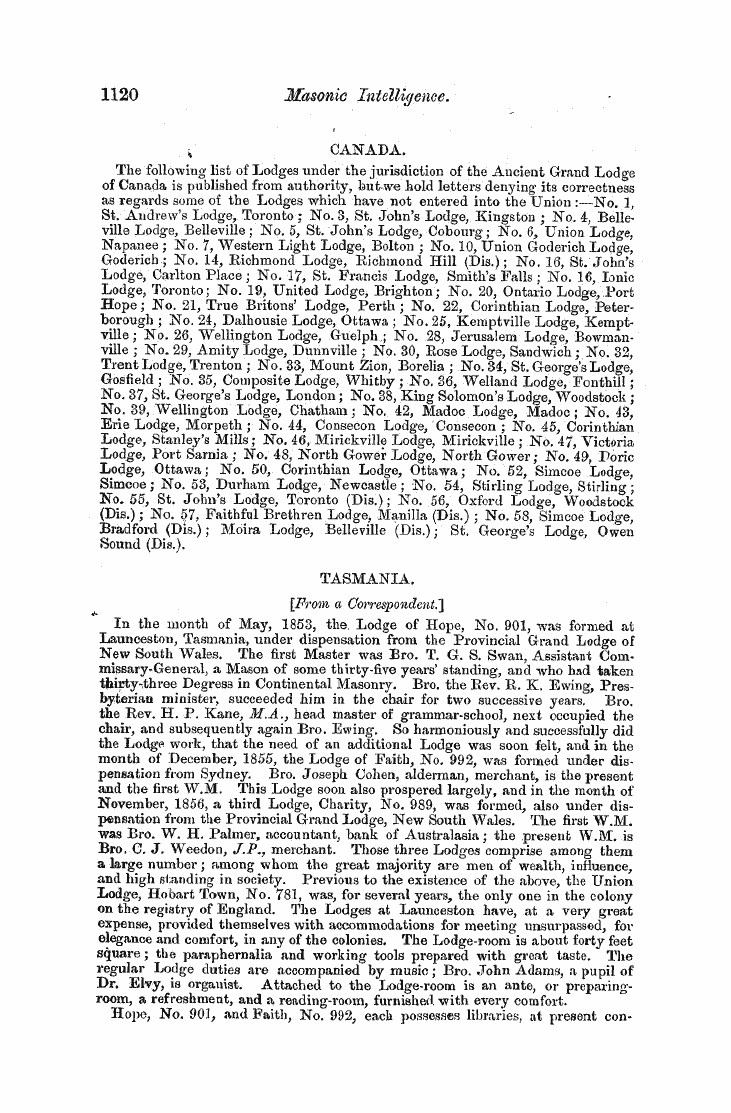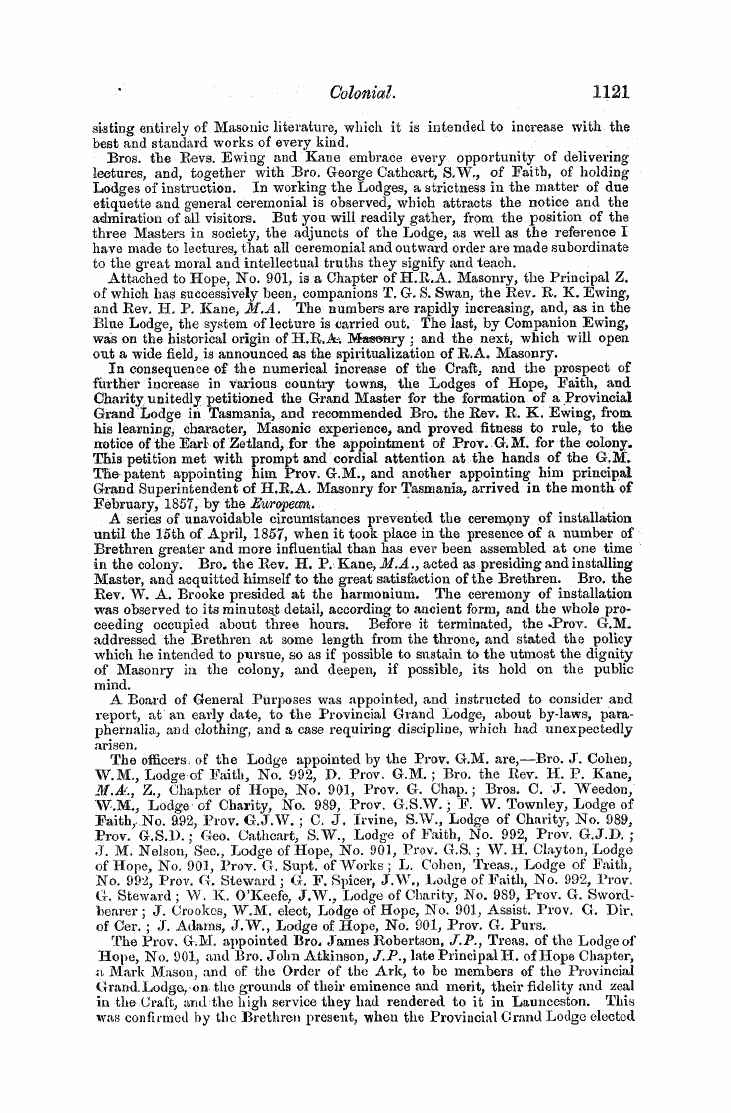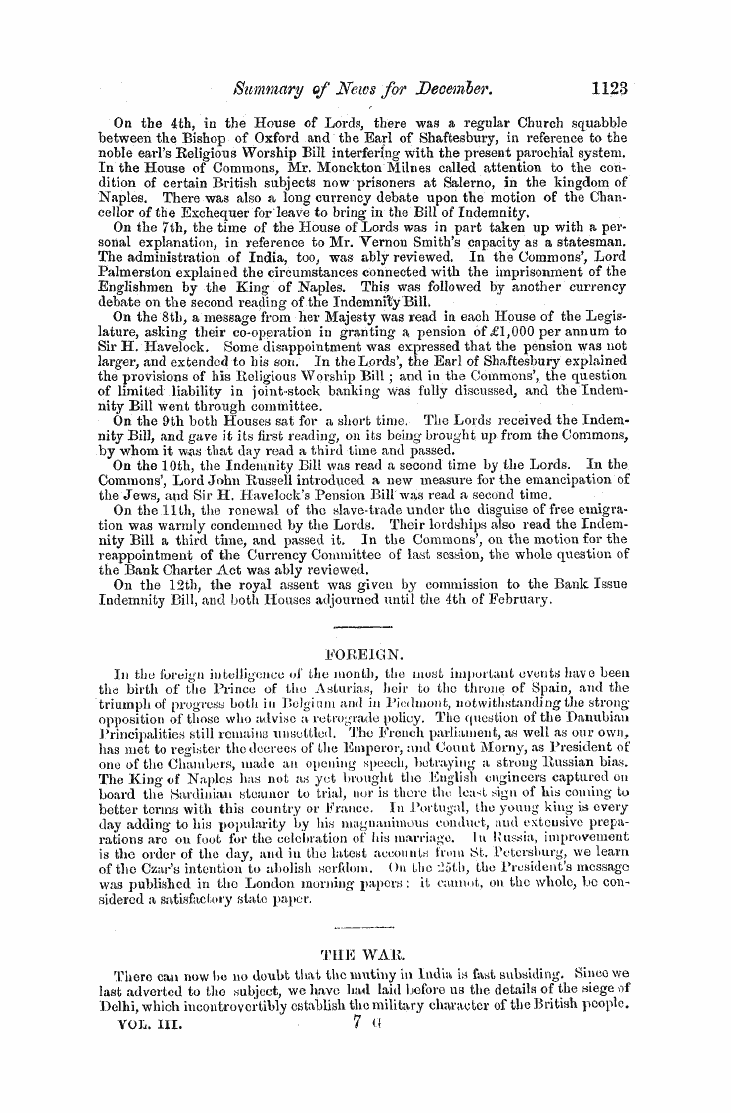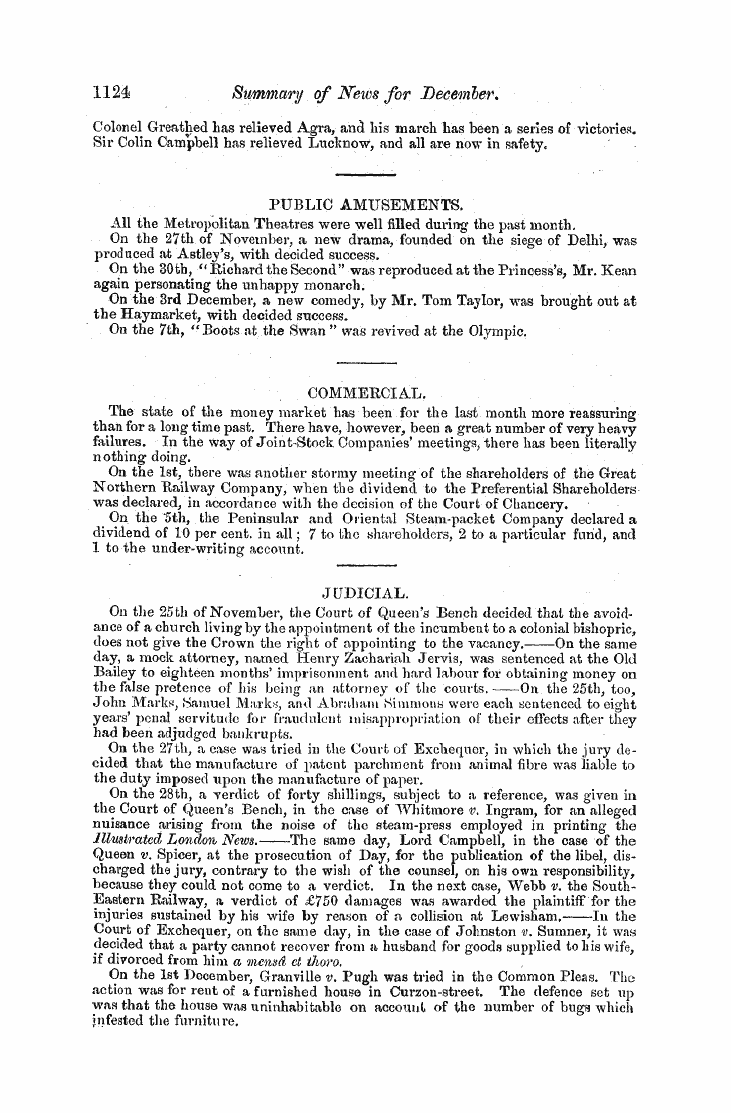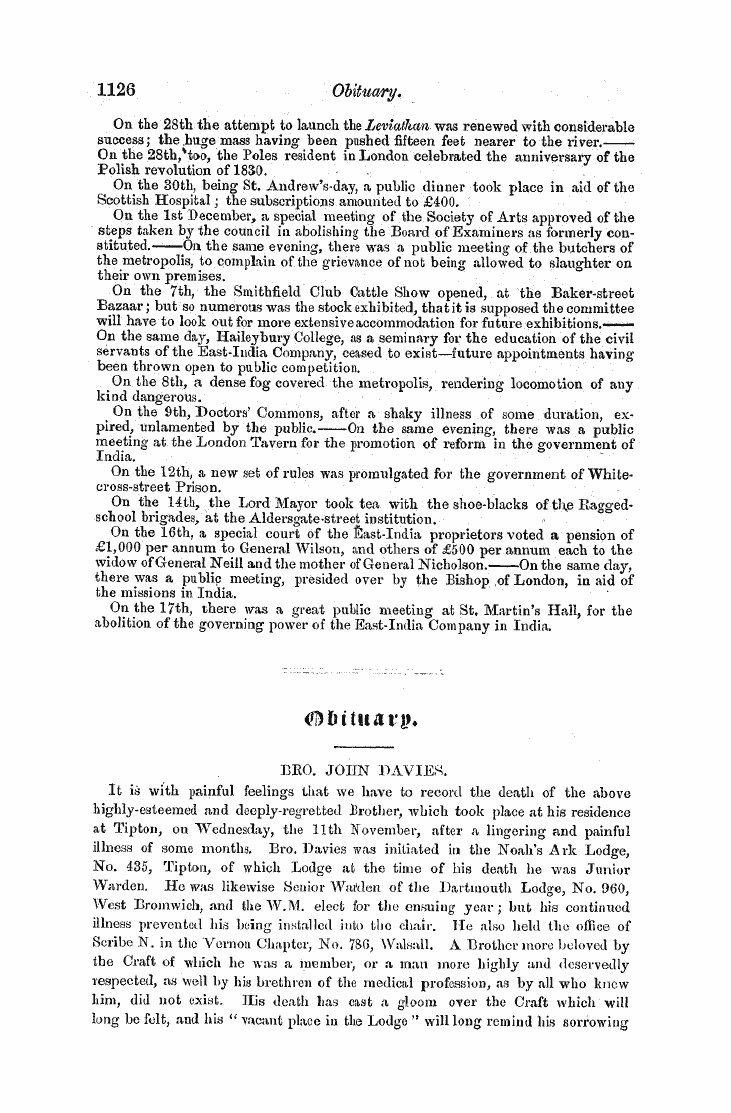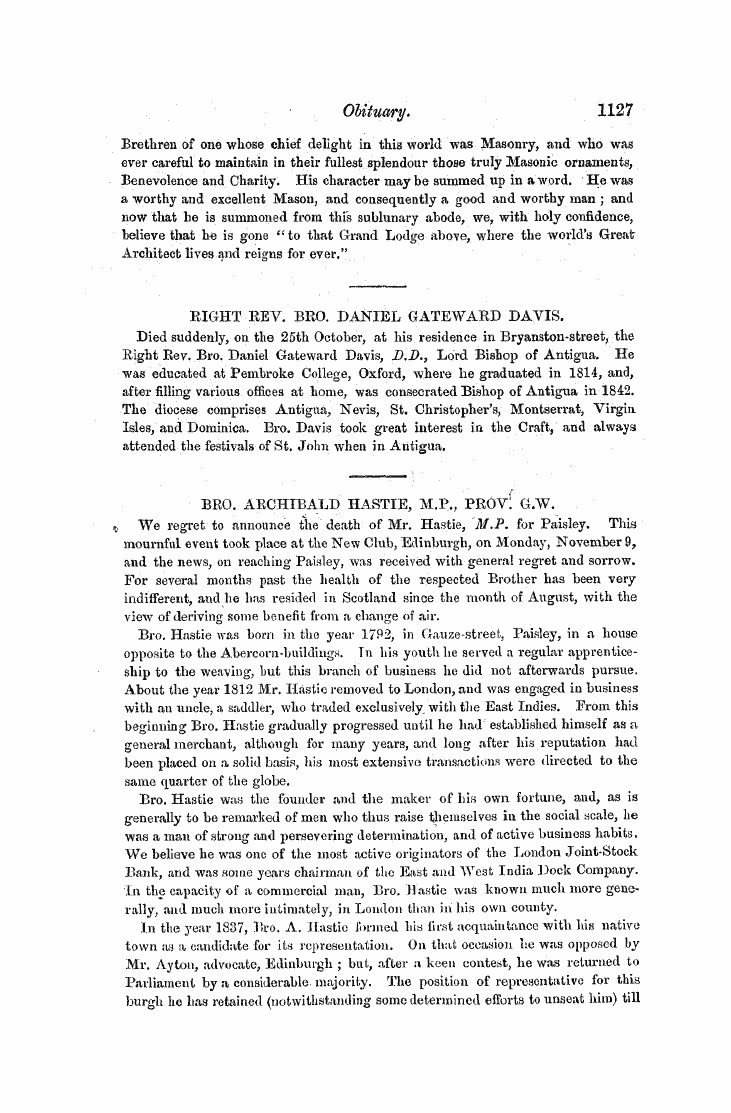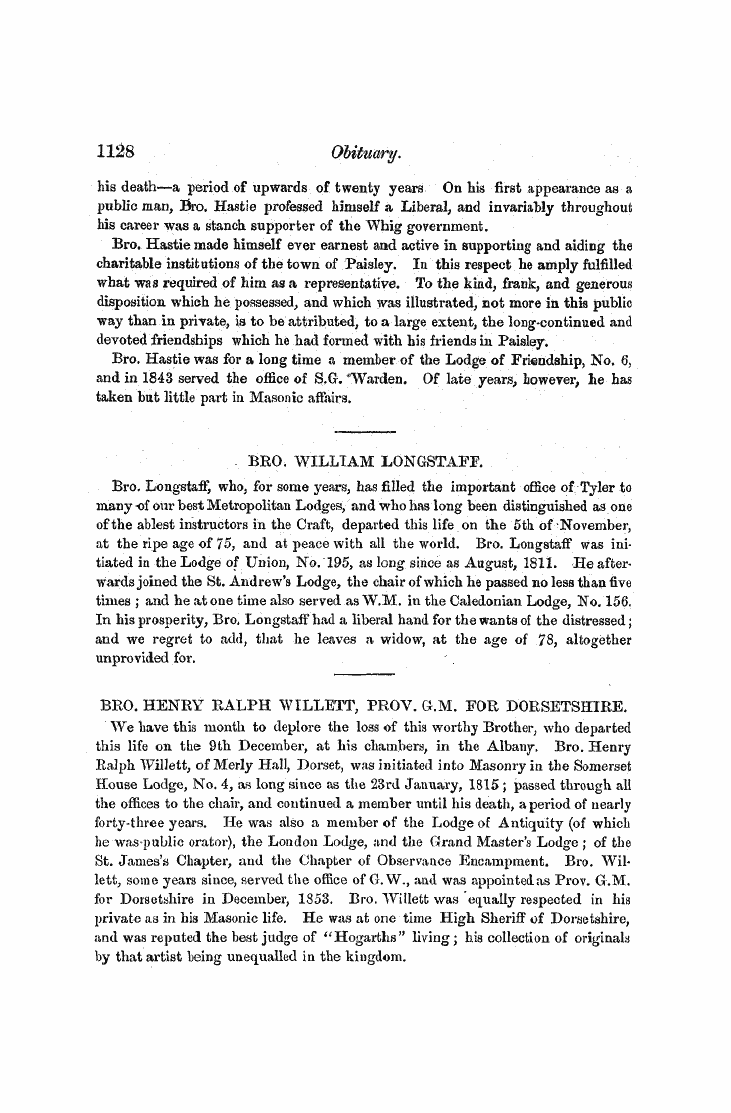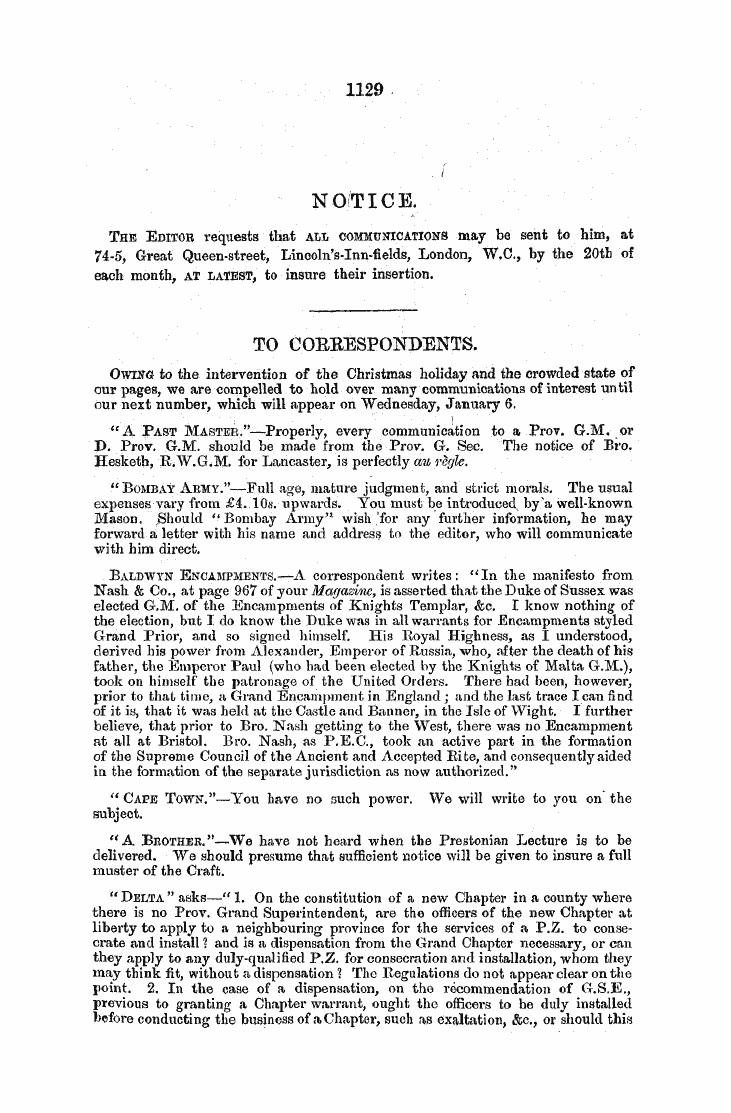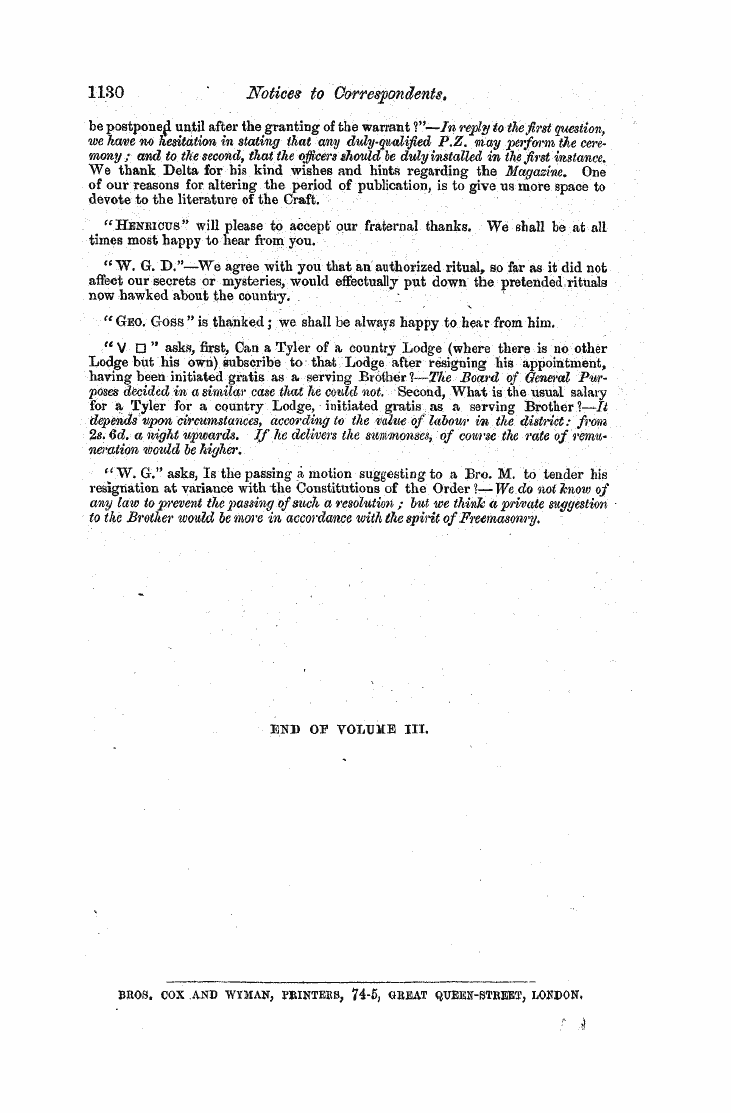Note: This text has been automatically extracted via Optical Character Recognition (OCR) software.
Notice.
NOTICE .
TO COEEESPONDENTS . " The Freemasons * Magazine . '—To enable Subscribers to complete their sets for 1857 , the January number has been reprinted , and may now be had at the office . The "Volume and Covers for 1857 will be ready early in January , 1858 . Correspondents are requested to address their communications direct to the Office , and not to the private house of any Brother . "An Inquirek . "—A New York correspondent , in answer to an inquiry in our September number , says , under date 16 th October : — " Bro . Rob . Morris was in this city up to the 8 th inst ., and started for Kentucky io attend the Grand Lodge of that state , which has been in session at Lexington during the week . .
The Editor requests that all communications may be sent to him , at 74-5 , Great Queen-street , Lincoln ' s-Inmfields , London , W . C ., by the 20 th of each month , at latest , to insure their insertion .
. . Bro . Morris will return to ! N * ew York in the fore part of November , and does not at present contemplate visiting England . " '' . ' " A Young- Mason" asks , " Why is St . John the Evangelist styled ' Our Gh * and Master , St . John ?'"—In no part of either Craft-Masonry or the Holy Royal Arch , as practised in England , is the name of St . John introduced , excepting that in some Lodges , on the occasion of the installation of the W . M ., it is mentioned that the annual election takes place as near the feast of St . John the Evangelist as possible . Prior to the Union in 1813 , we believe most , if not all , Lodges were
dedicated to St . John the Evangelist , and the reason assigned for tbe practice has been thus stated : —From the building of tbe first Temple to the Babylonish Captivity , Lodges were dedicated to King Solomon ; after that time , to Zerubbabel ; and after the destruction of the second Temple by Titus , to John tbe Baptist . It is said that Masonry was then on the decline , for want of a Grand Master ; and a deputation was sent to St . John the Evangelist , then residing at Ephesus , requesting him to accept the office . Although St . John was then above ninety years of age , he returned for answer , that as he had been initiated into the Order
in early life , and desired to see its extension , he would take upon himself the office ; and from that time all Christian Lodges were dedicated to him . This assumption is merely traditional ; the more plausible theory , we think , is to be found in the custom of the annual installation of the W . M ., and festival of all Lodges , taking place at or near the summer or winter solstice ; the 21 st of June being the festival of St . John the Baptist , the 21 st of December that of St . John the Evangelist . The Knights of St . John , and the Templars , who still preserve the memory of St . John the Evangelist in their ceremonial , doubtless aided , if
they did not originate , the use of the name of u the beloved disciple , ' as the patron of the Order . Those sections of Freemasonry were much practised prior to the Union , and probably their influence might have extended itself to Craft Lodges , as Jews were not admitted into their Lodges , the Jewish Lodges being confined to members of their own body— a more truly Masonic principle now prevailing , of all sects of religionists meeting in common on neutral ground , where theological discussions or differences on points of faith are never allowed to intrude .
We perceive that a new edition of the " History of Freemasonry and the Grand Lodge of Scotland " ( first published in 1804 ) is preparing for the press , bv Bro , Laurie , F . S . A ., Secretary of the Grand Lodge of Scotland .
Note: This text has been automatically extracted via Optical Character Recognition (OCR) software.
Notice.
NOTICE .
TO COEEESPONDENTS . " The Freemasons * Magazine . '—To enable Subscribers to complete their sets for 1857 , the January number has been reprinted , and may now be had at the office . The "Volume and Covers for 1857 will be ready early in January , 1858 . Correspondents are requested to address their communications direct to the Office , and not to the private house of any Brother . "An Inquirek . "—A New York correspondent , in answer to an inquiry in our September number , says , under date 16 th October : — " Bro . Rob . Morris was in this city up to the 8 th inst ., and started for Kentucky io attend the Grand Lodge of that state , which has been in session at Lexington during the week . .
The Editor requests that all communications may be sent to him , at 74-5 , Great Queen-street , Lincoln ' s-Inmfields , London , W . C ., by the 20 th of each month , at latest , to insure their insertion .
. . Bro . Morris will return to ! N * ew York in the fore part of November , and does not at present contemplate visiting England . " '' . ' " A Young- Mason" asks , " Why is St . John the Evangelist styled ' Our Gh * and Master , St . John ?'"—In no part of either Craft-Masonry or the Holy Royal Arch , as practised in England , is the name of St . John introduced , excepting that in some Lodges , on the occasion of the installation of the W . M ., it is mentioned that the annual election takes place as near the feast of St . John the Evangelist as possible . Prior to the Union in 1813 , we believe most , if not all , Lodges were
dedicated to St . John the Evangelist , and the reason assigned for tbe practice has been thus stated : —From the building of tbe first Temple to the Babylonish Captivity , Lodges were dedicated to King Solomon ; after that time , to Zerubbabel ; and after the destruction of the second Temple by Titus , to John tbe Baptist . It is said that Masonry was then on the decline , for want of a Grand Master ; and a deputation was sent to St . John the Evangelist , then residing at Ephesus , requesting him to accept the office . Although St . John was then above ninety years of age , he returned for answer , that as he had been initiated into the Order
in early life , and desired to see its extension , he would take upon himself the office ; and from that time all Christian Lodges were dedicated to him . This assumption is merely traditional ; the more plausible theory , we think , is to be found in the custom of the annual installation of the W . M ., and festival of all Lodges , taking place at or near the summer or winter solstice ; the 21 st of June being the festival of St . John the Baptist , the 21 st of December that of St . John the Evangelist . The Knights of St . John , and the Templars , who still preserve the memory of St . John the Evangelist in their ceremonial , doubtless aided , if
they did not originate , the use of the name of u the beloved disciple , ' as the patron of the Order . Those sections of Freemasonry were much practised prior to the Union , and probably their influence might have extended itself to Craft Lodges , as Jews were not admitted into their Lodges , the Jewish Lodges being confined to members of their own body— a more truly Masonic principle now prevailing , of all sects of religionists meeting in common on neutral ground , where theological discussions or differences on points of faith are never allowed to intrude .
We perceive that a new edition of the " History of Freemasonry and the Grand Lodge of Scotland " ( first published in 1804 ) is preparing for the press , bv Bro , Laurie , F . S . A ., Secretary of the Grand Lodge of Scotland .
































































